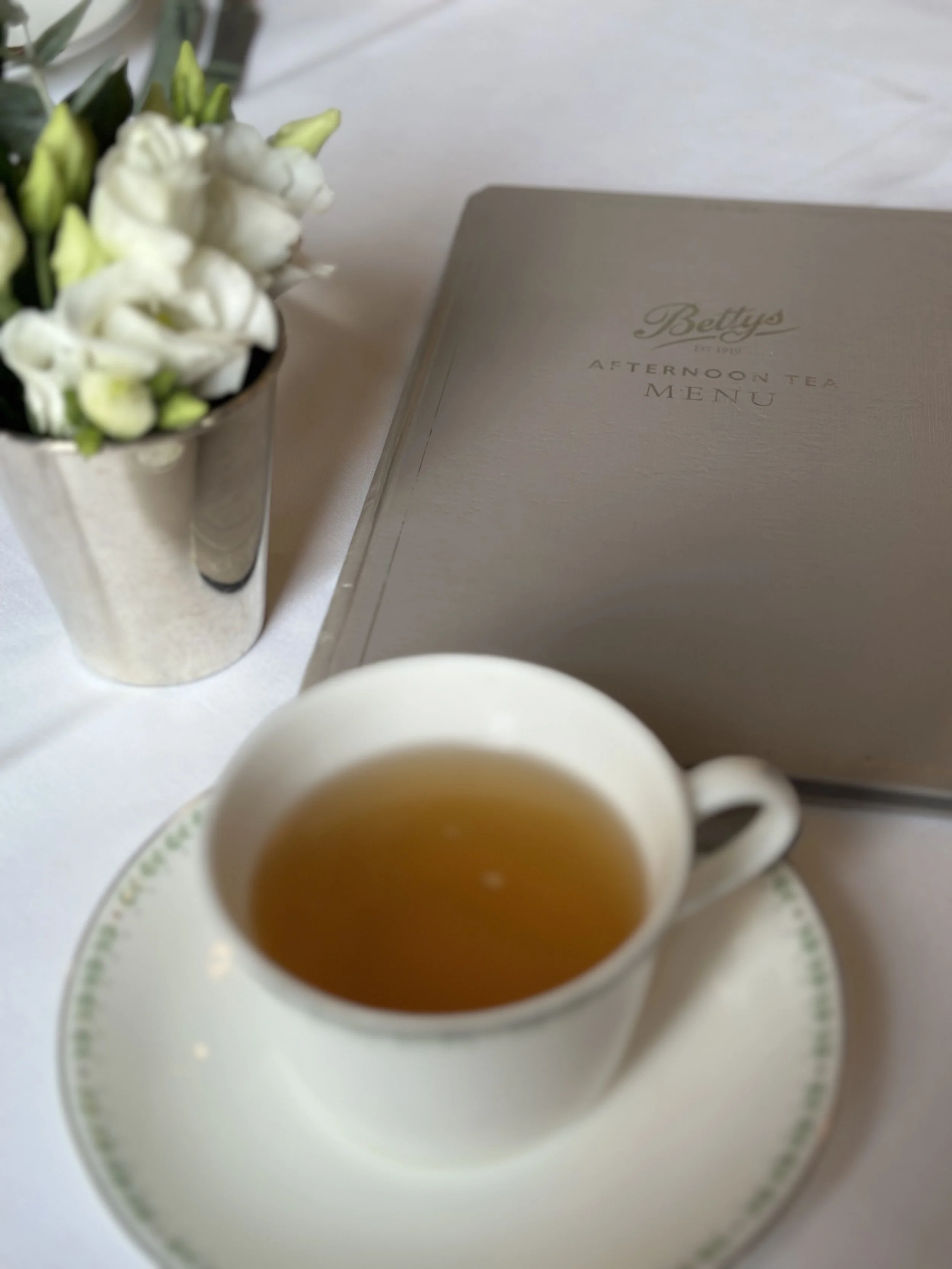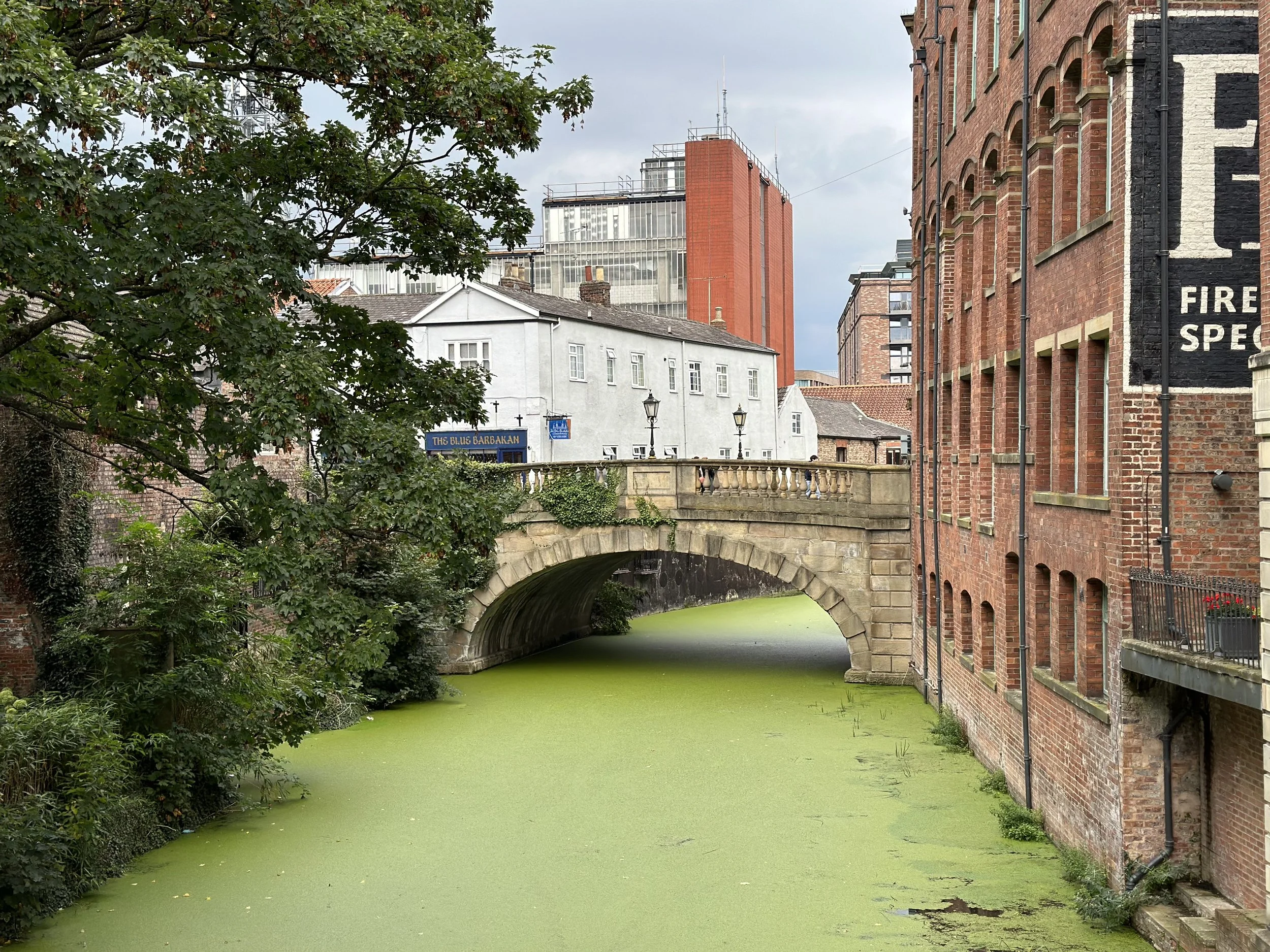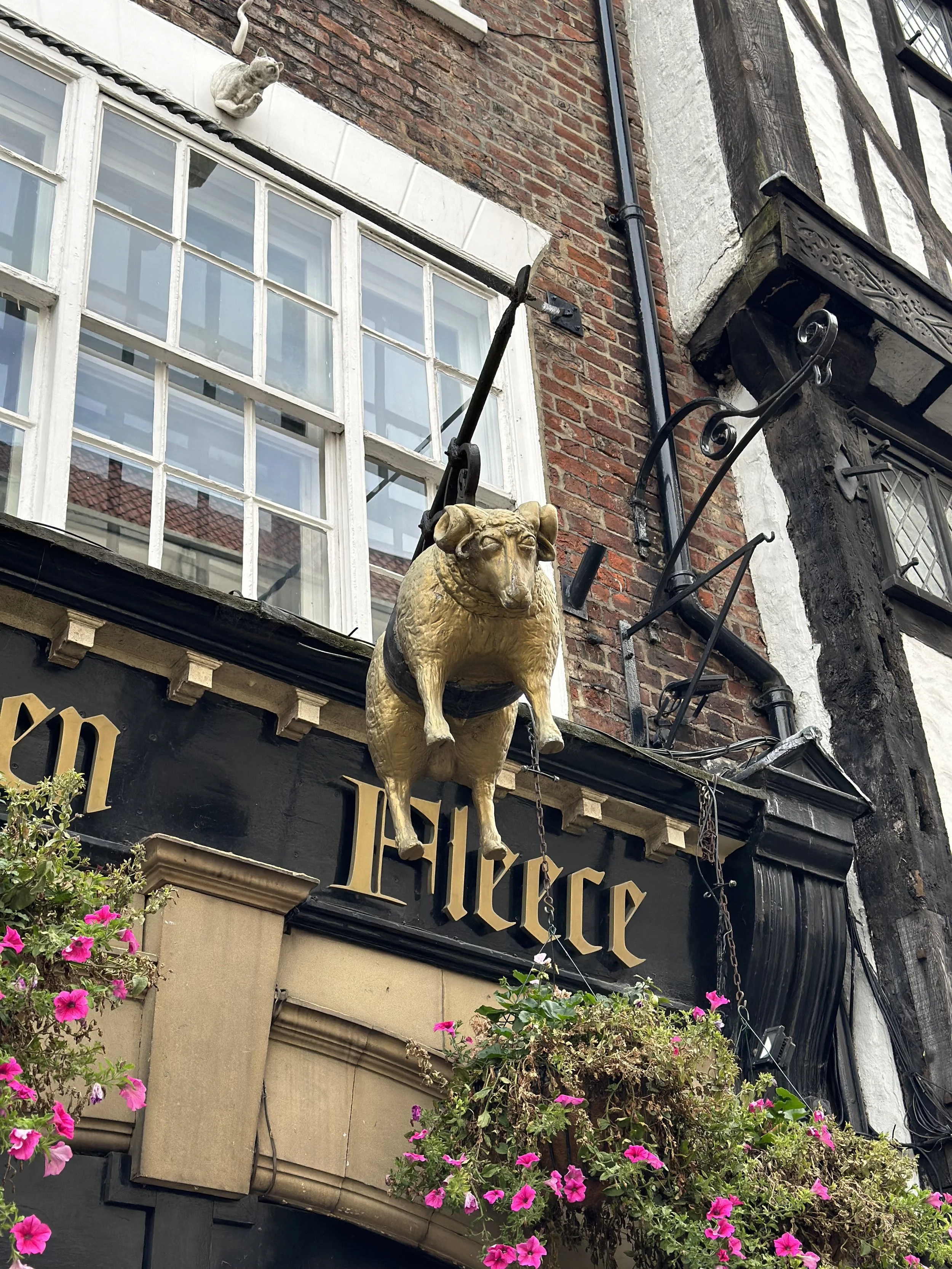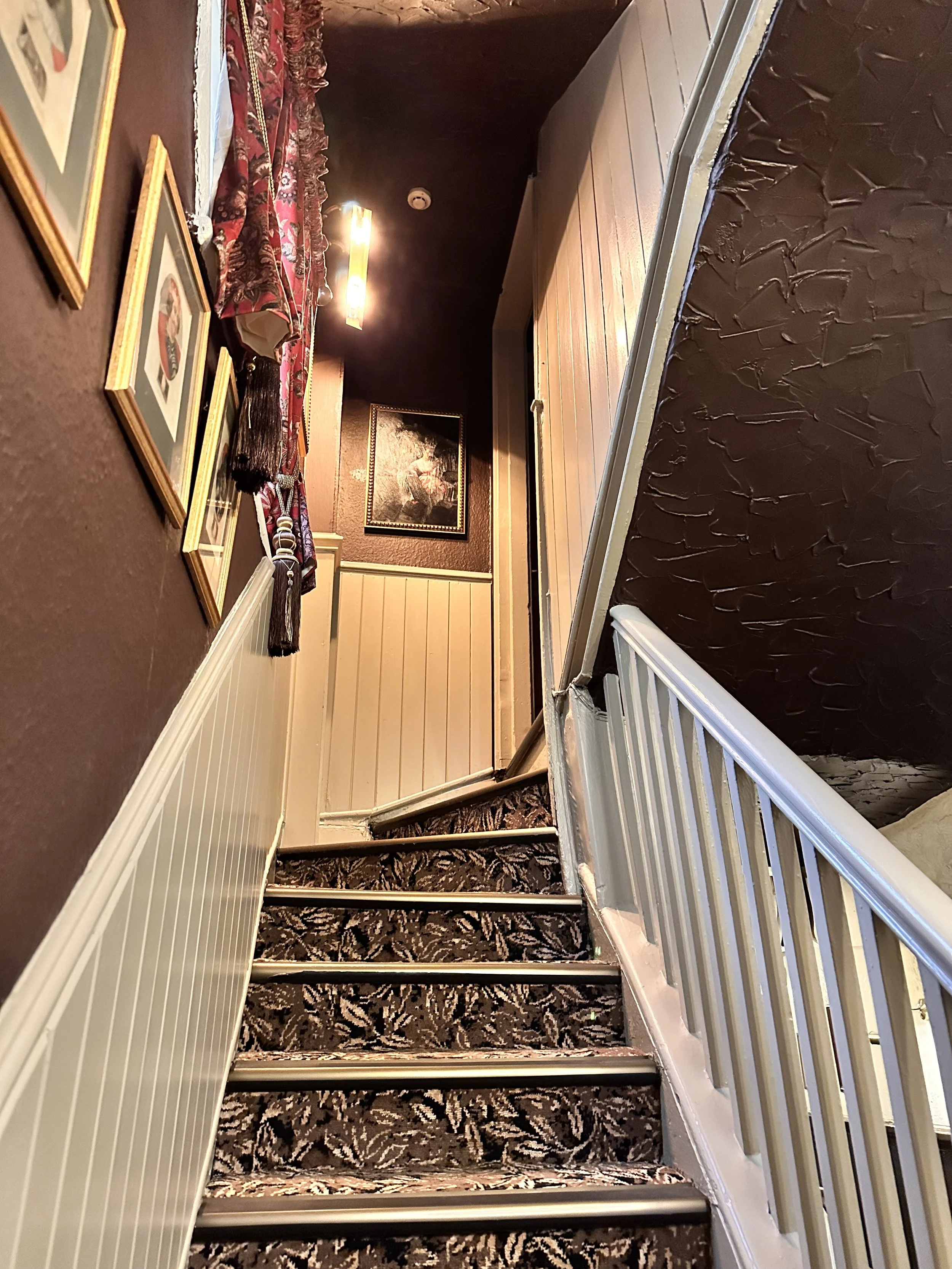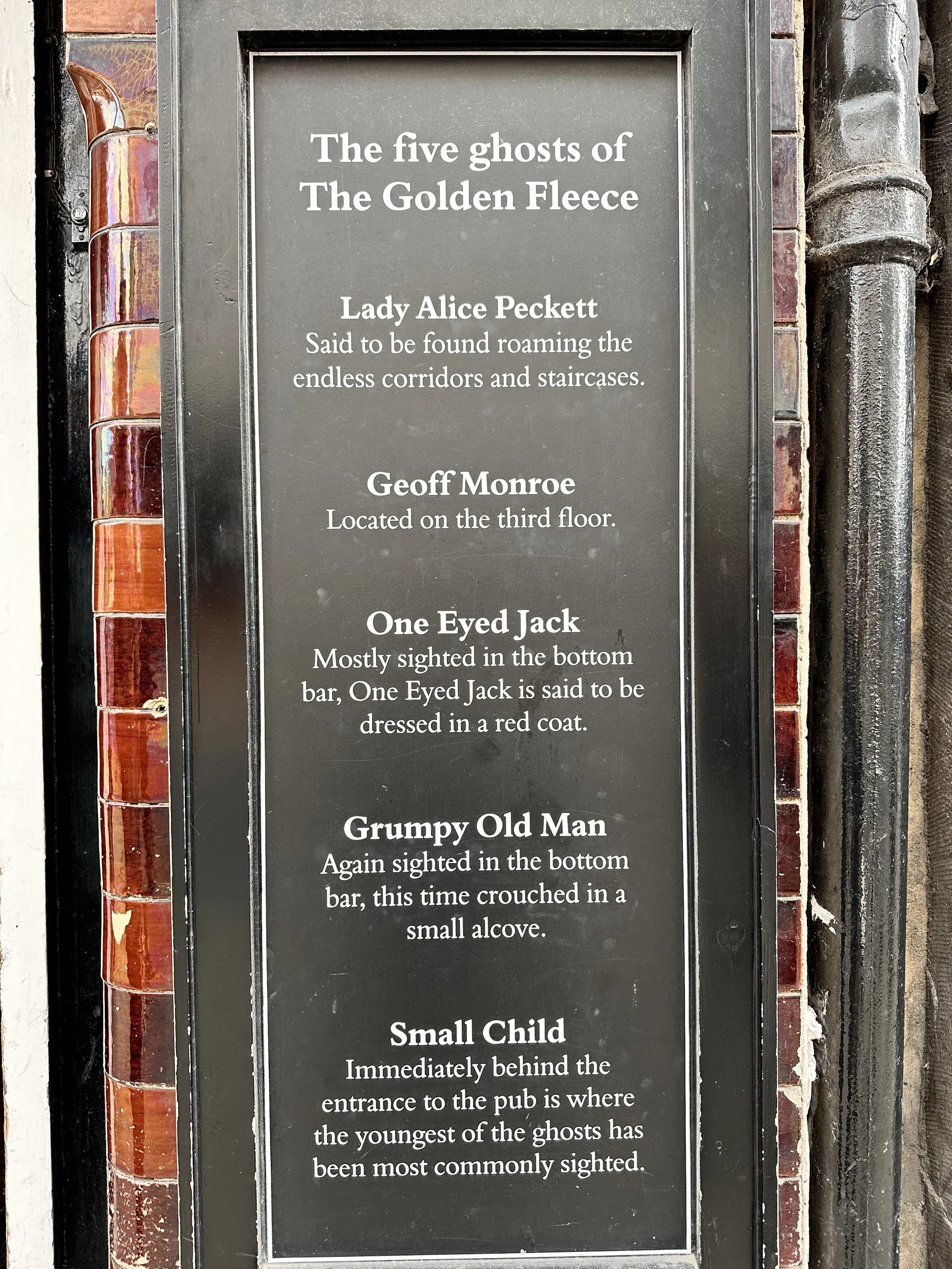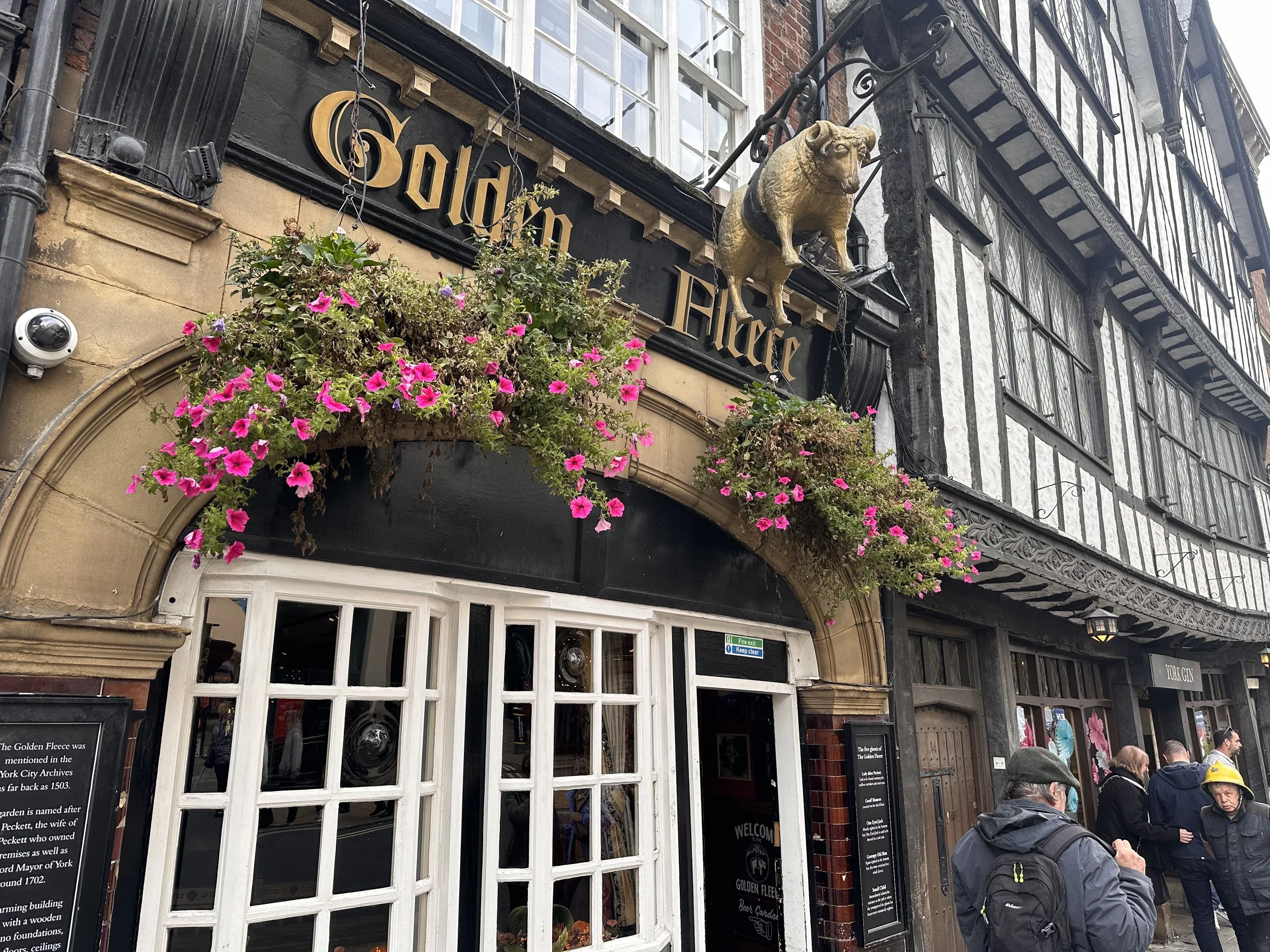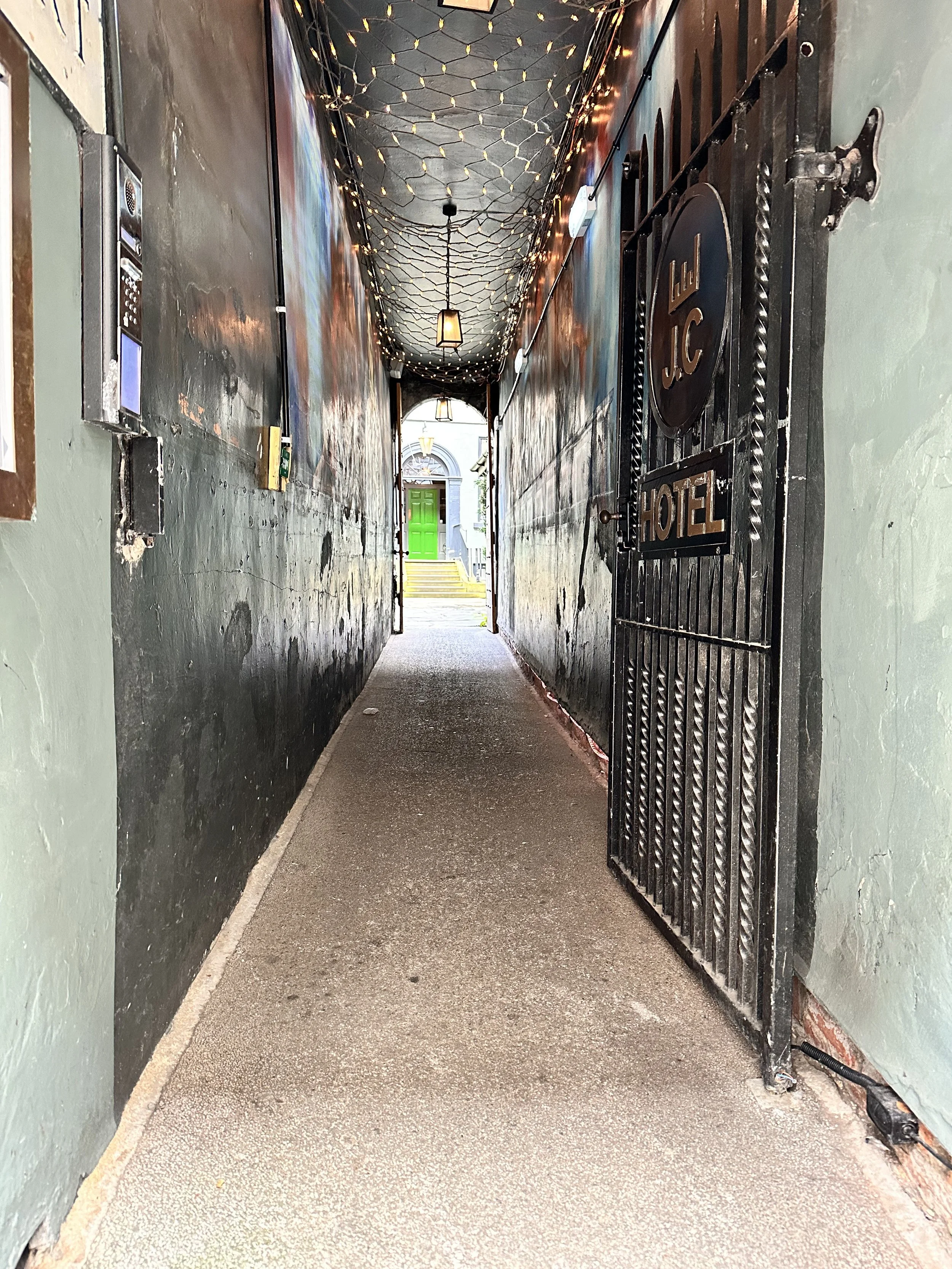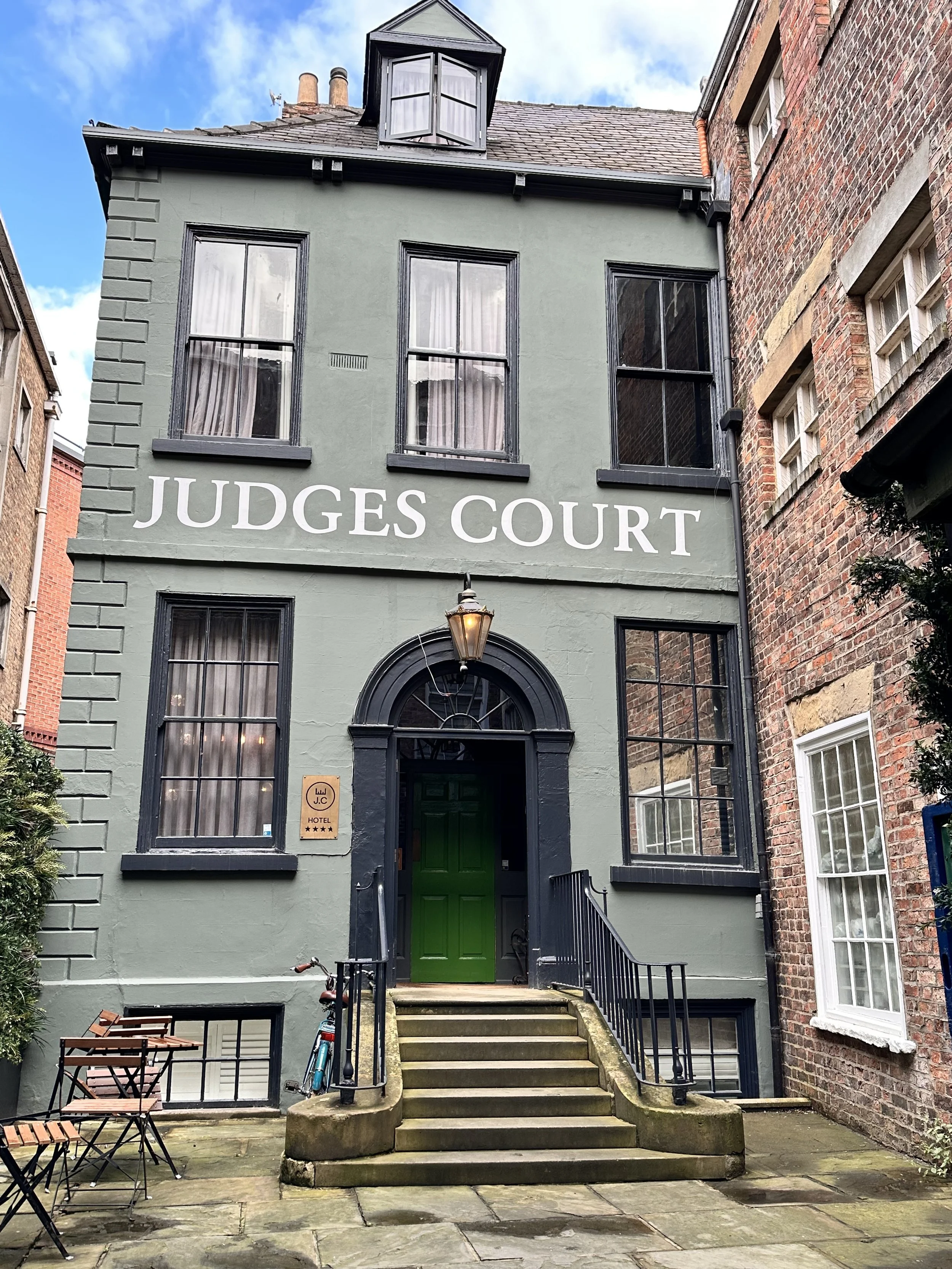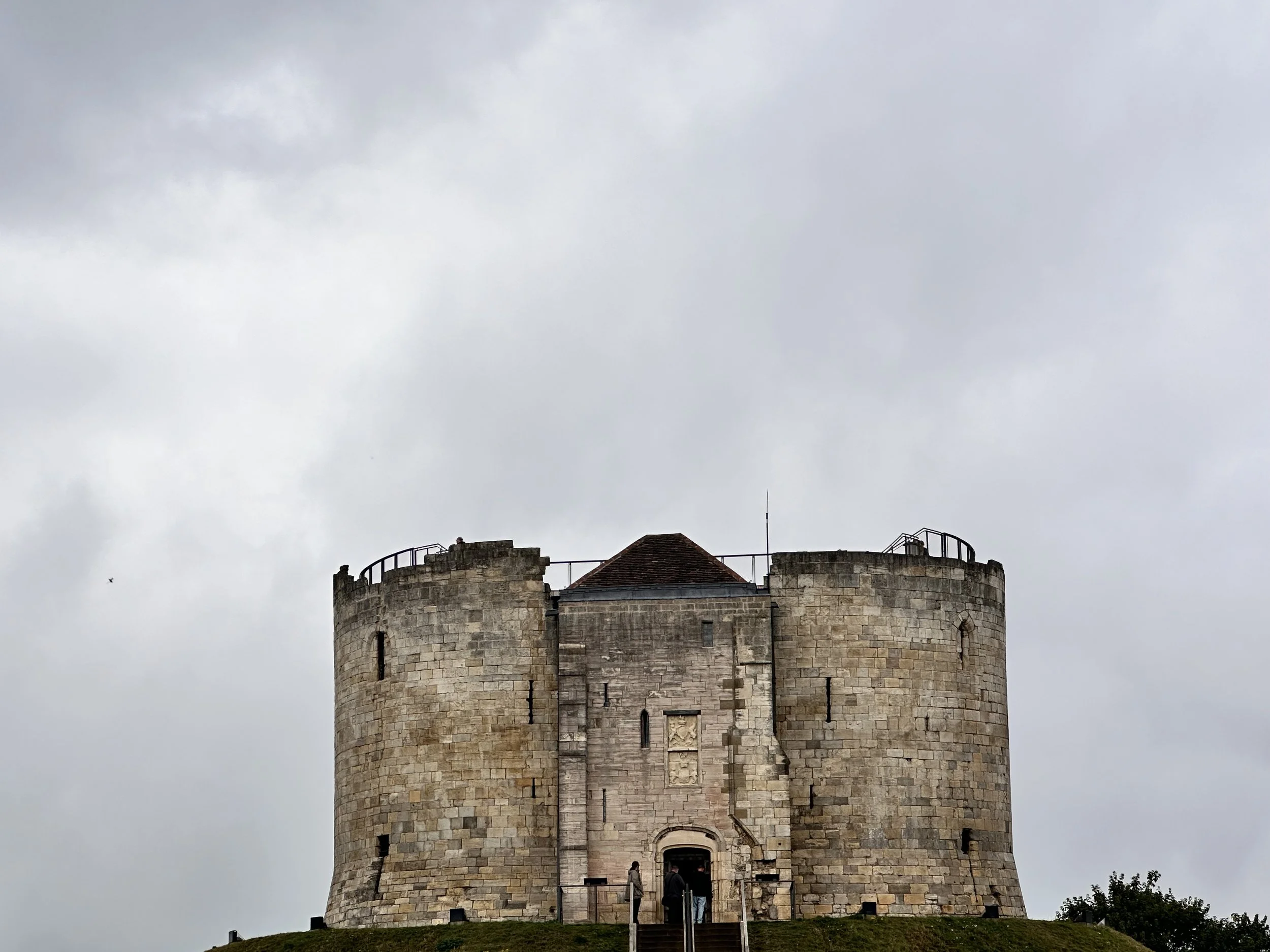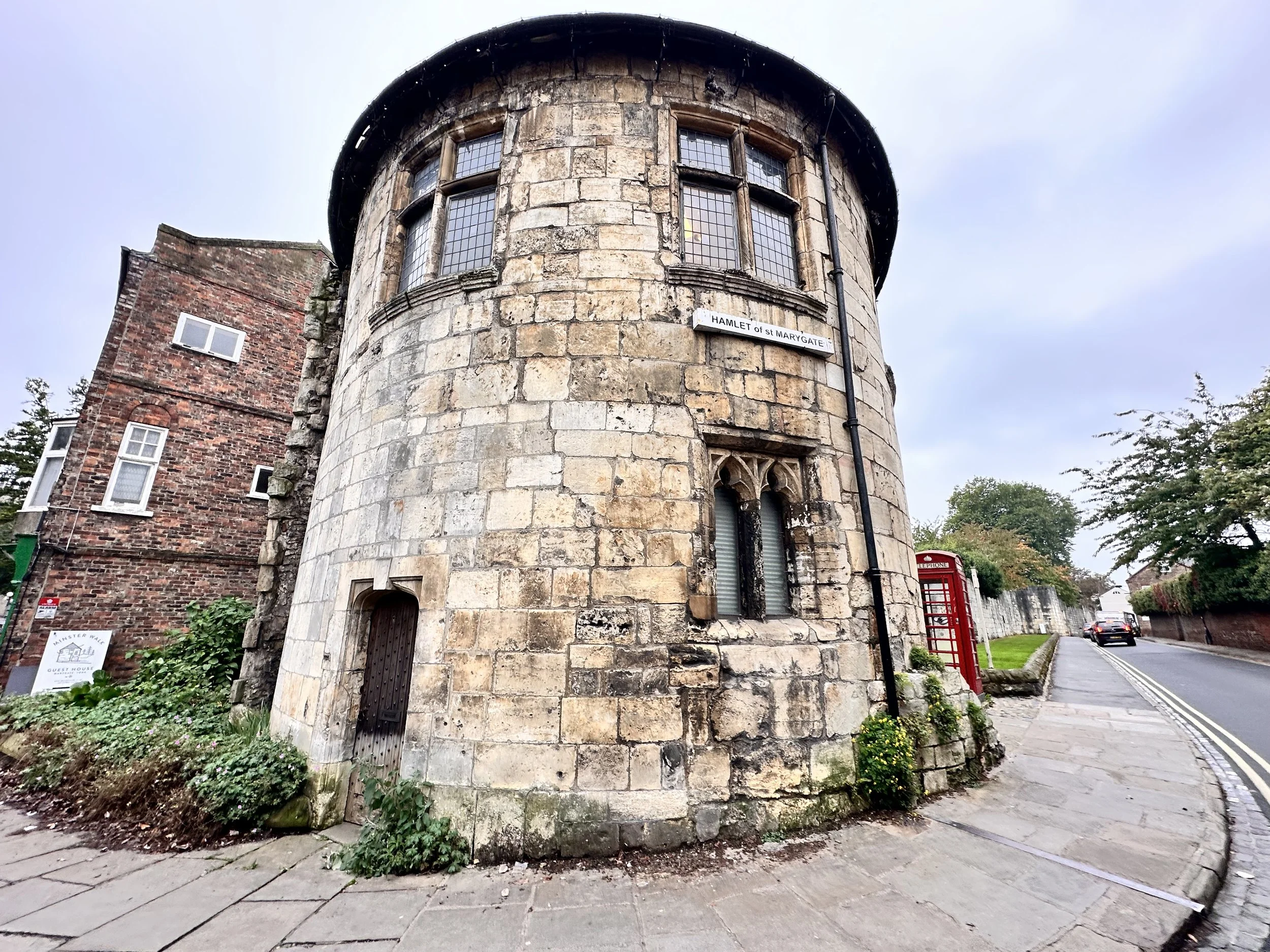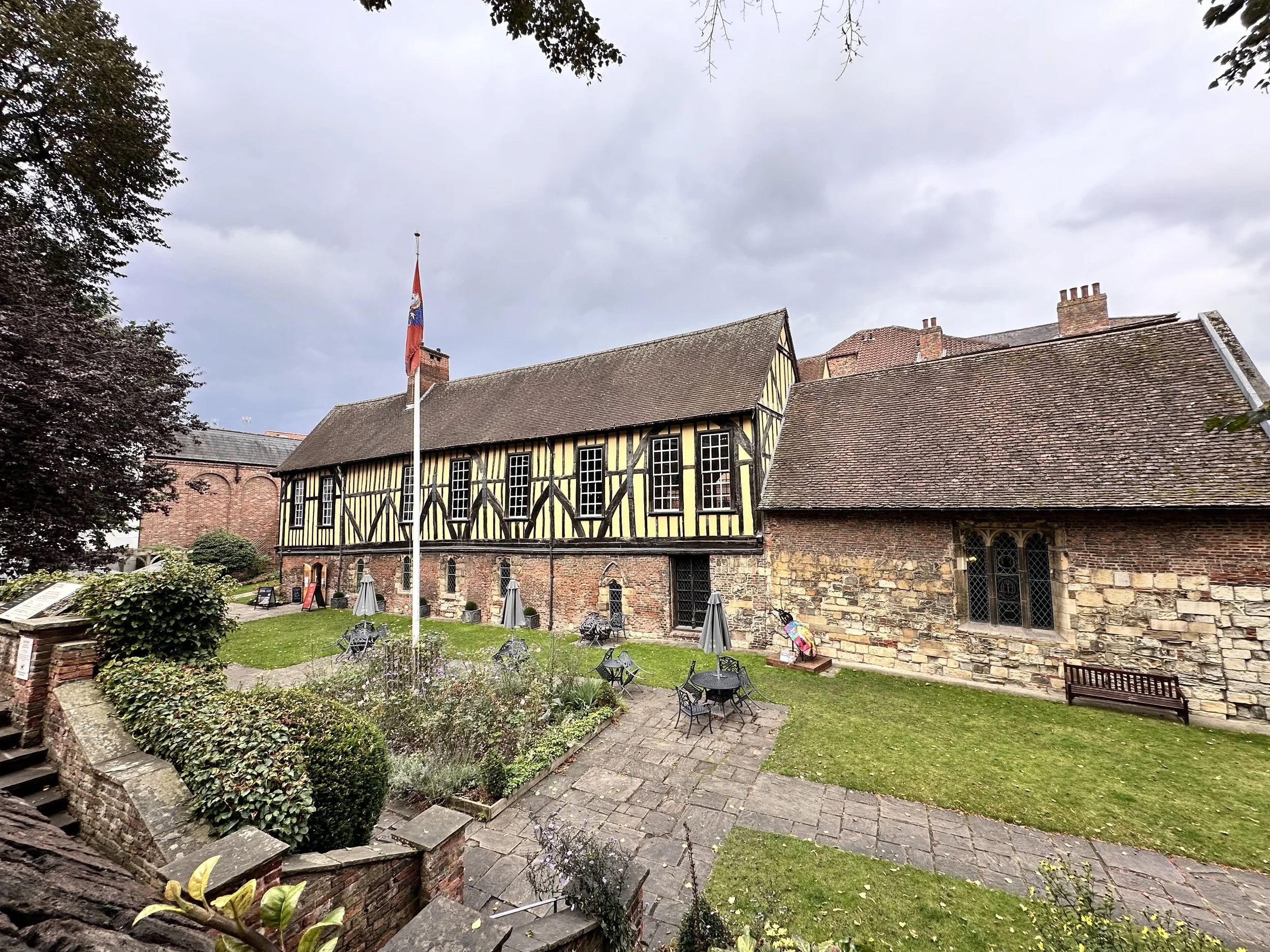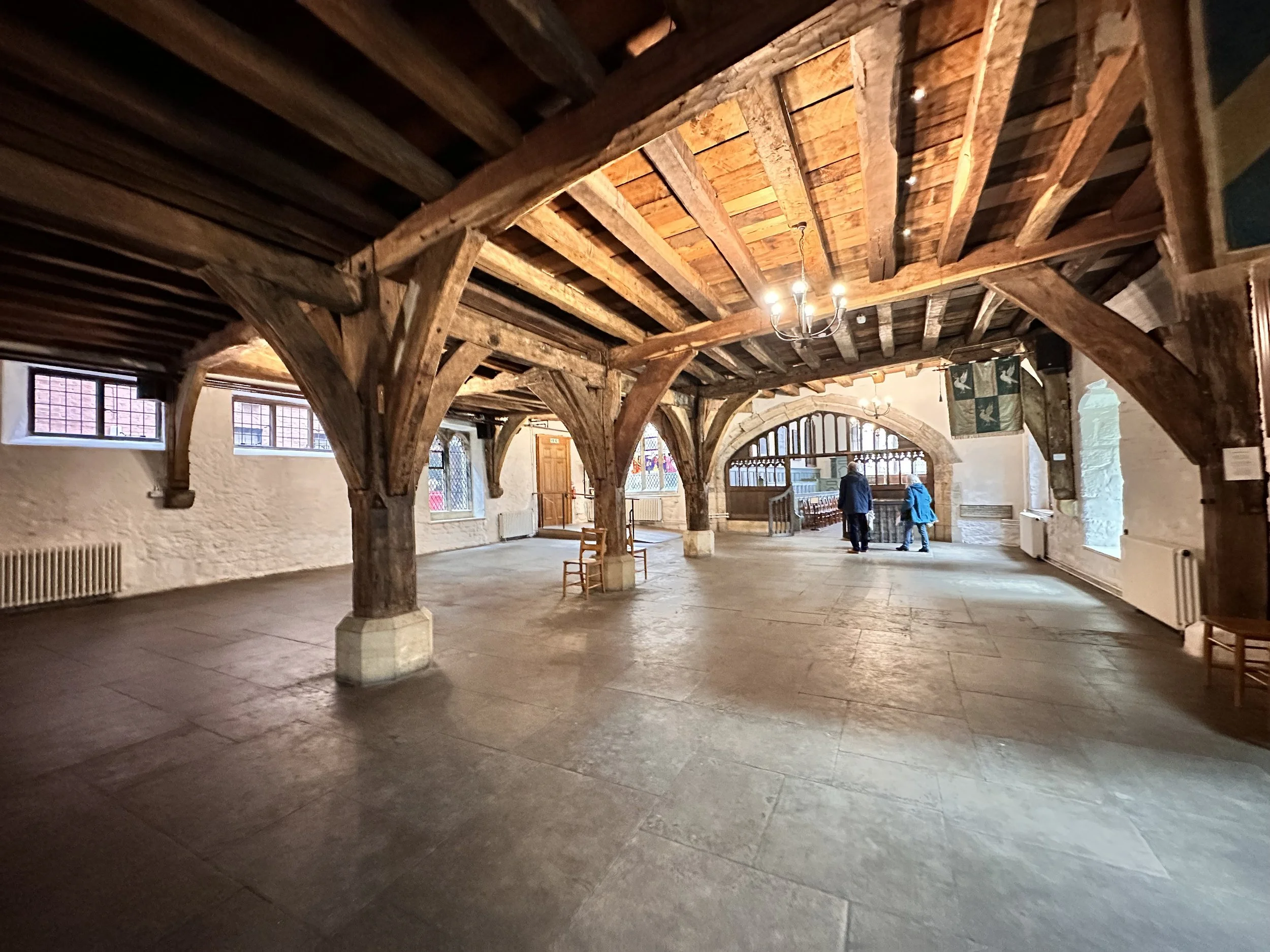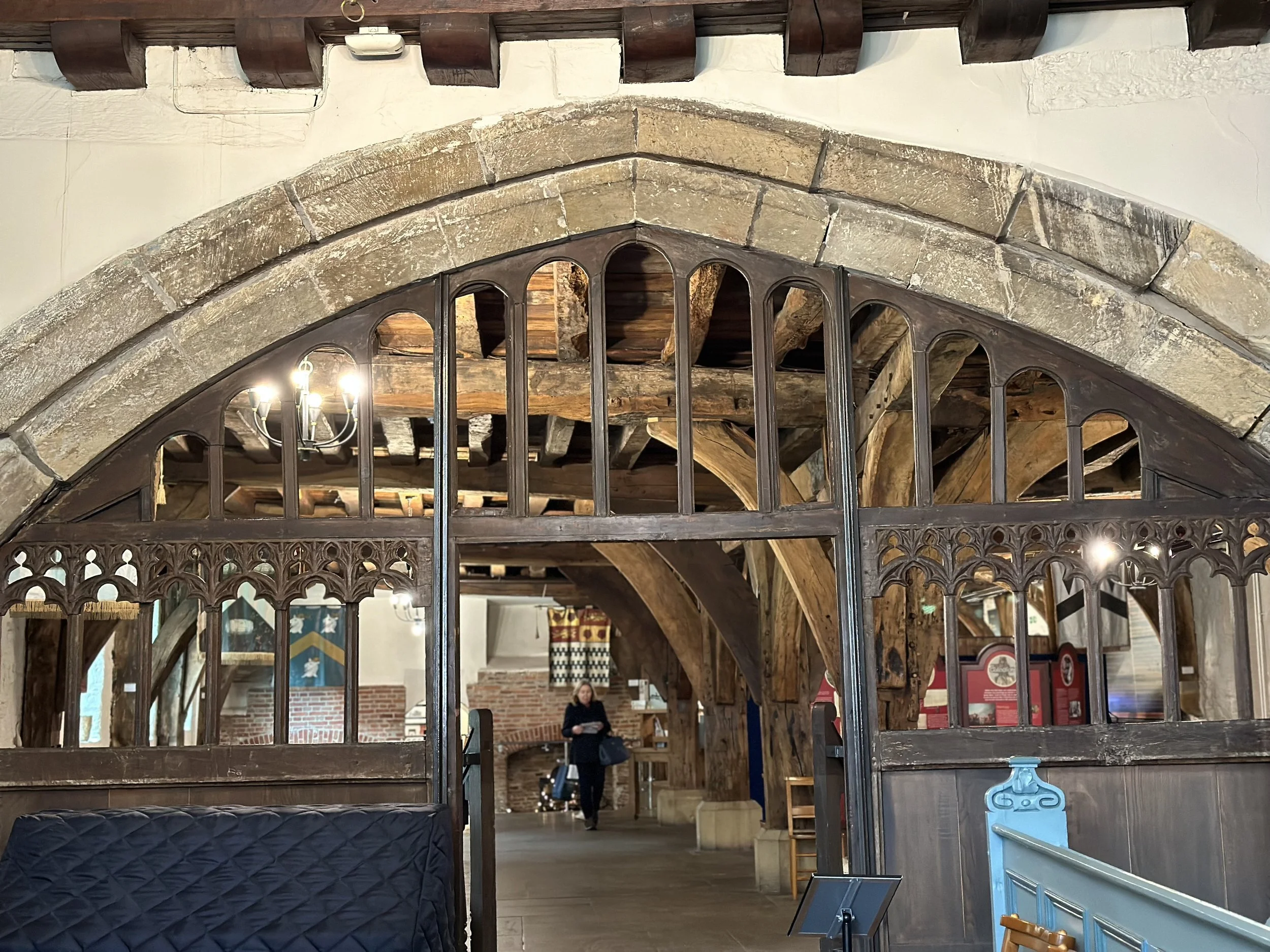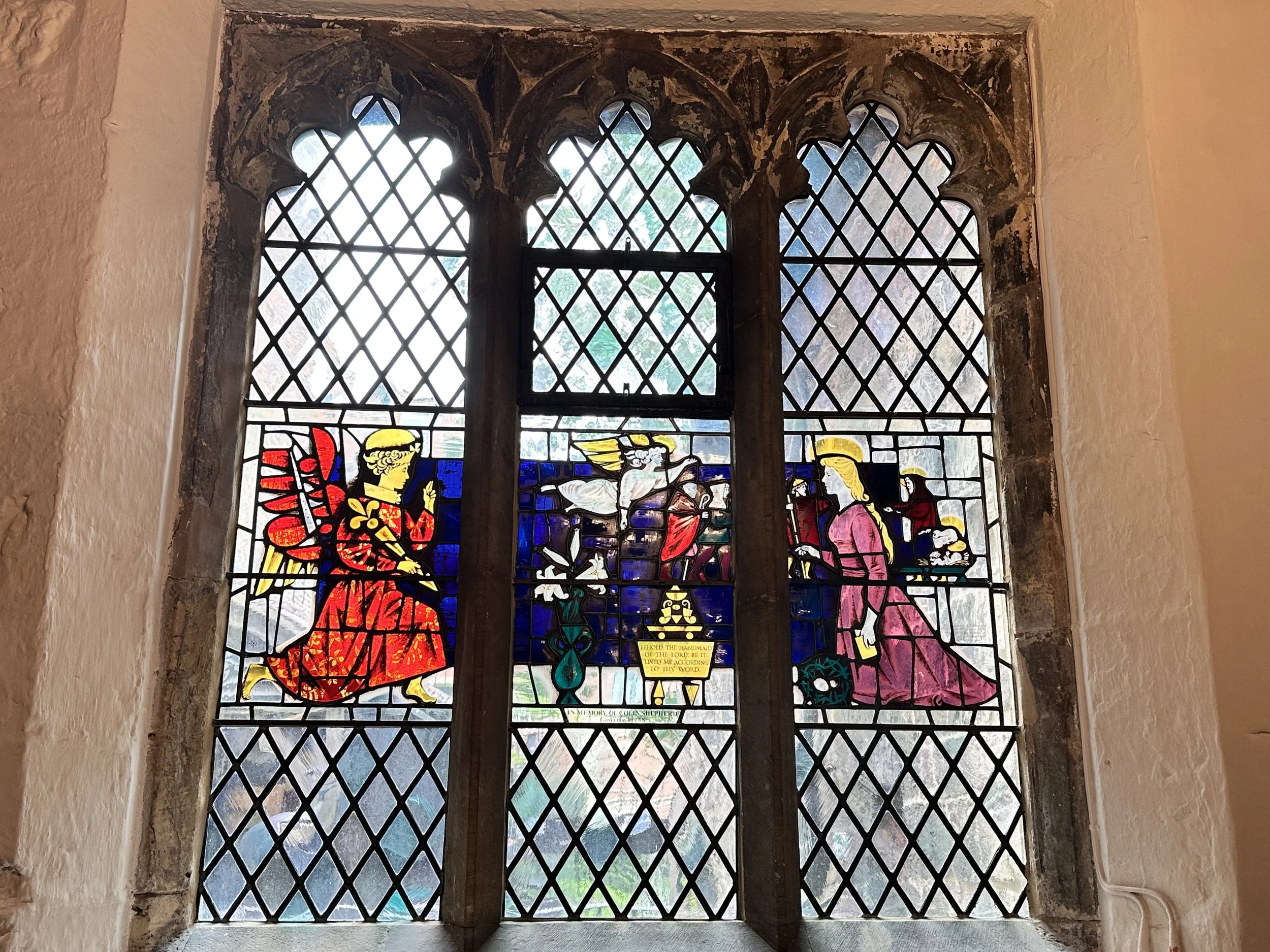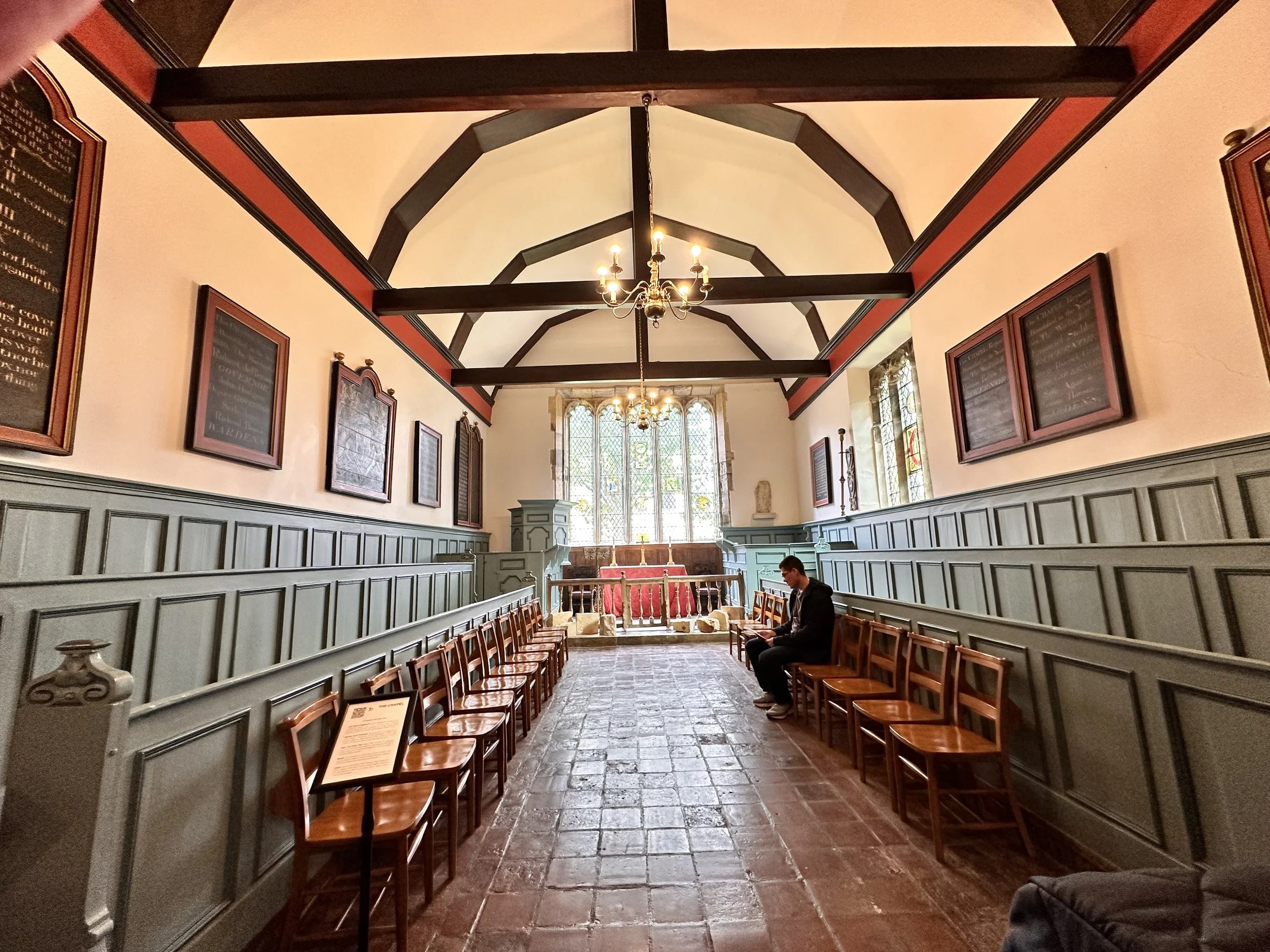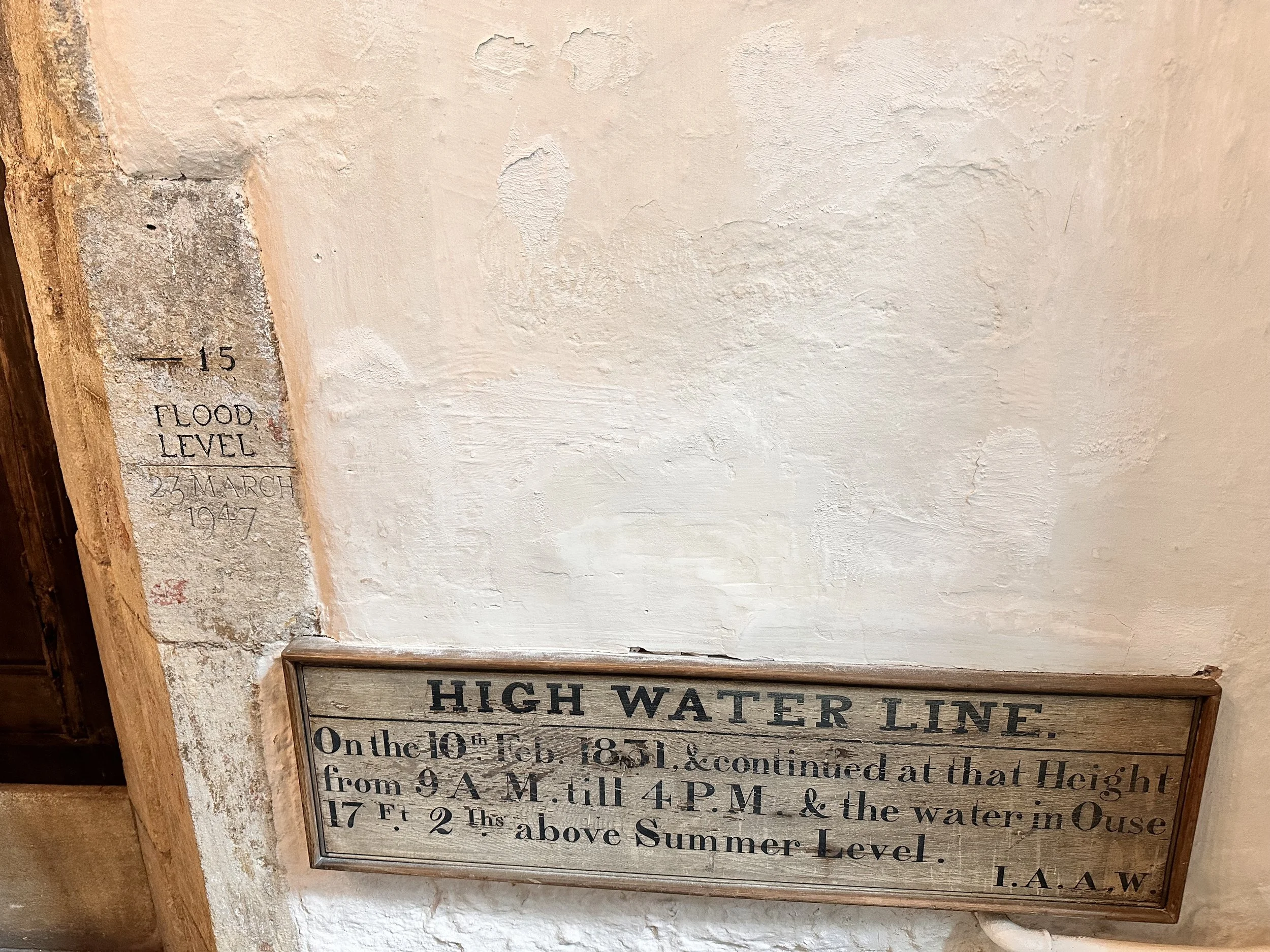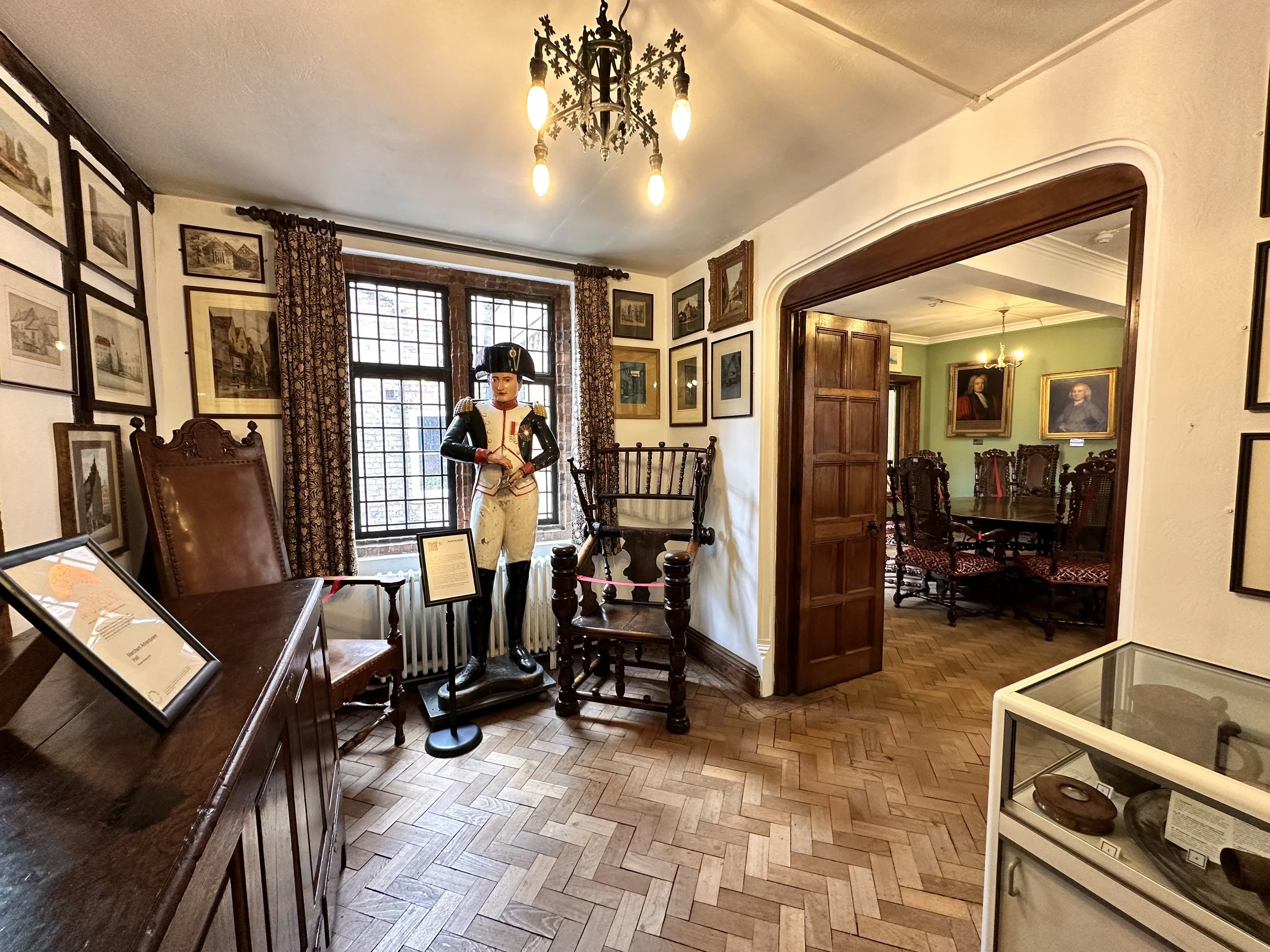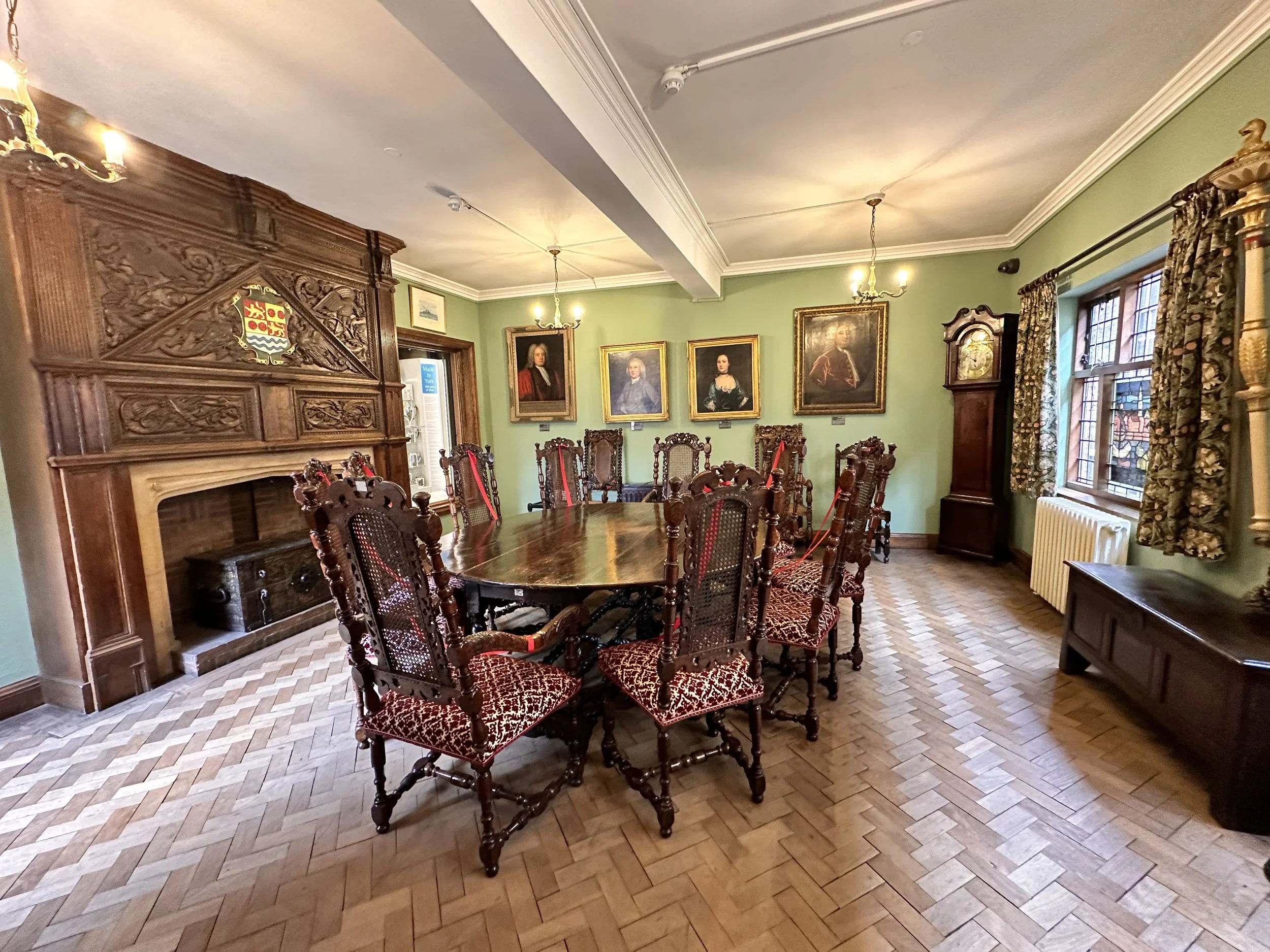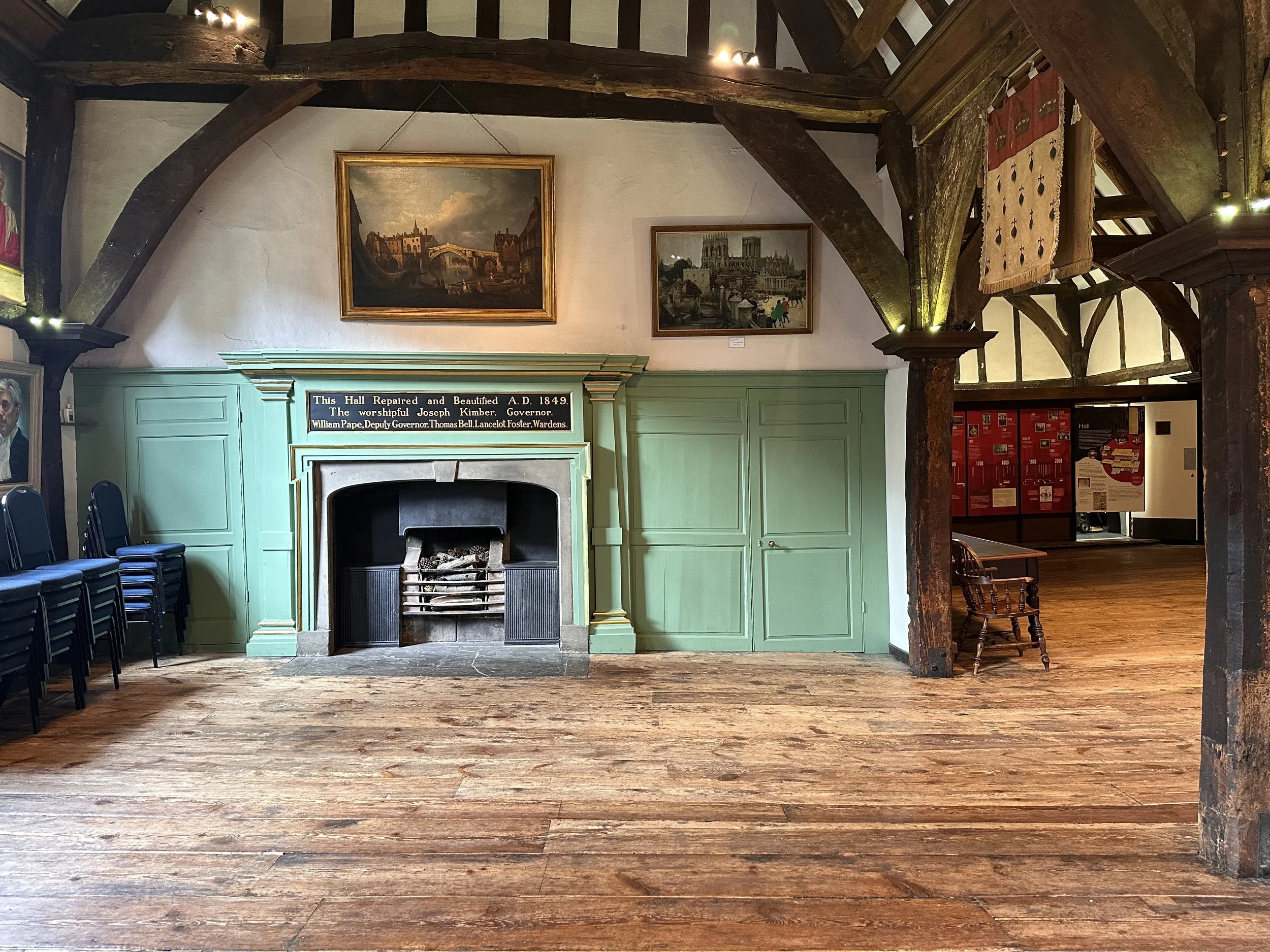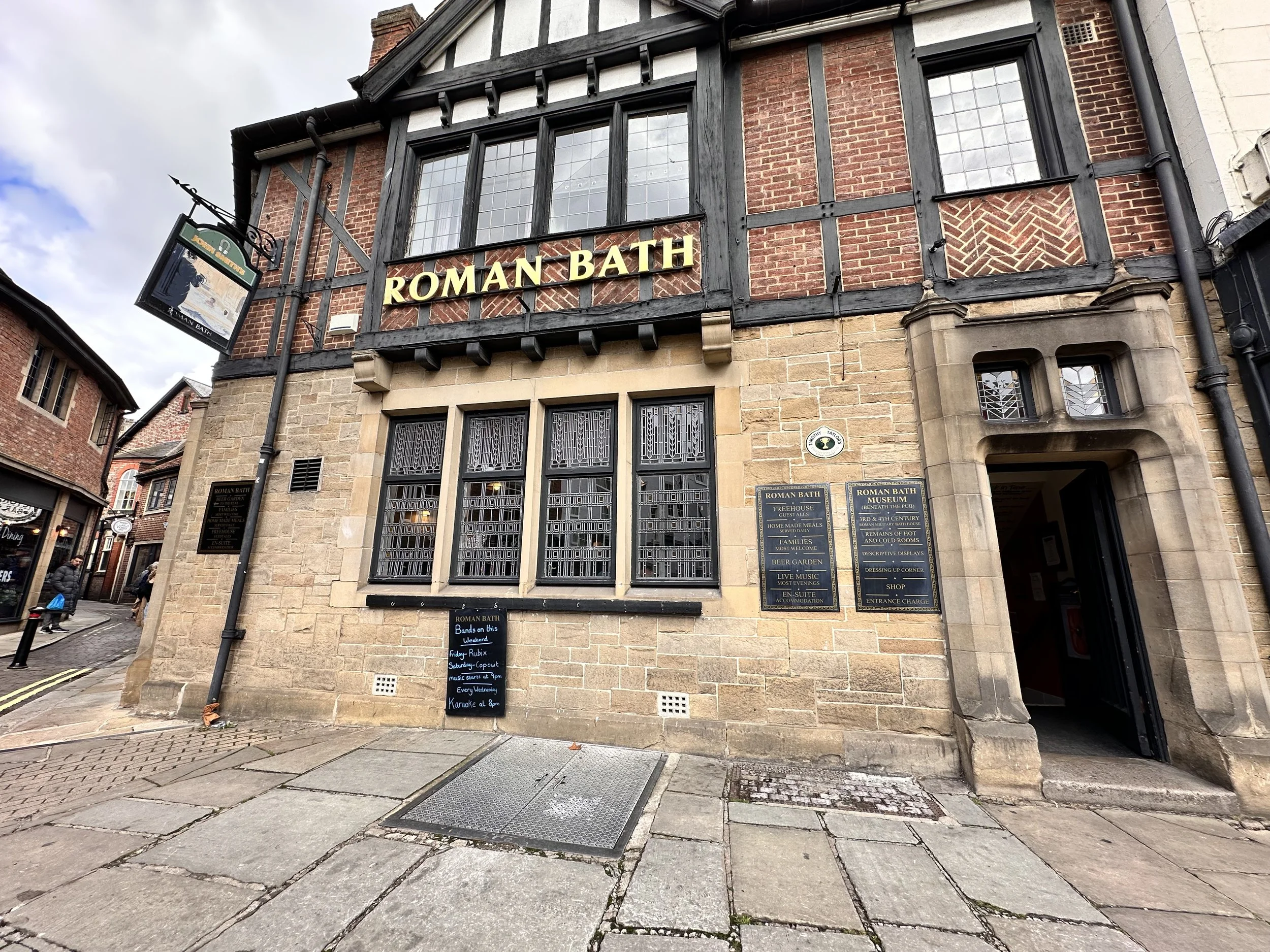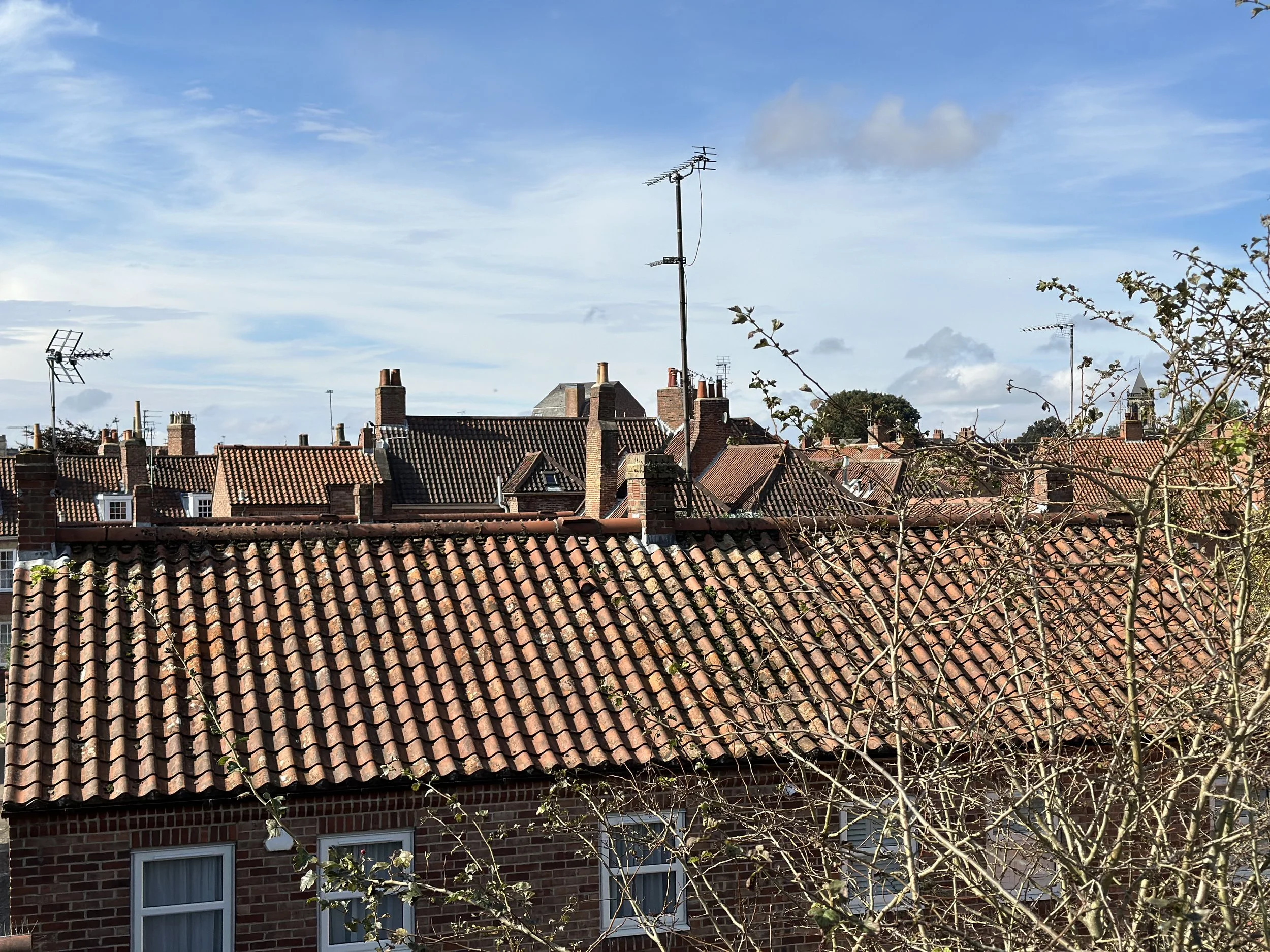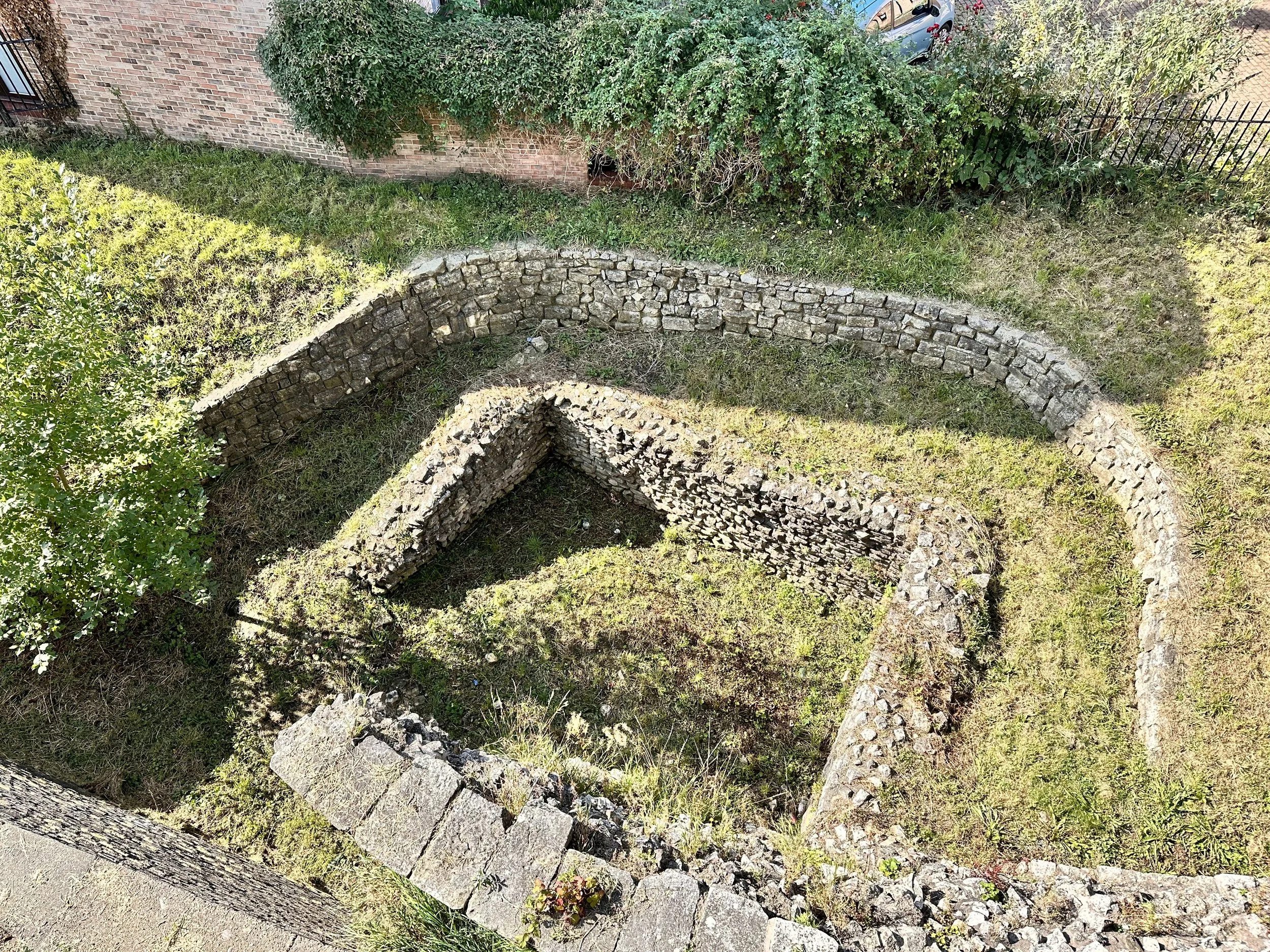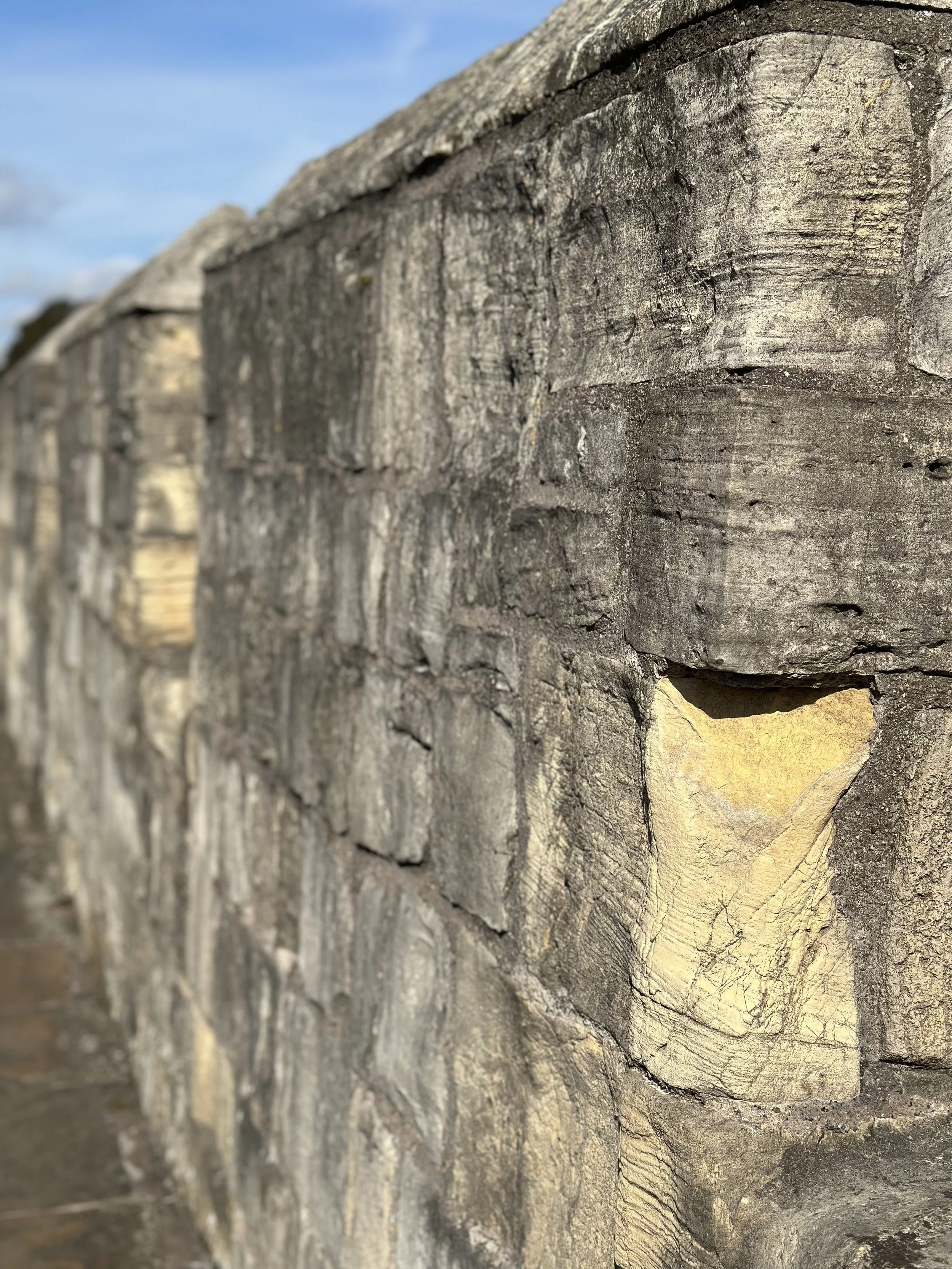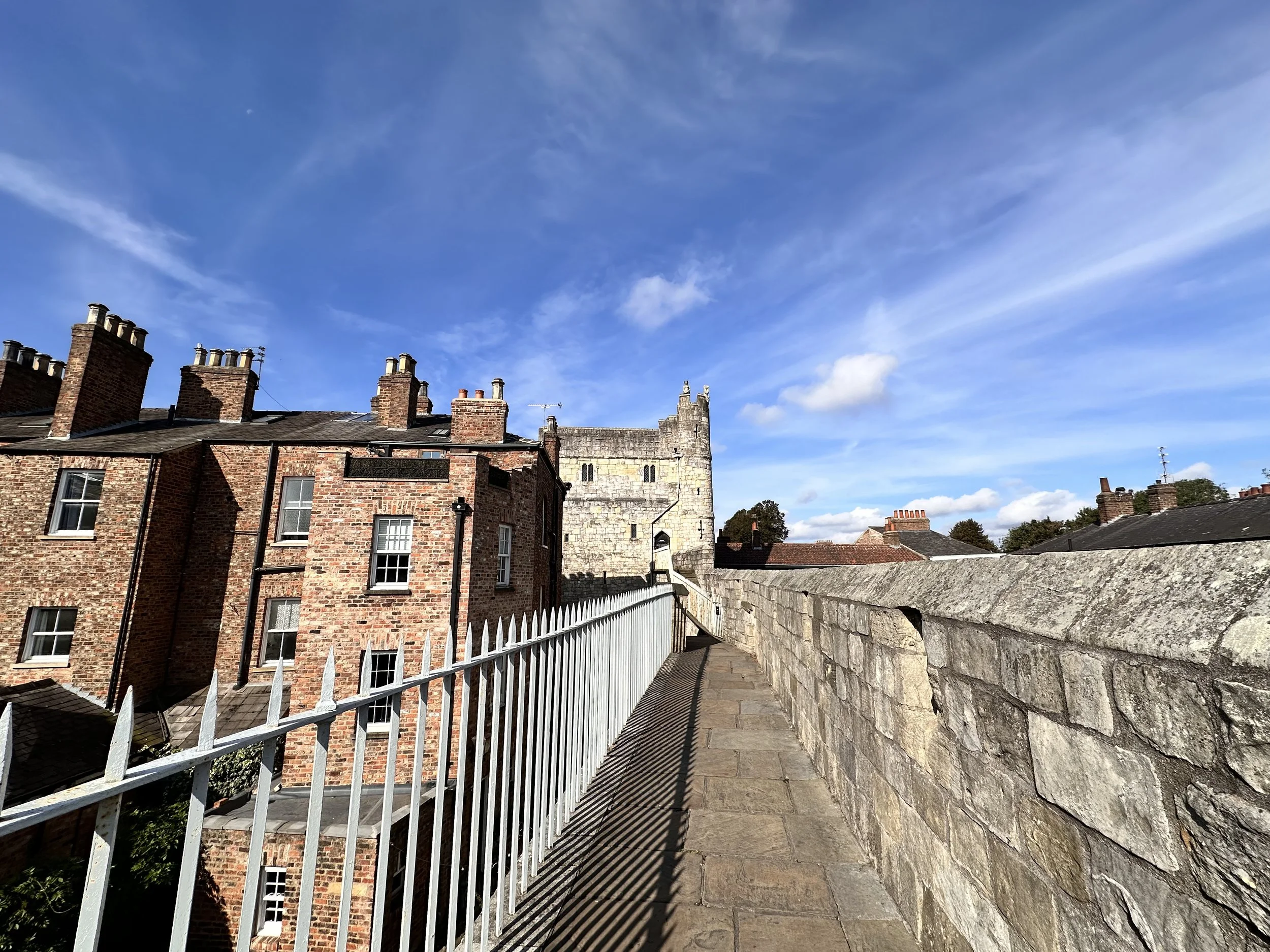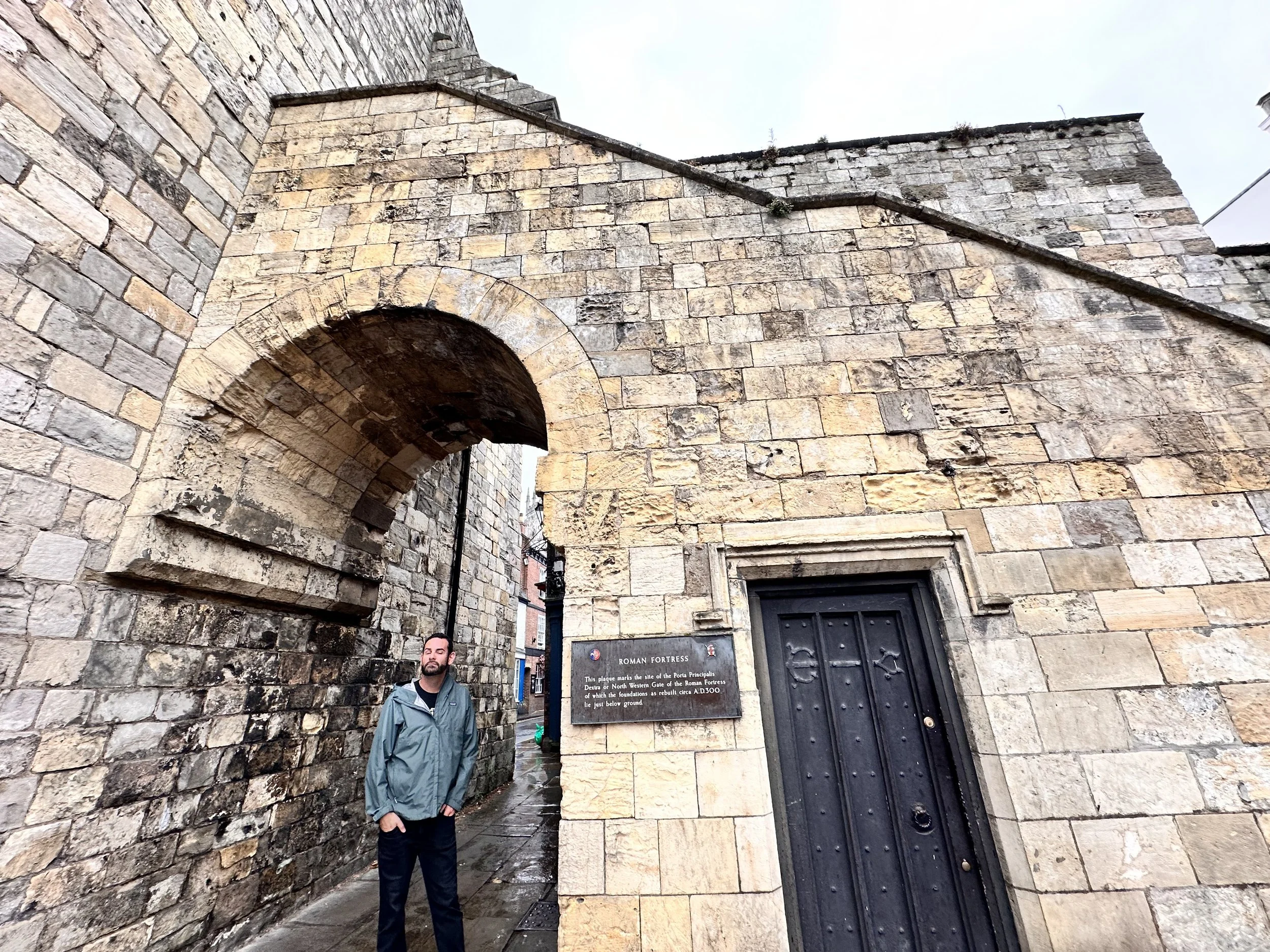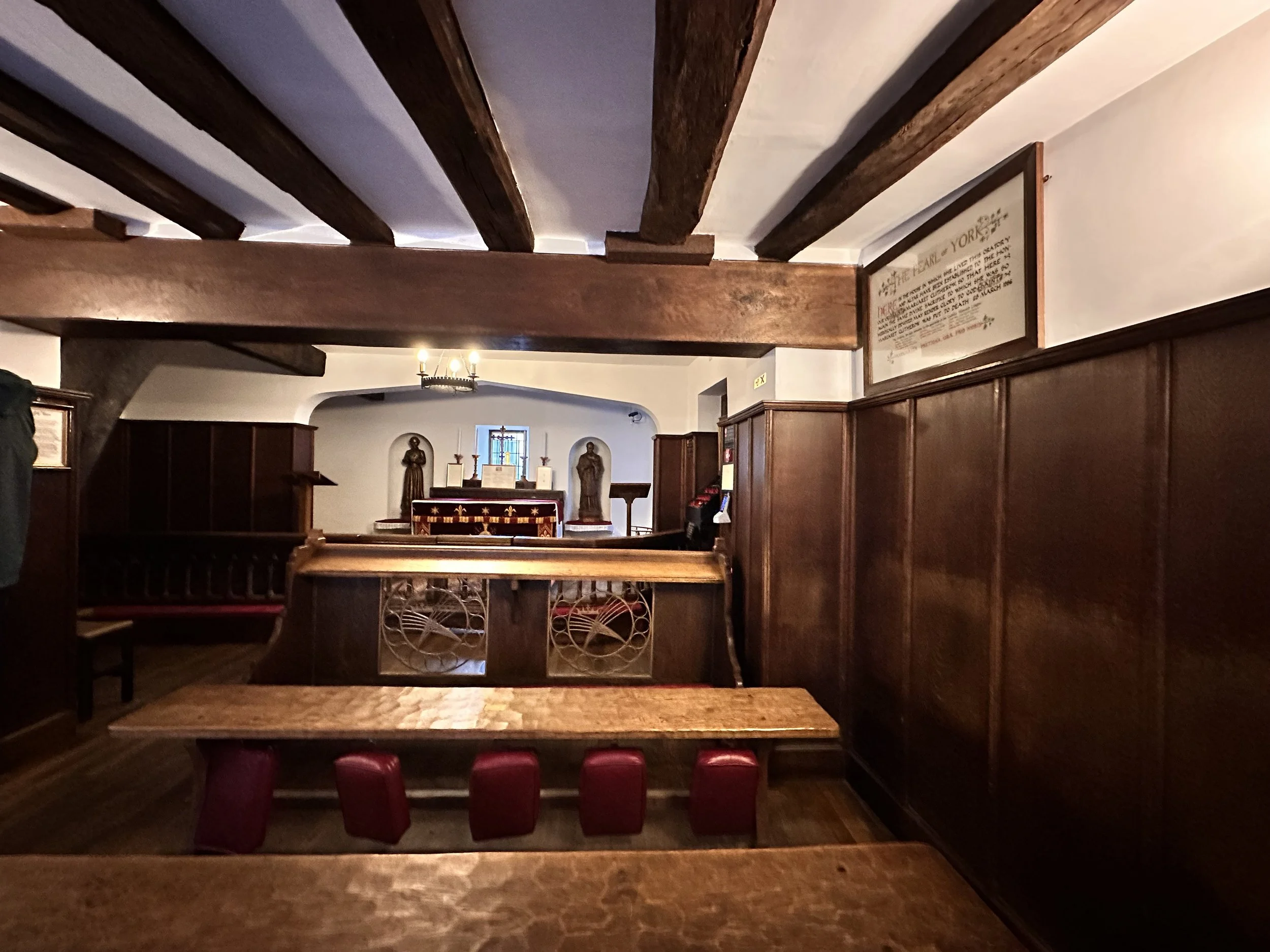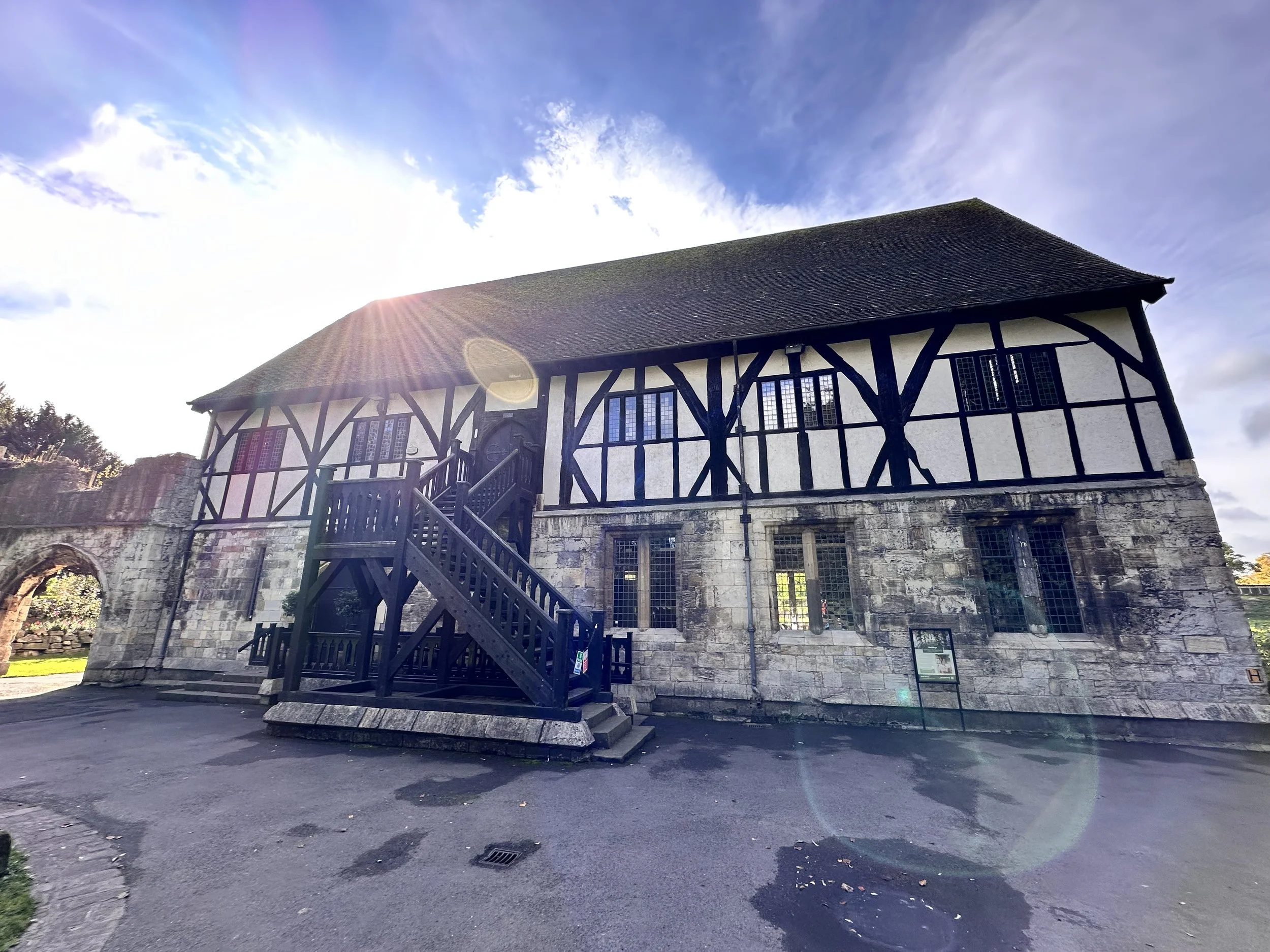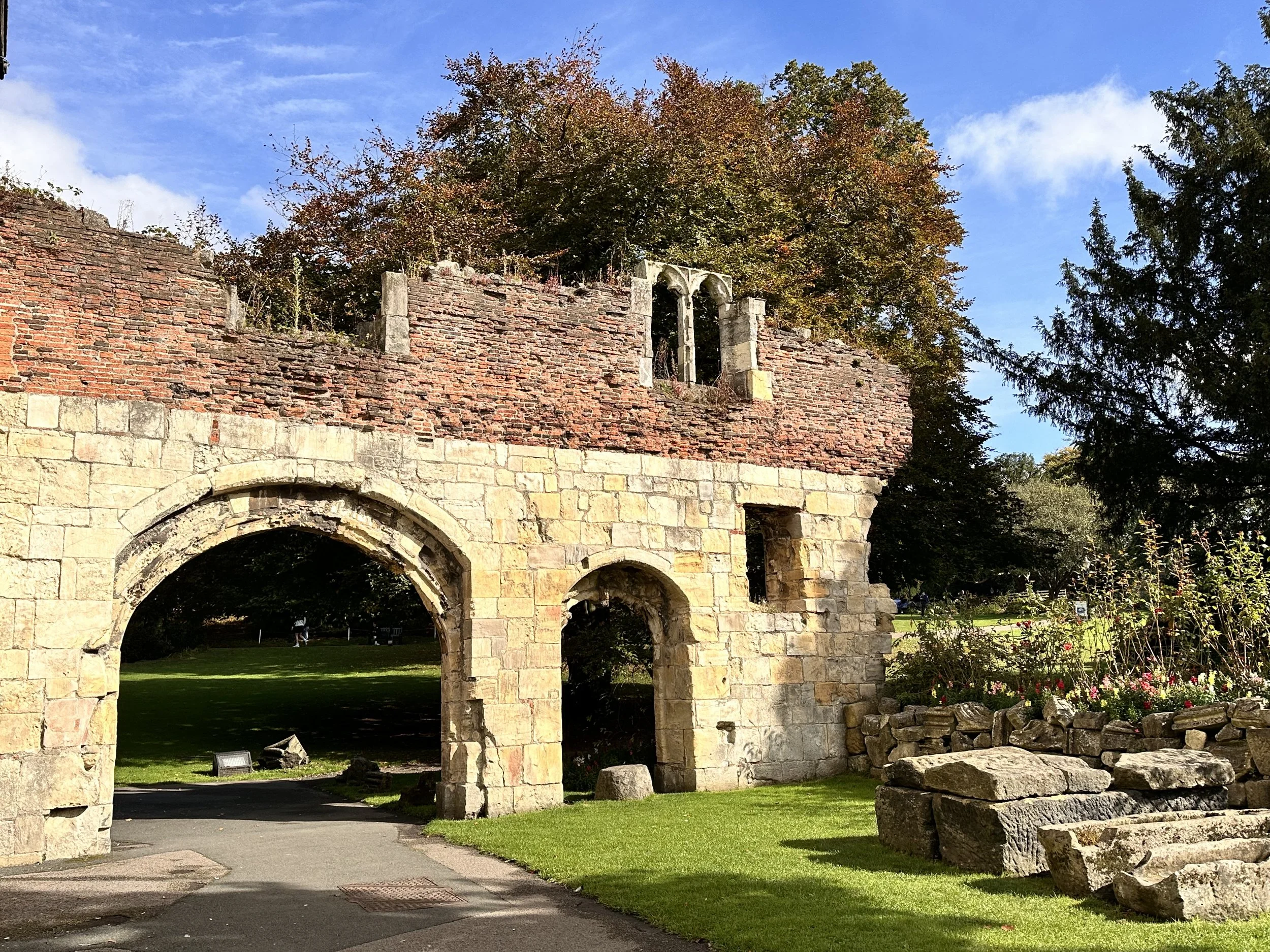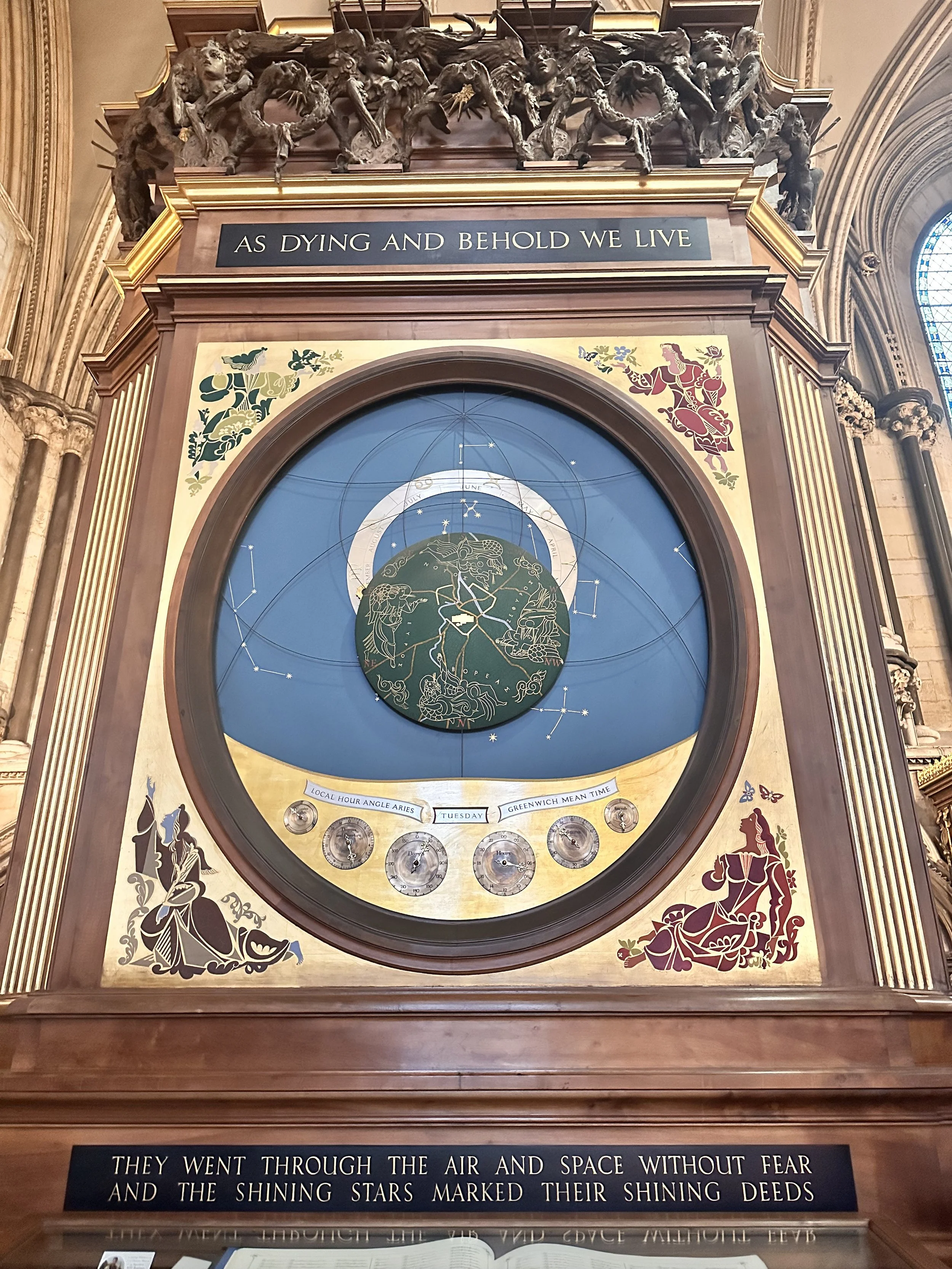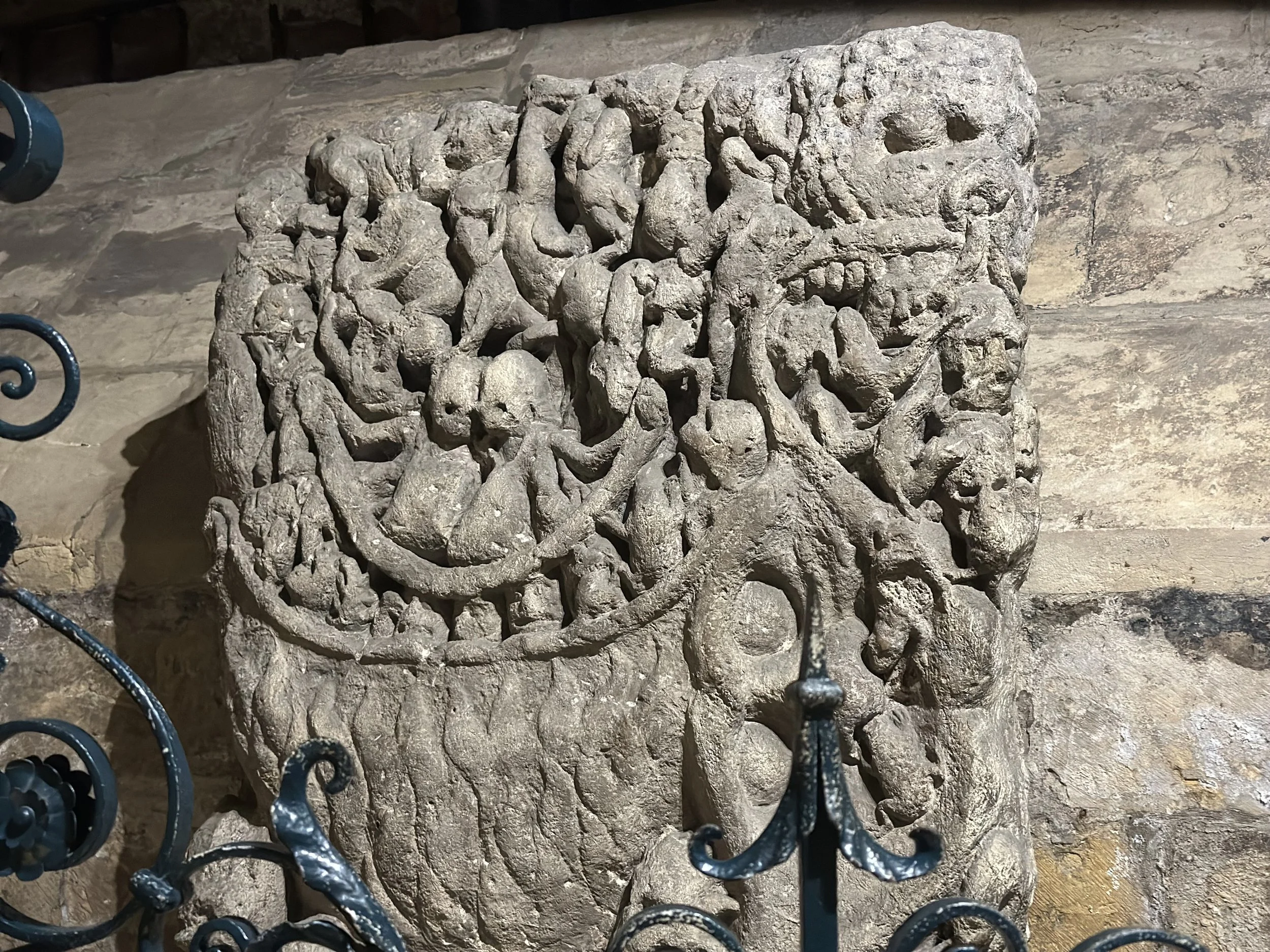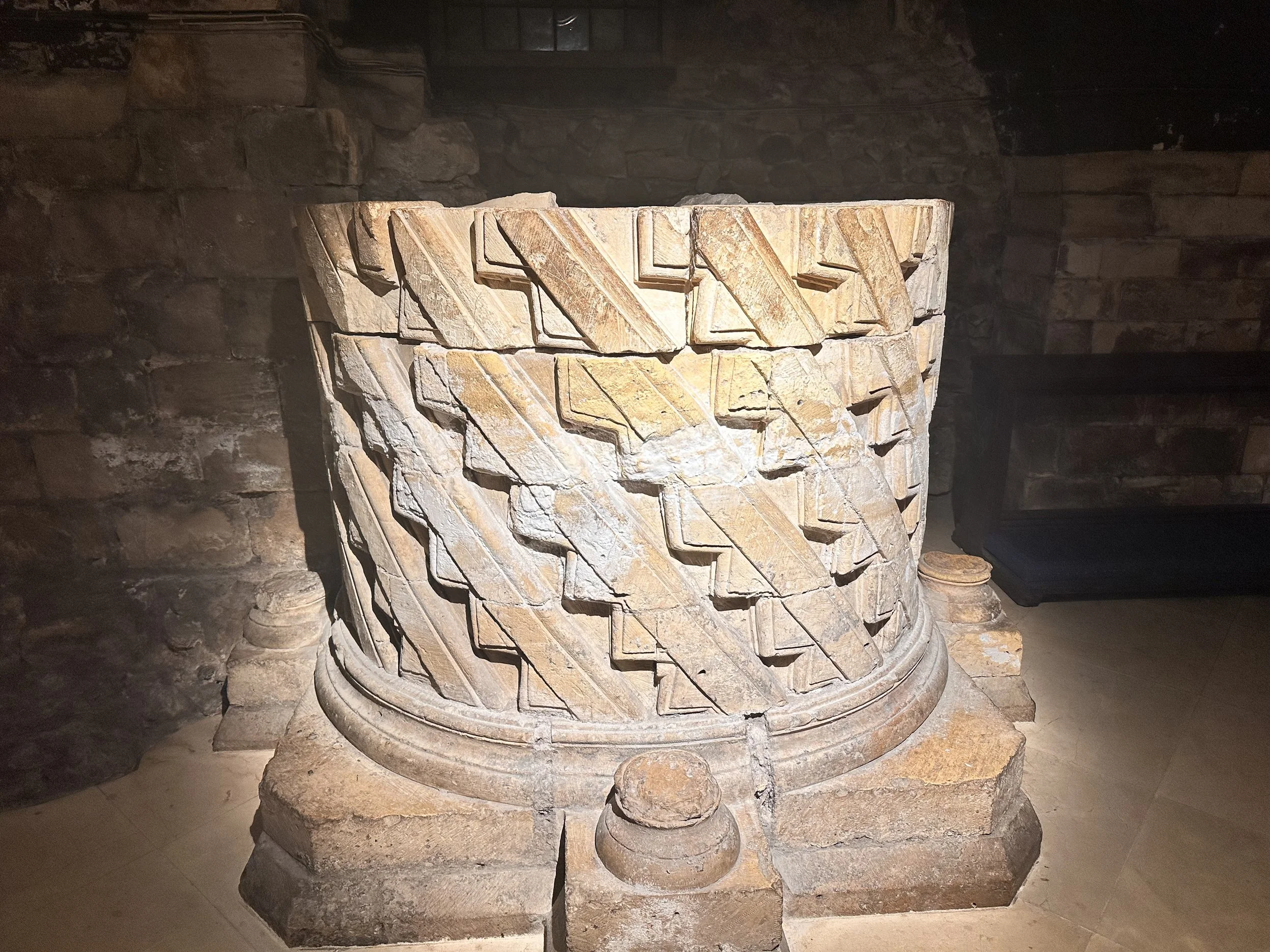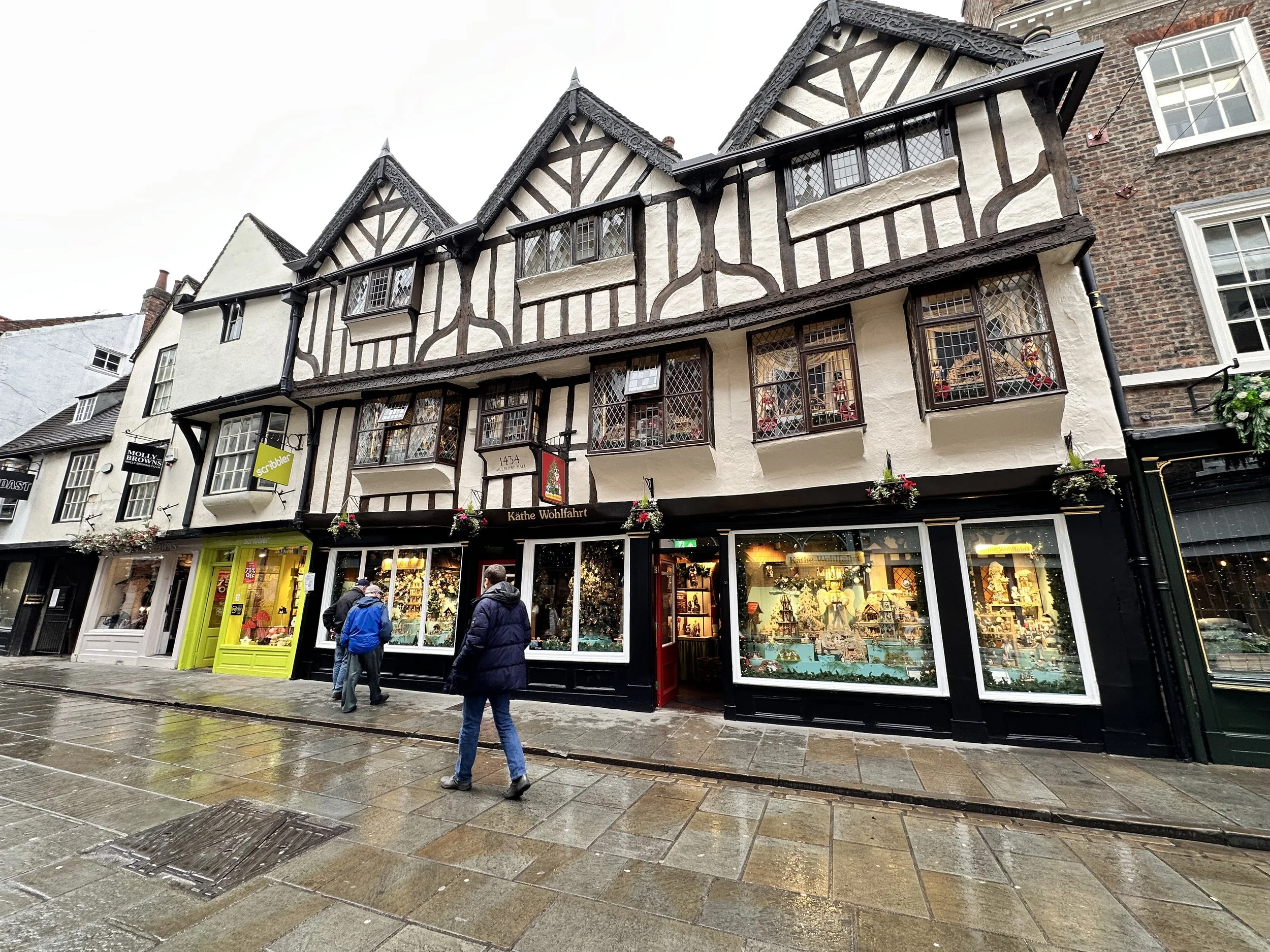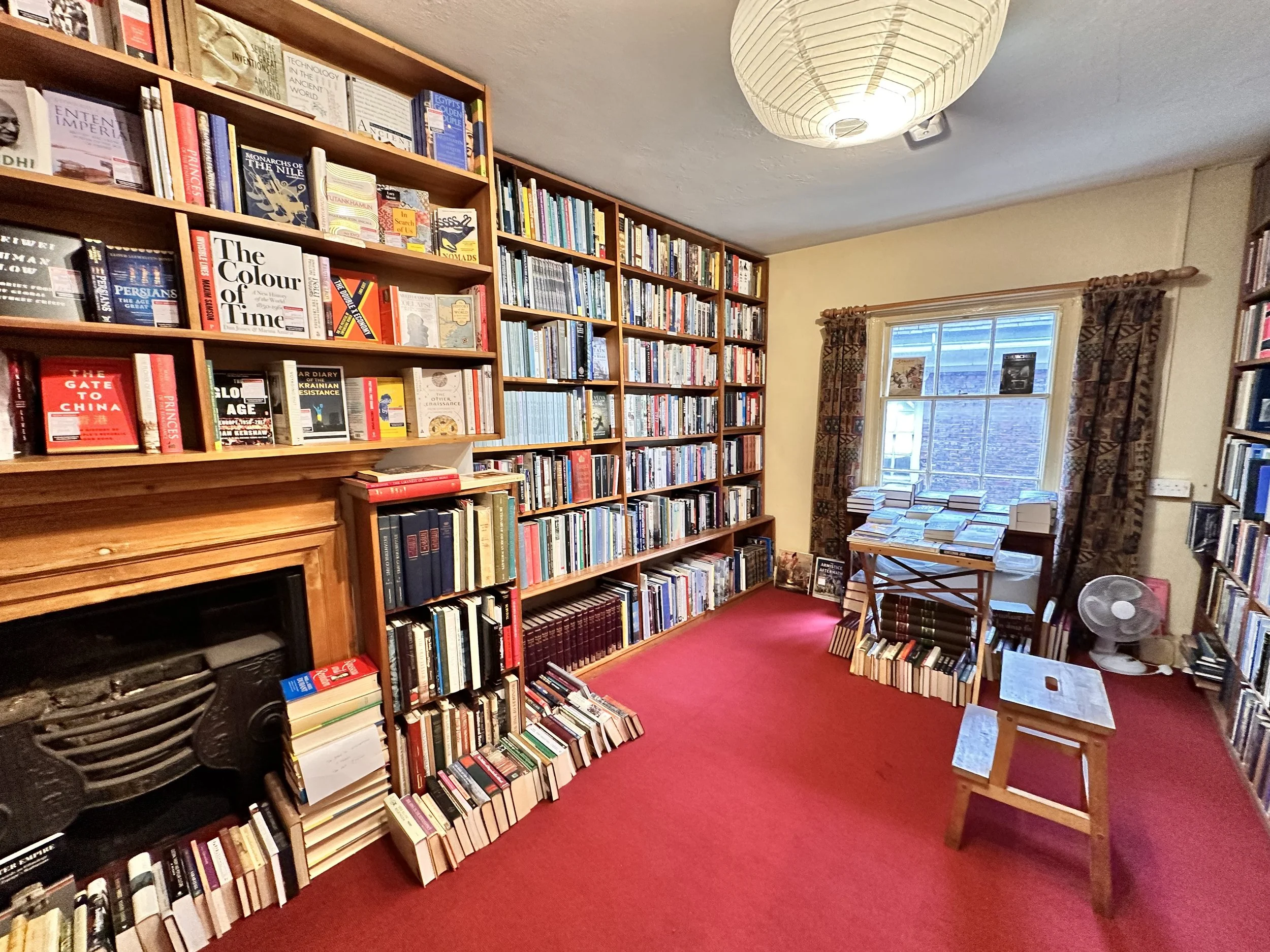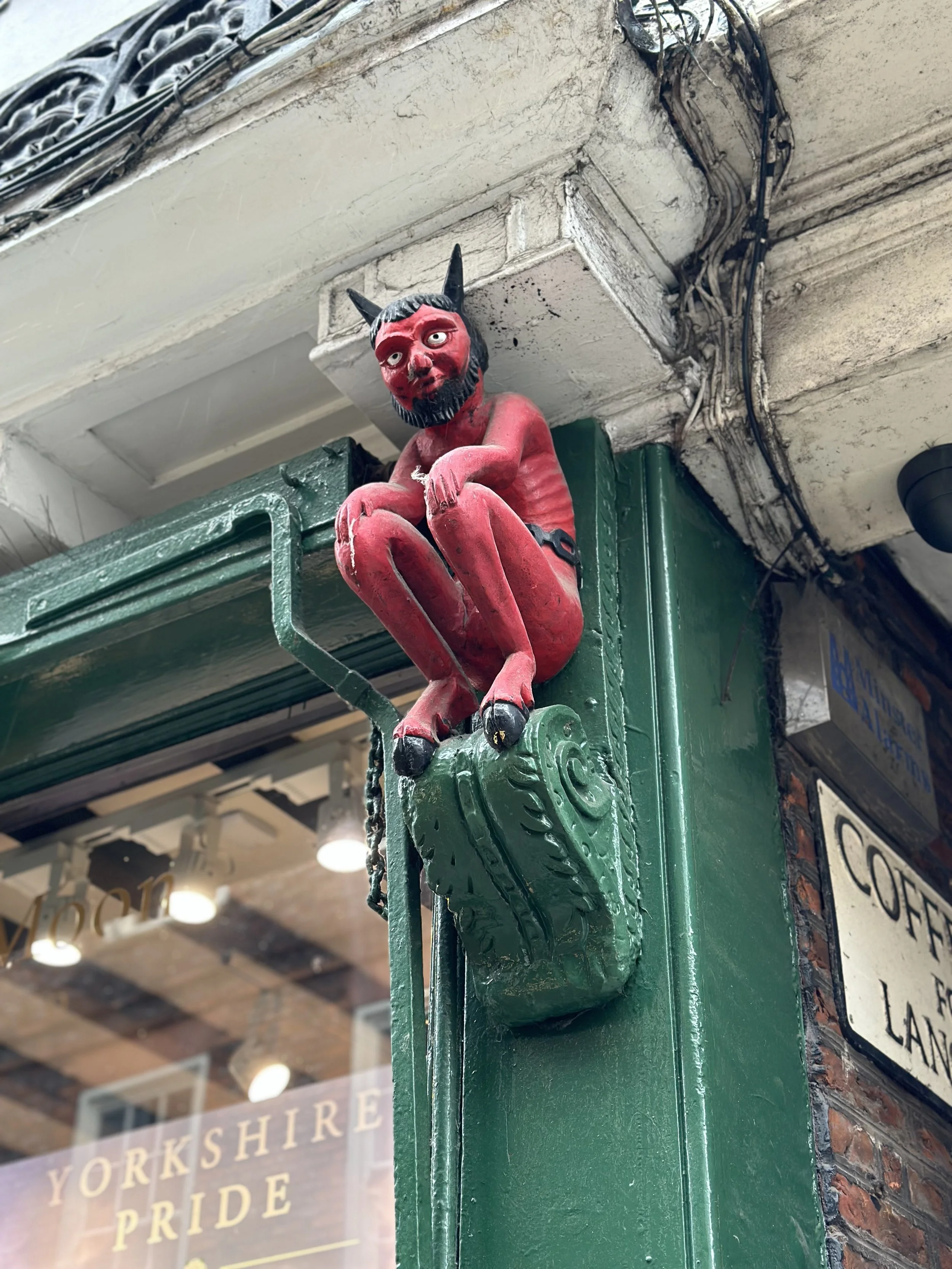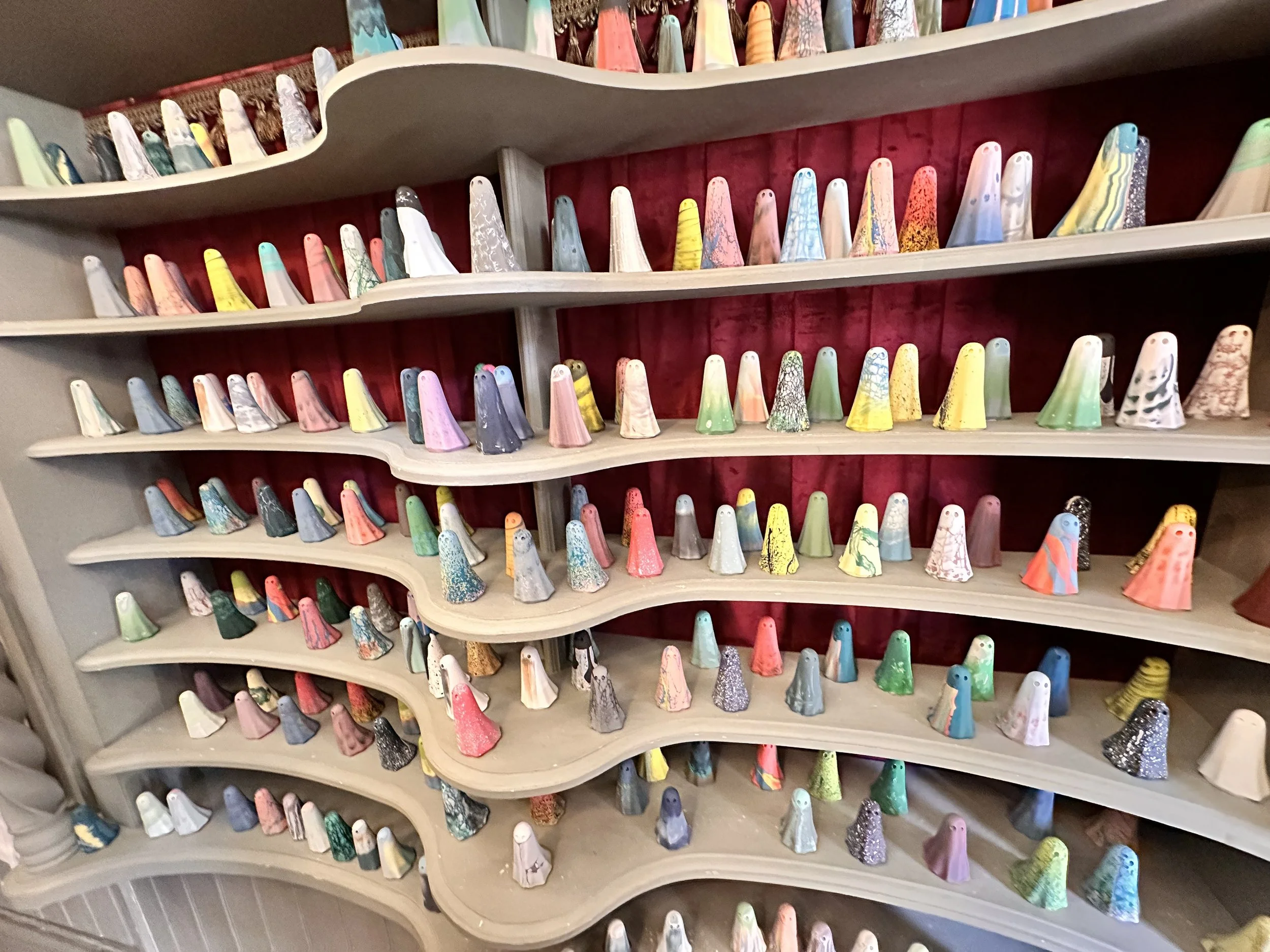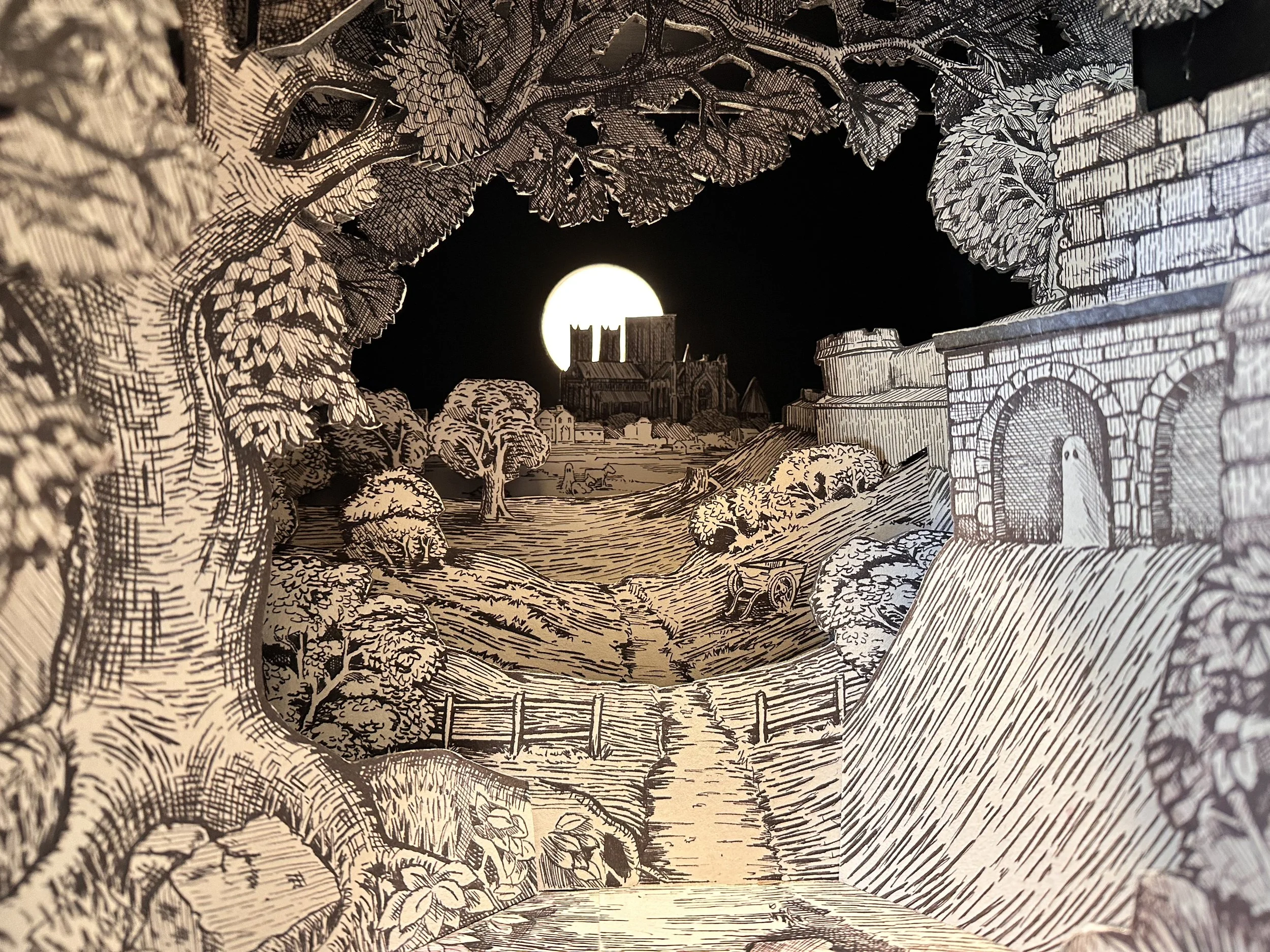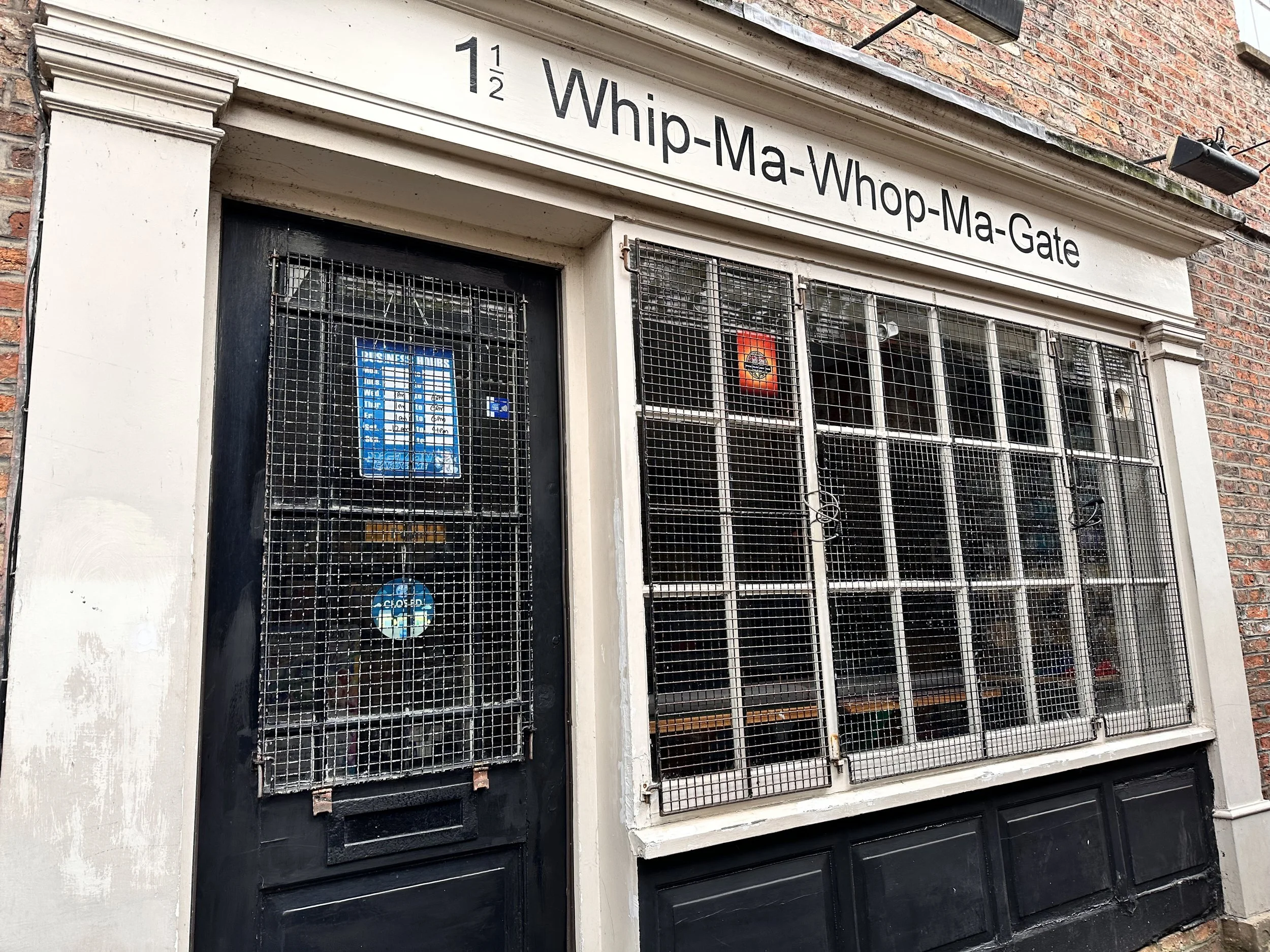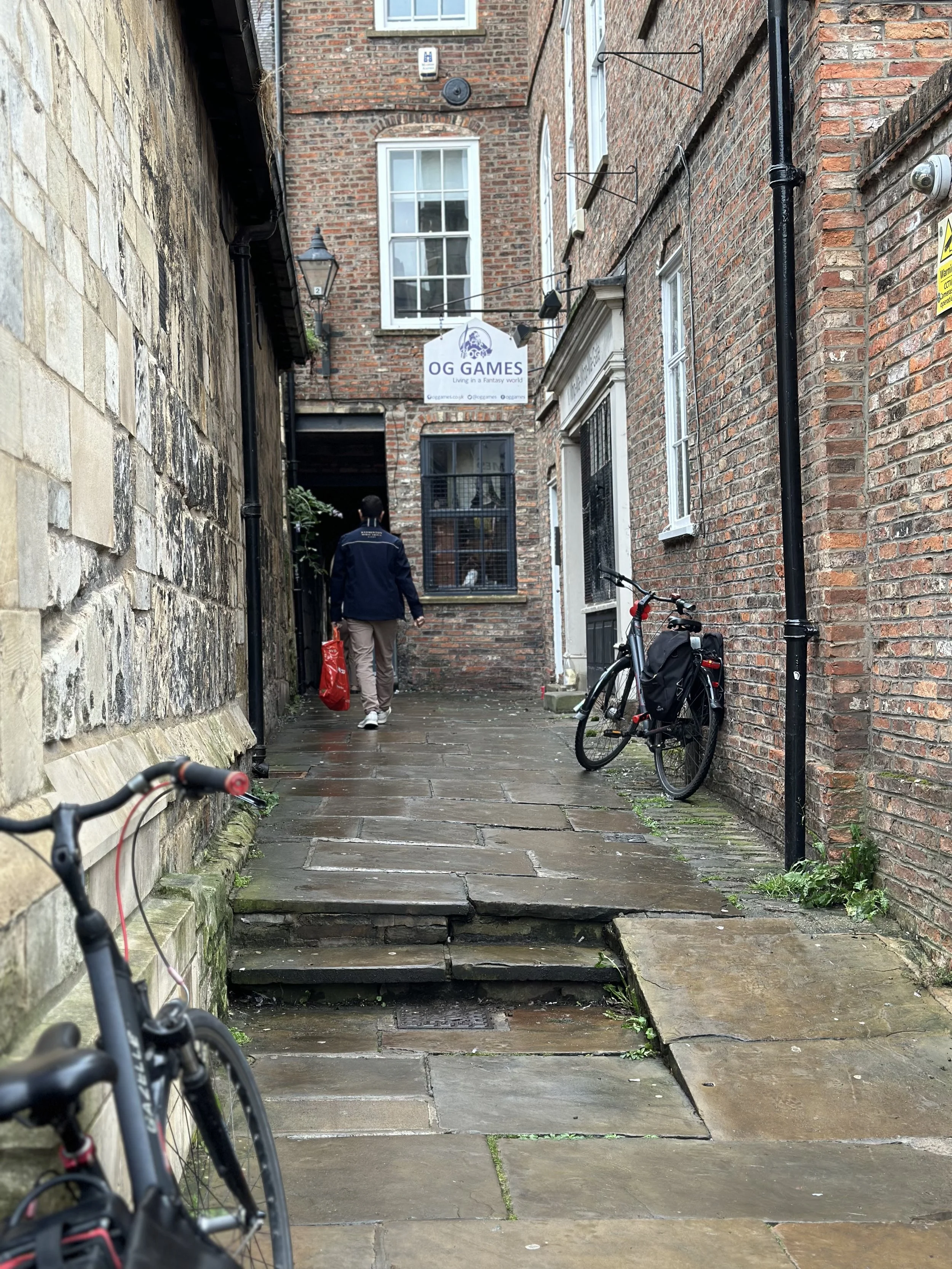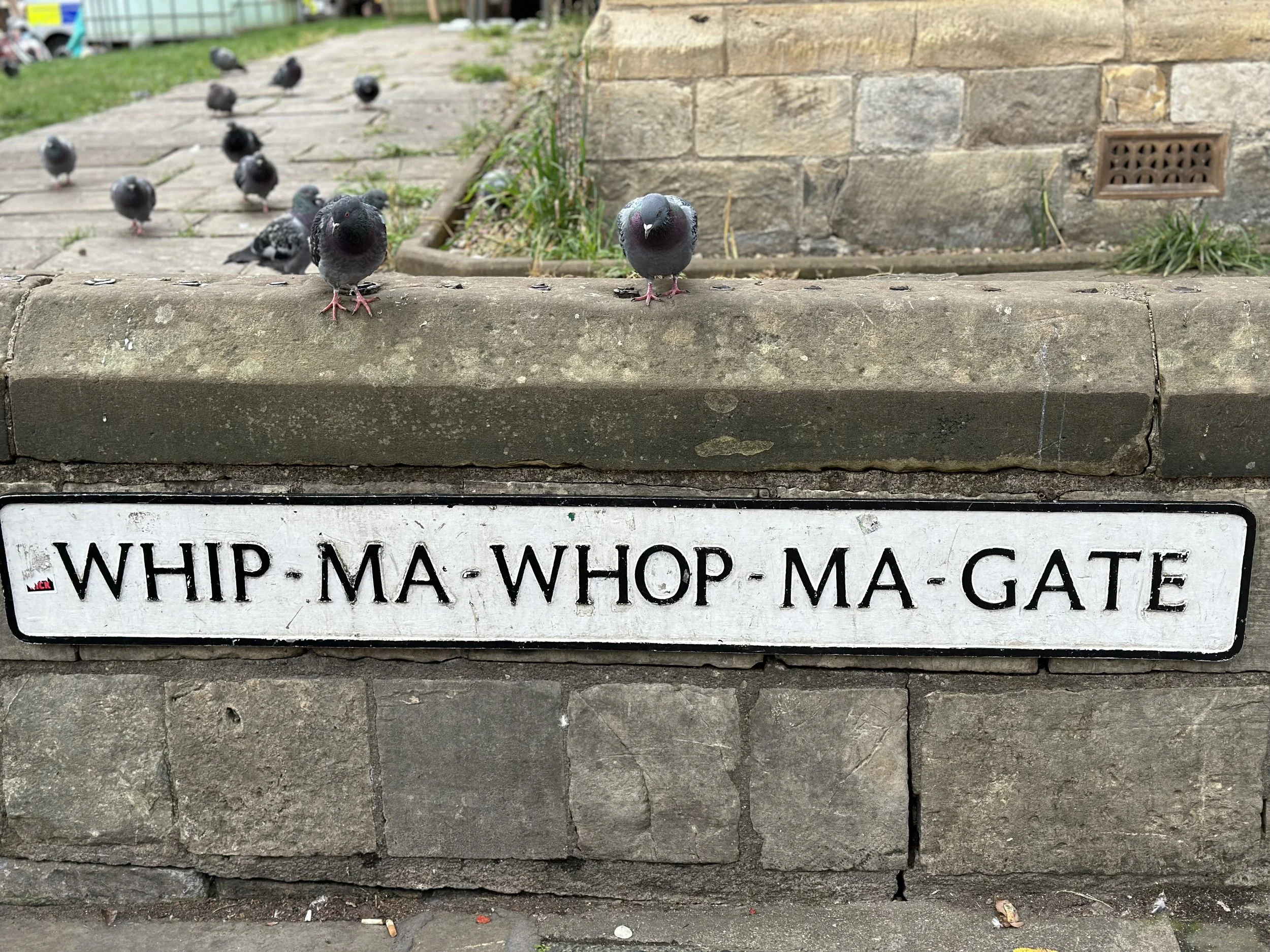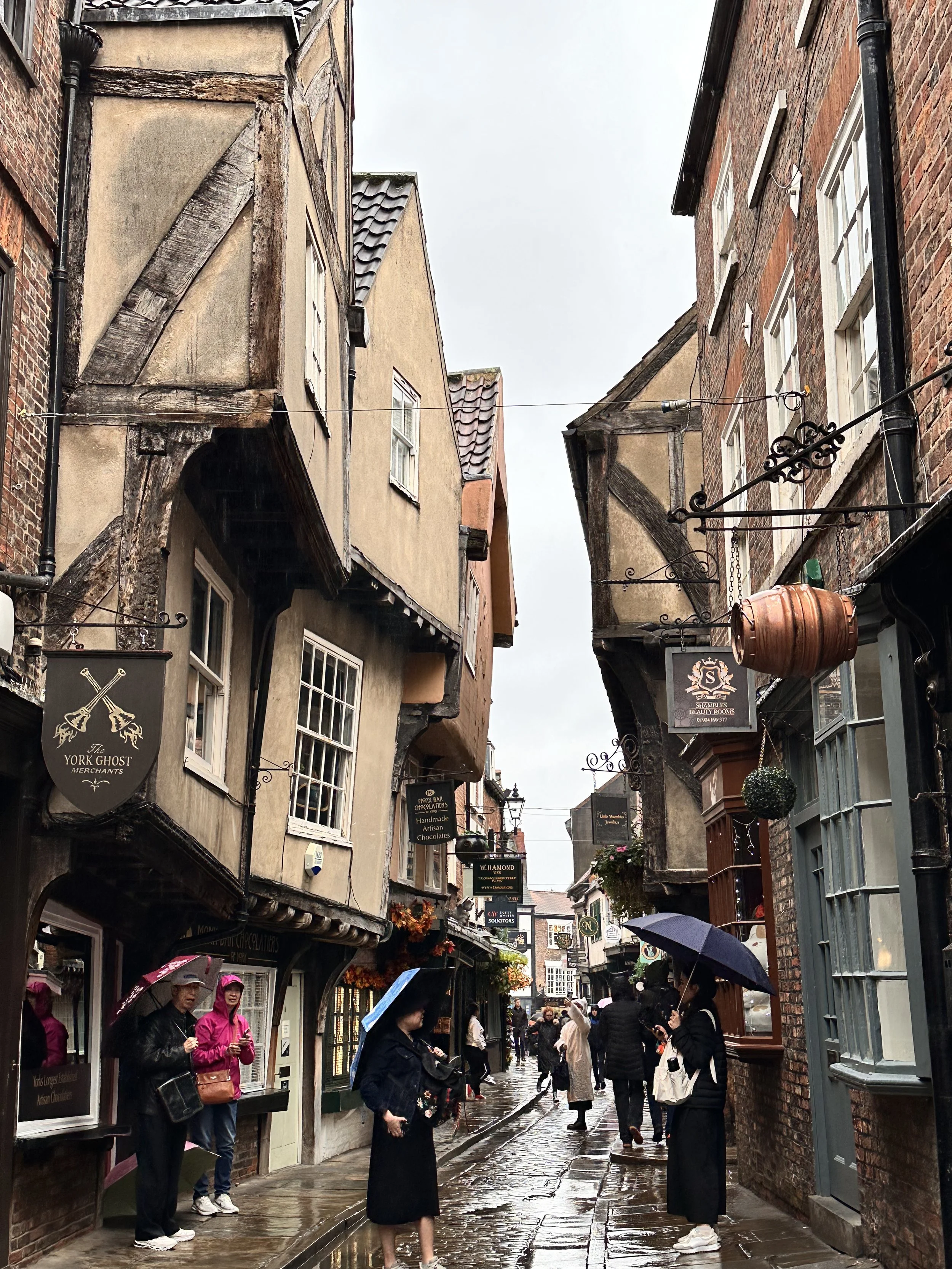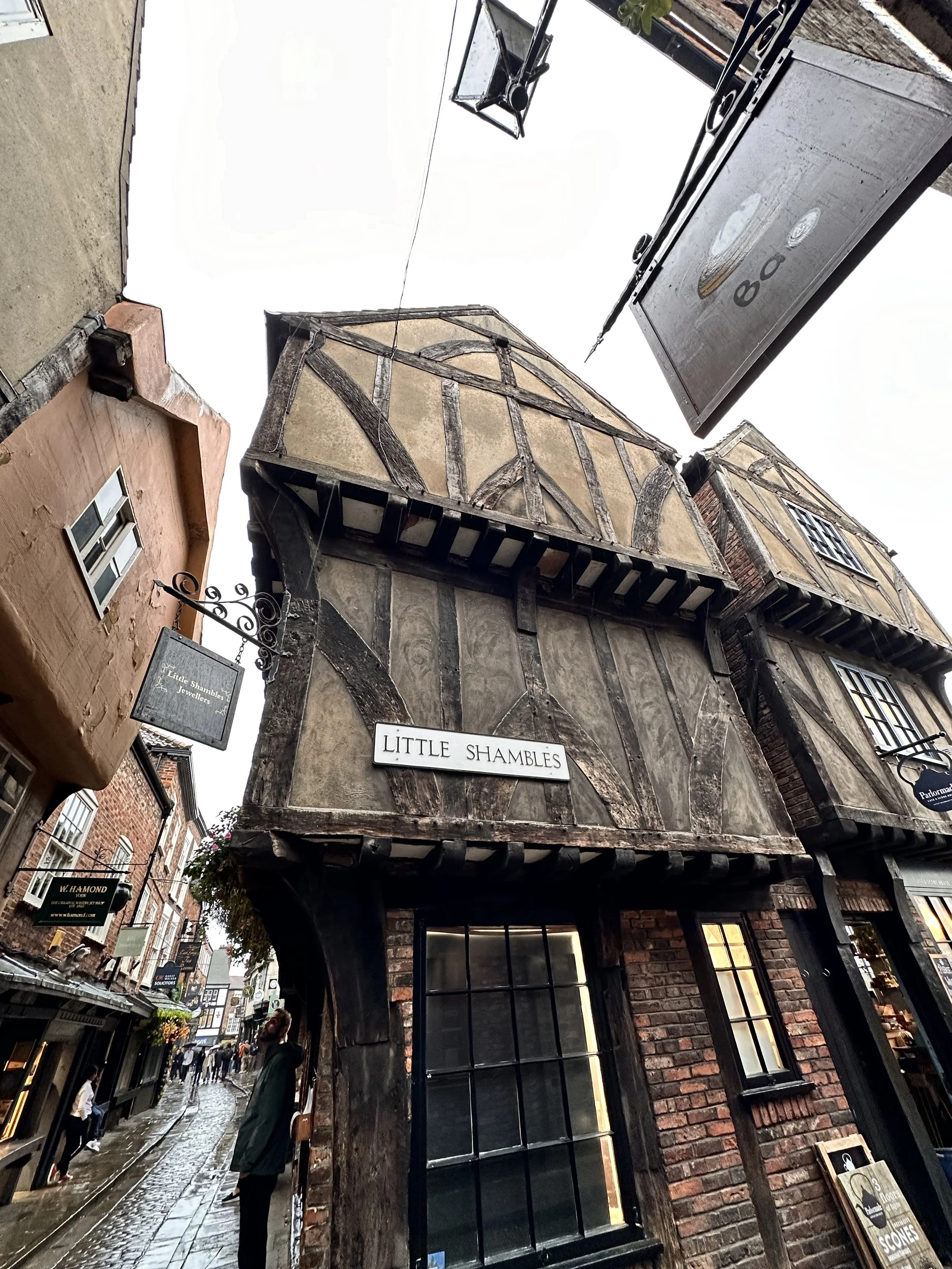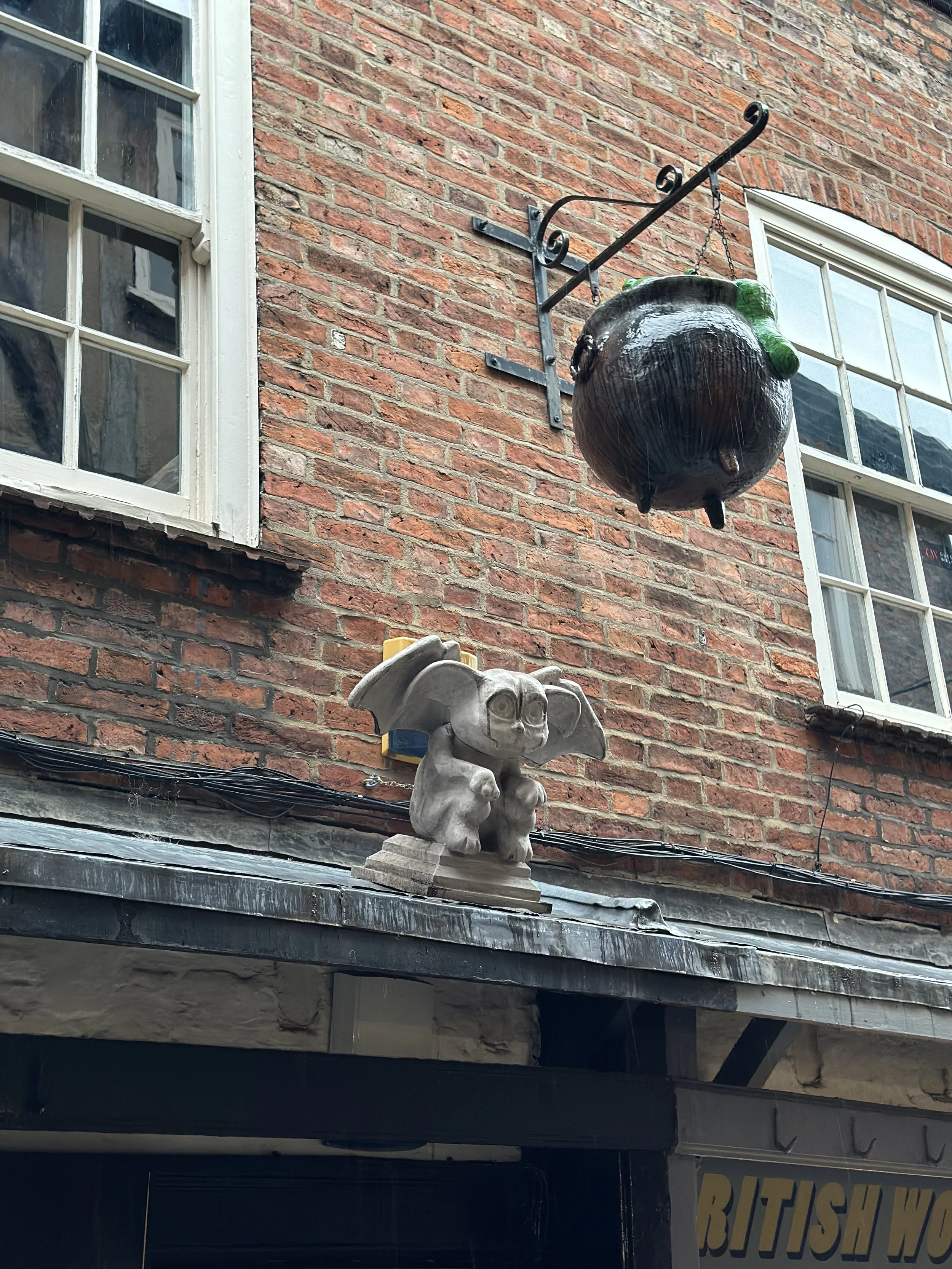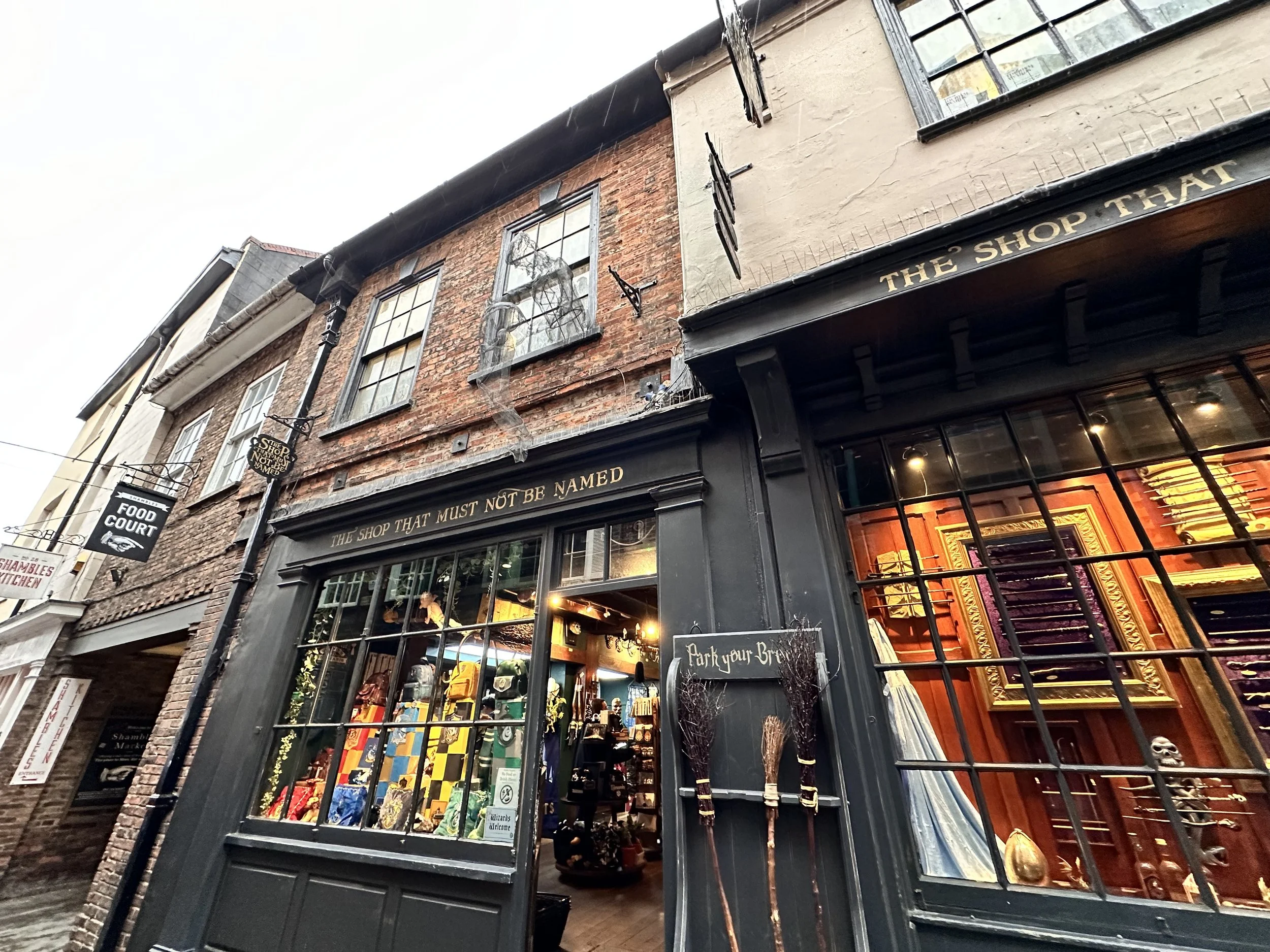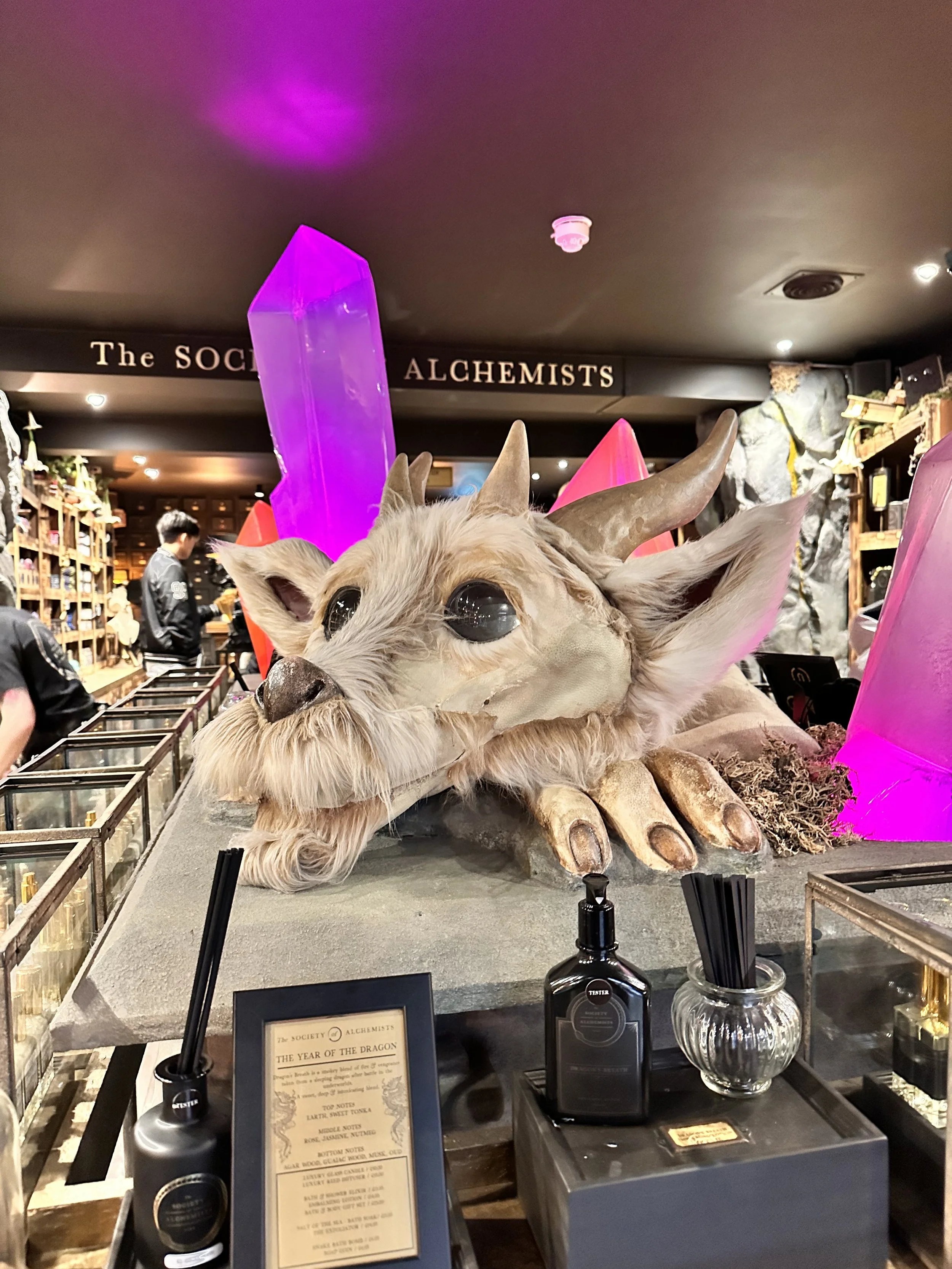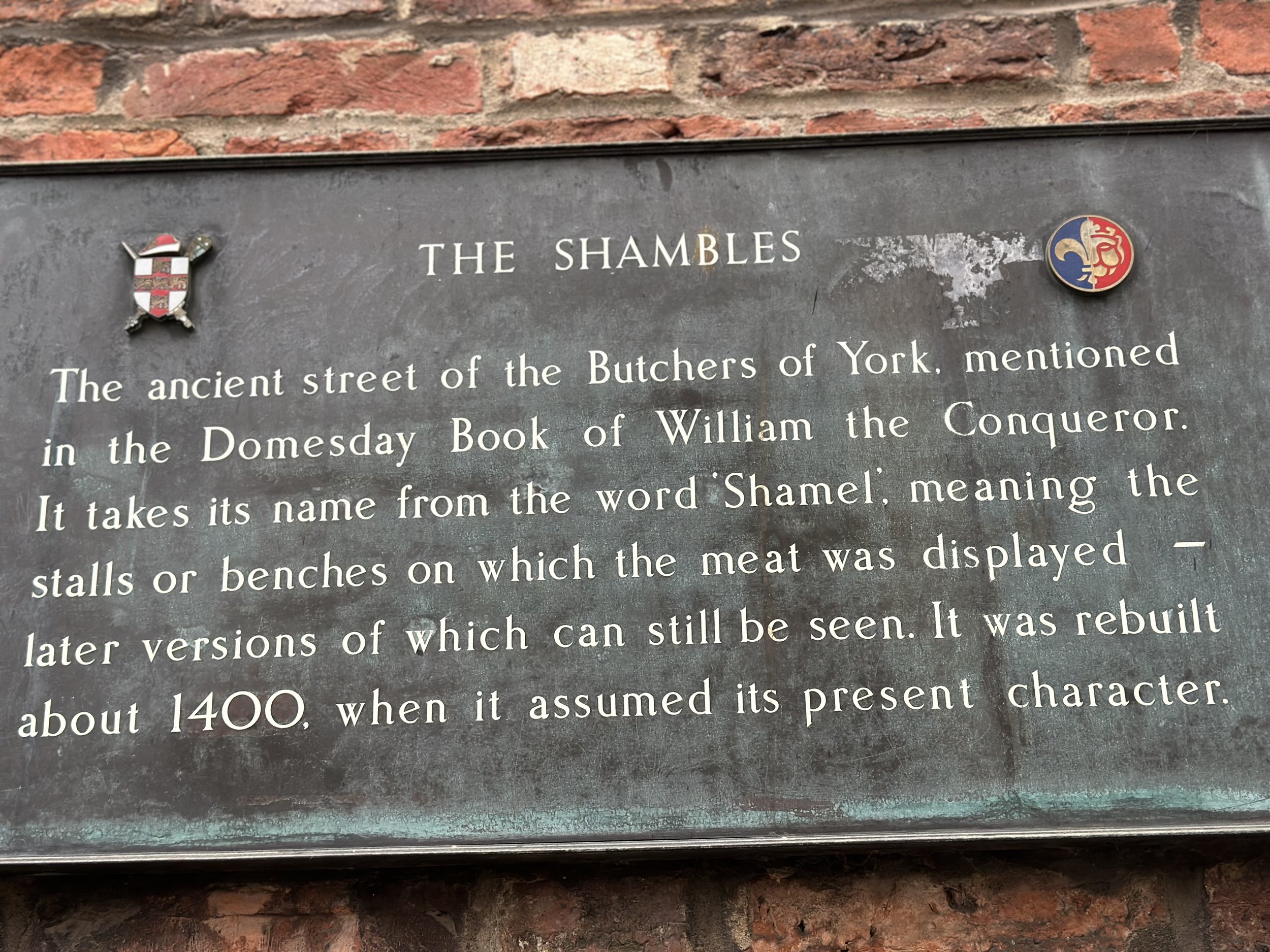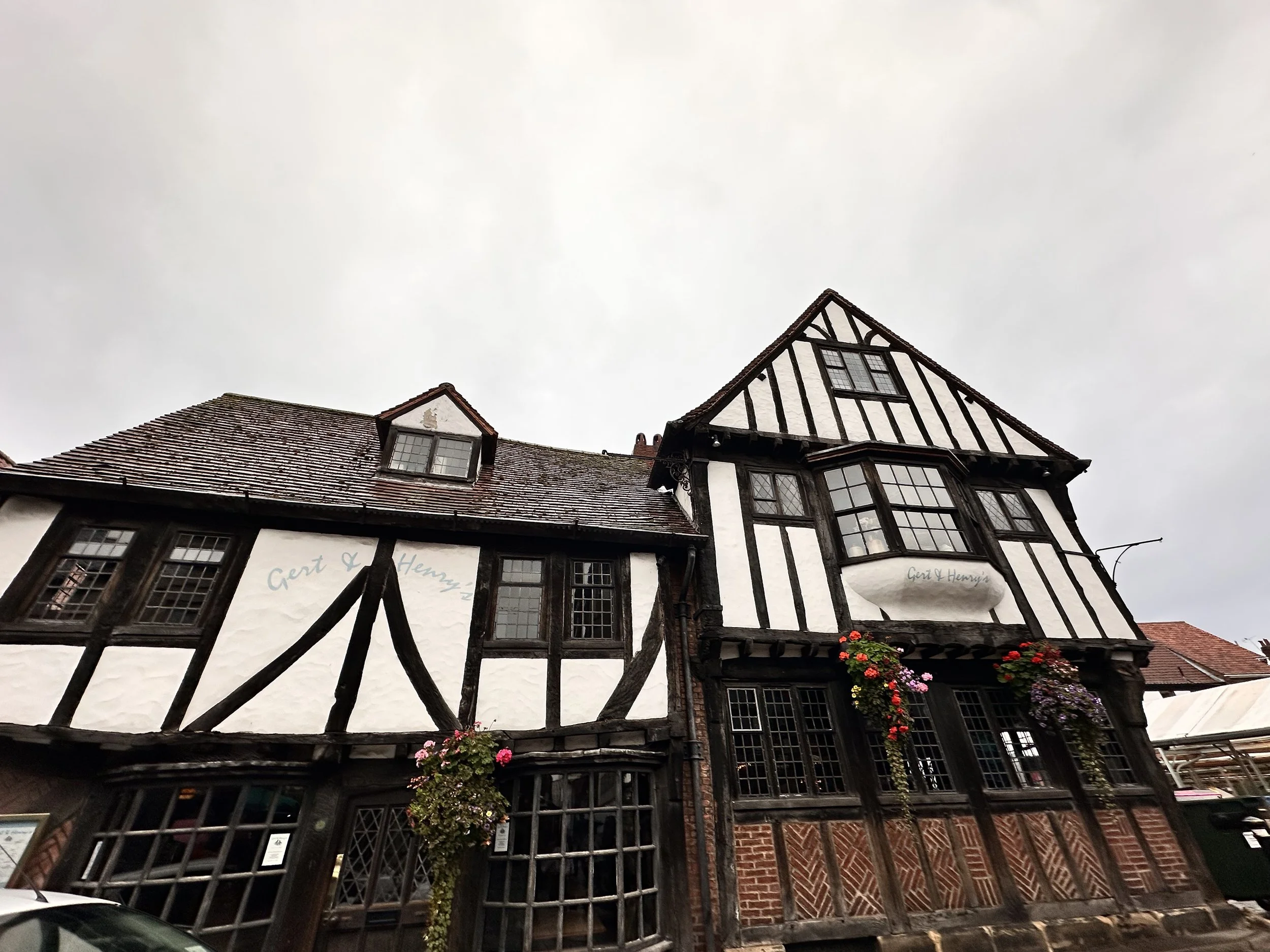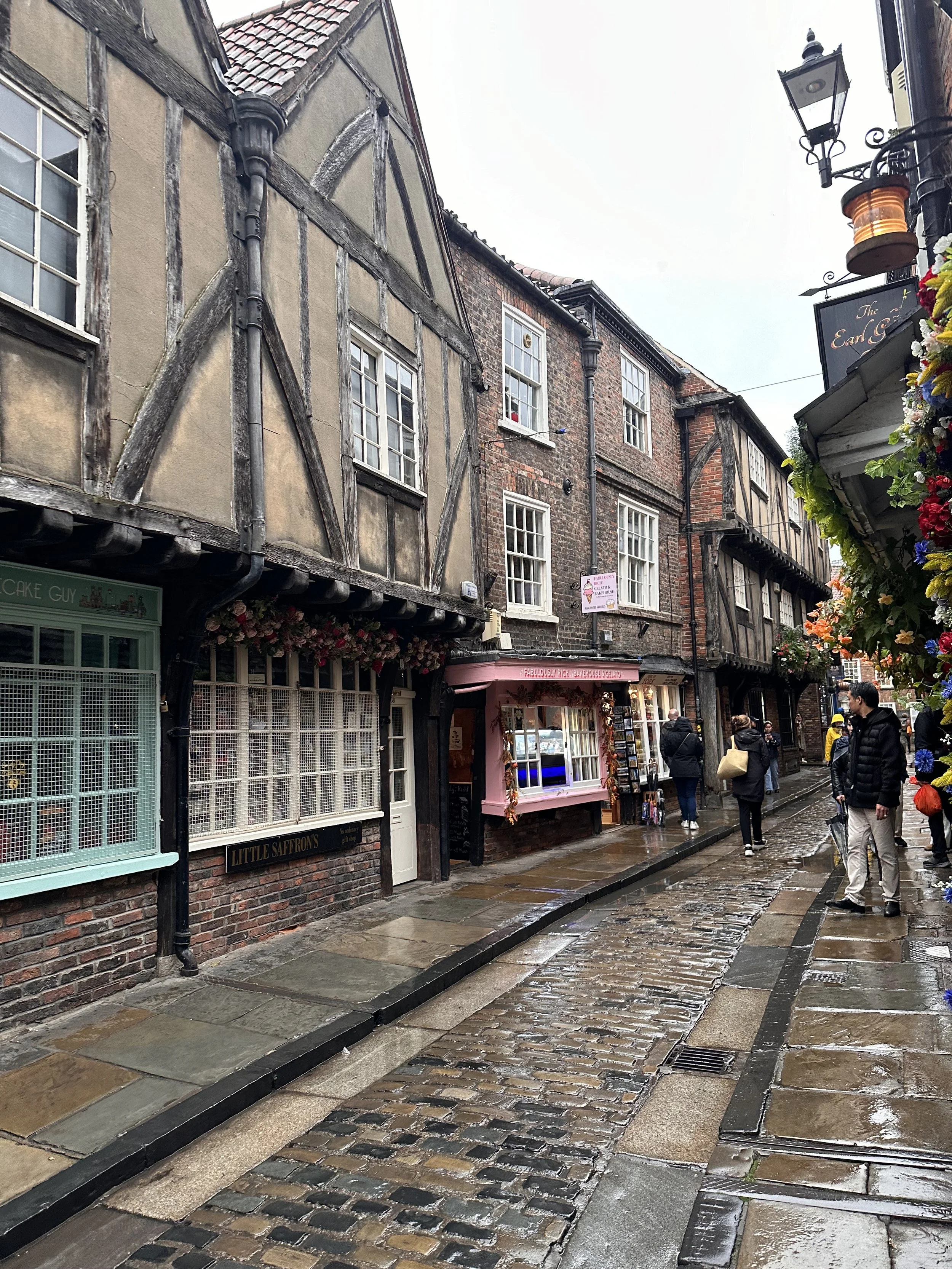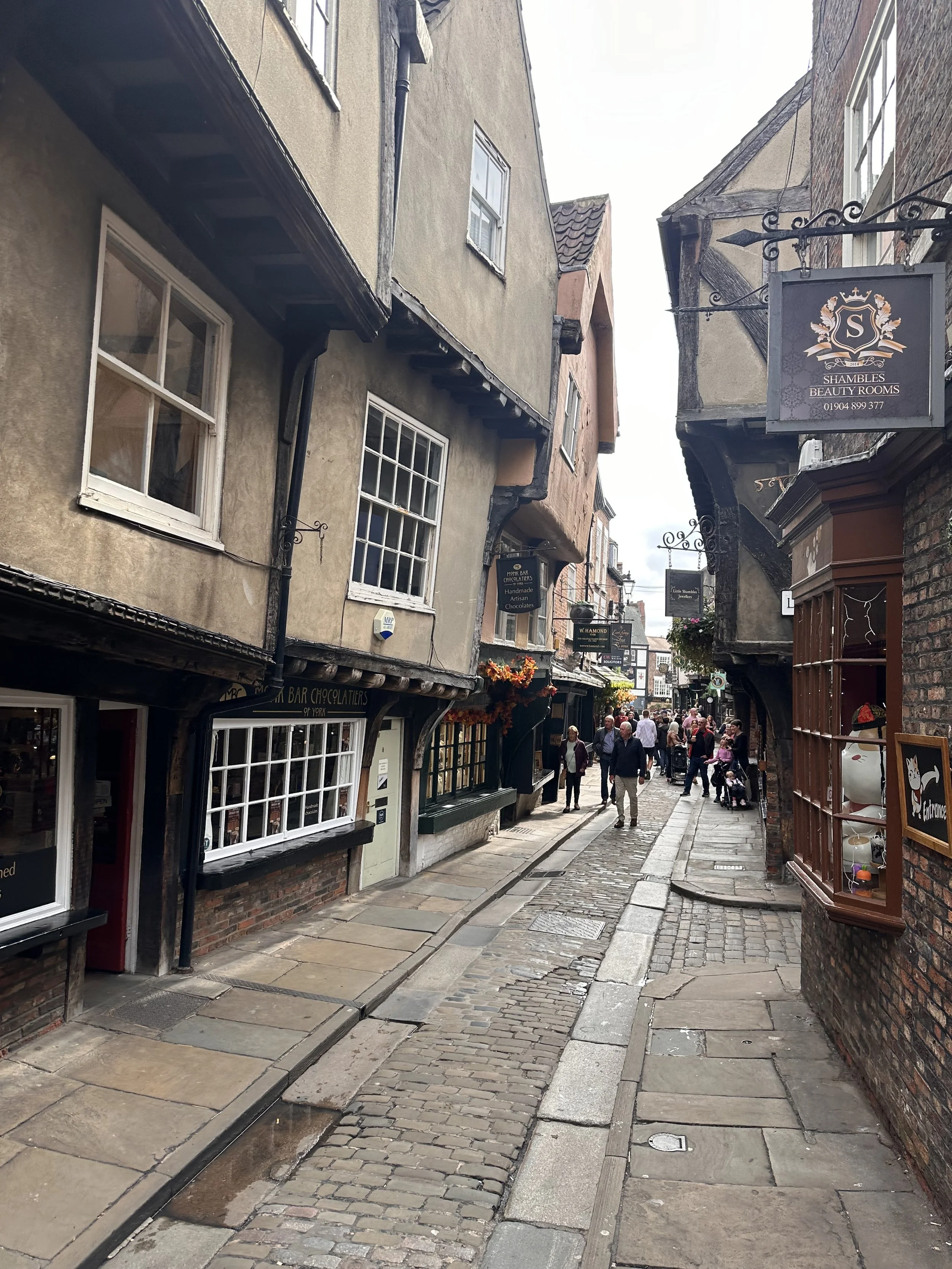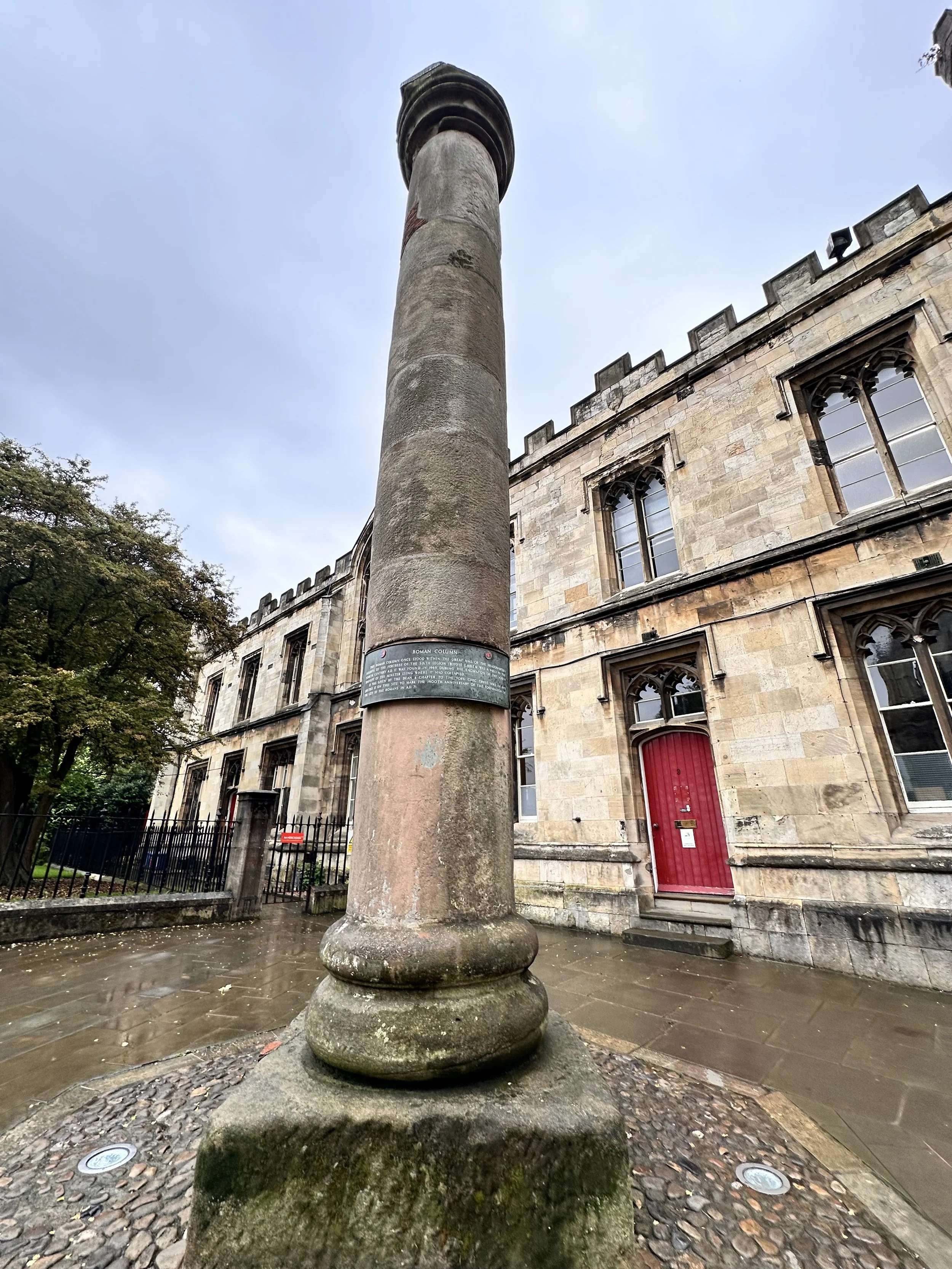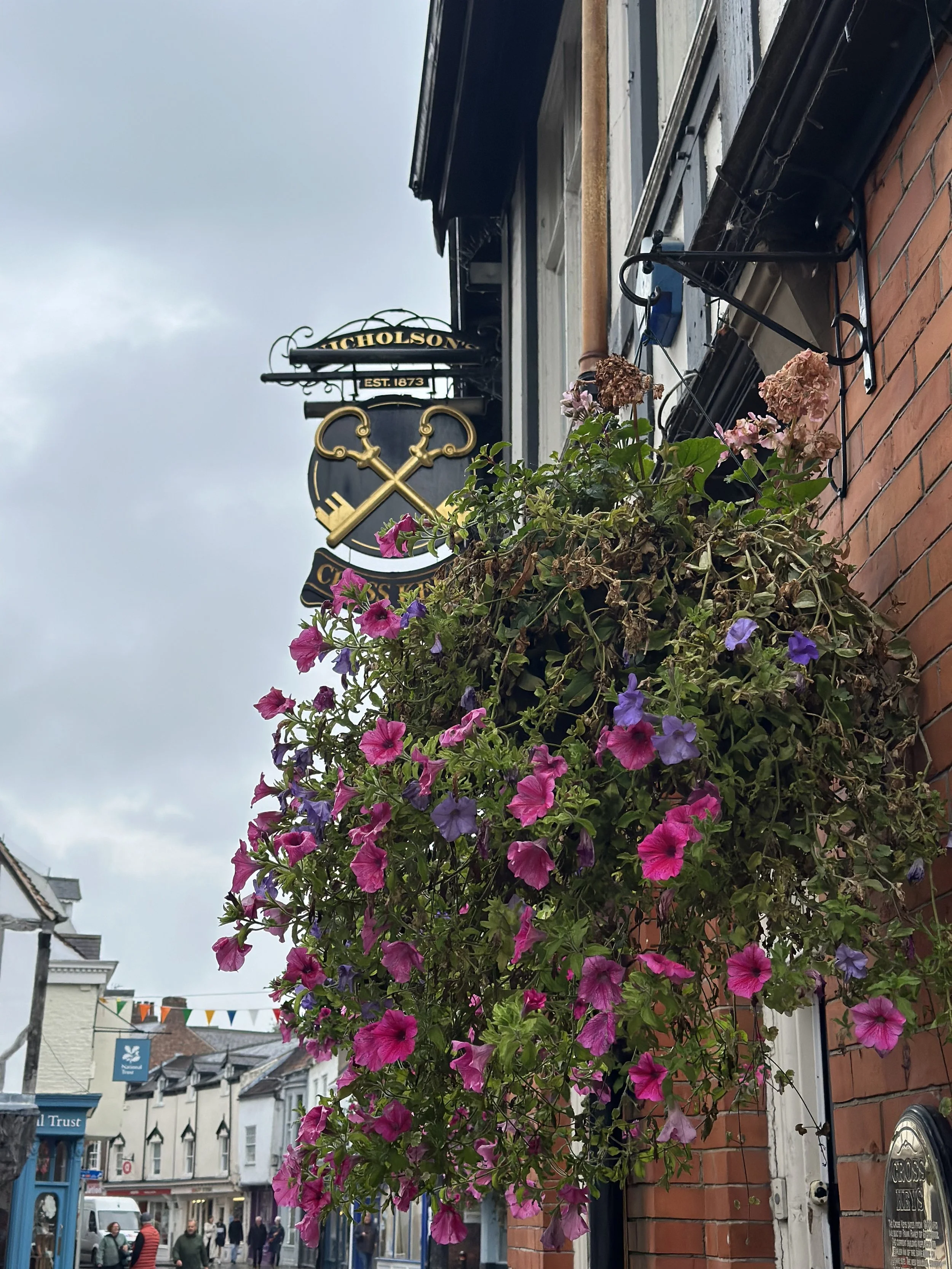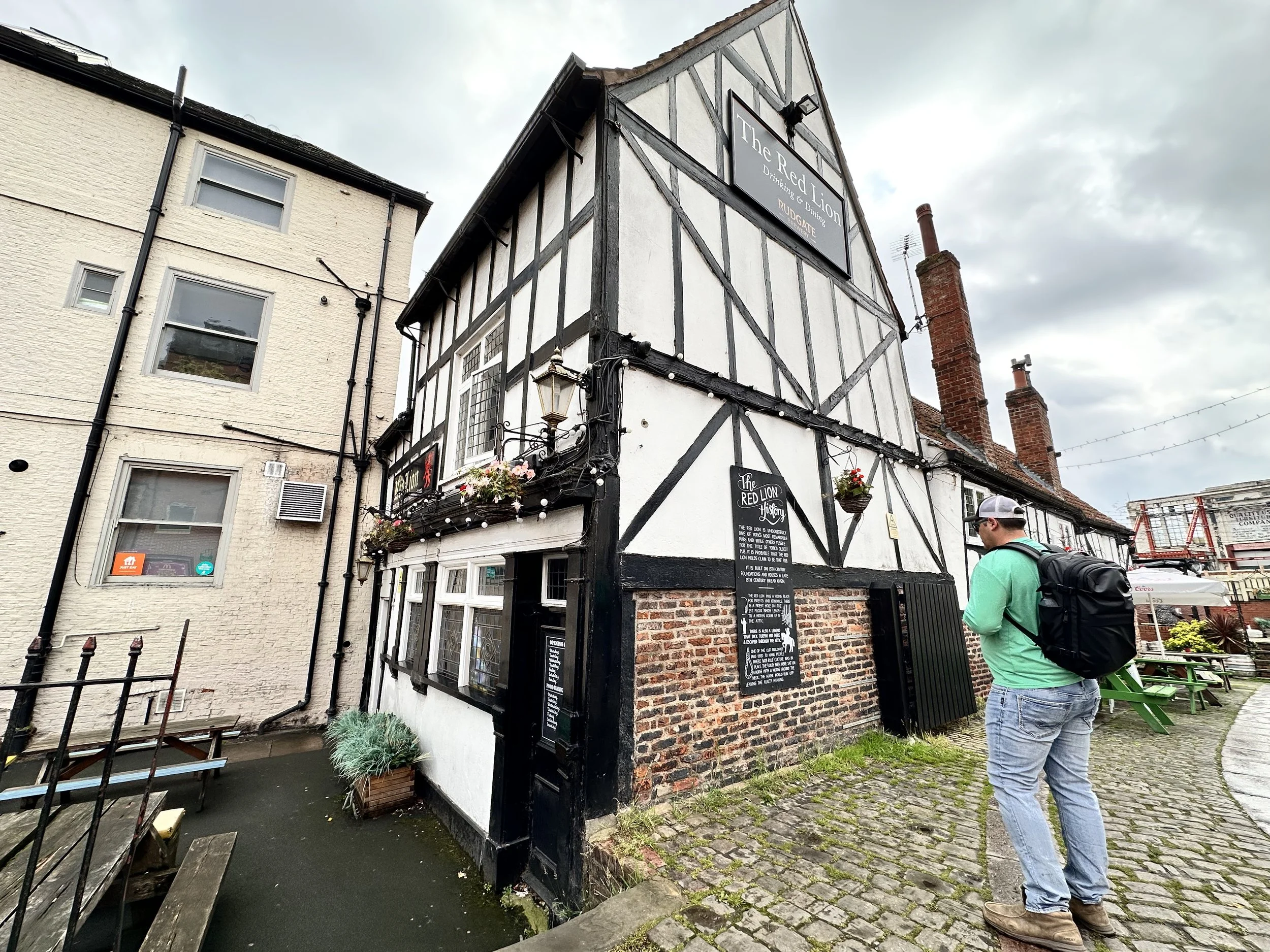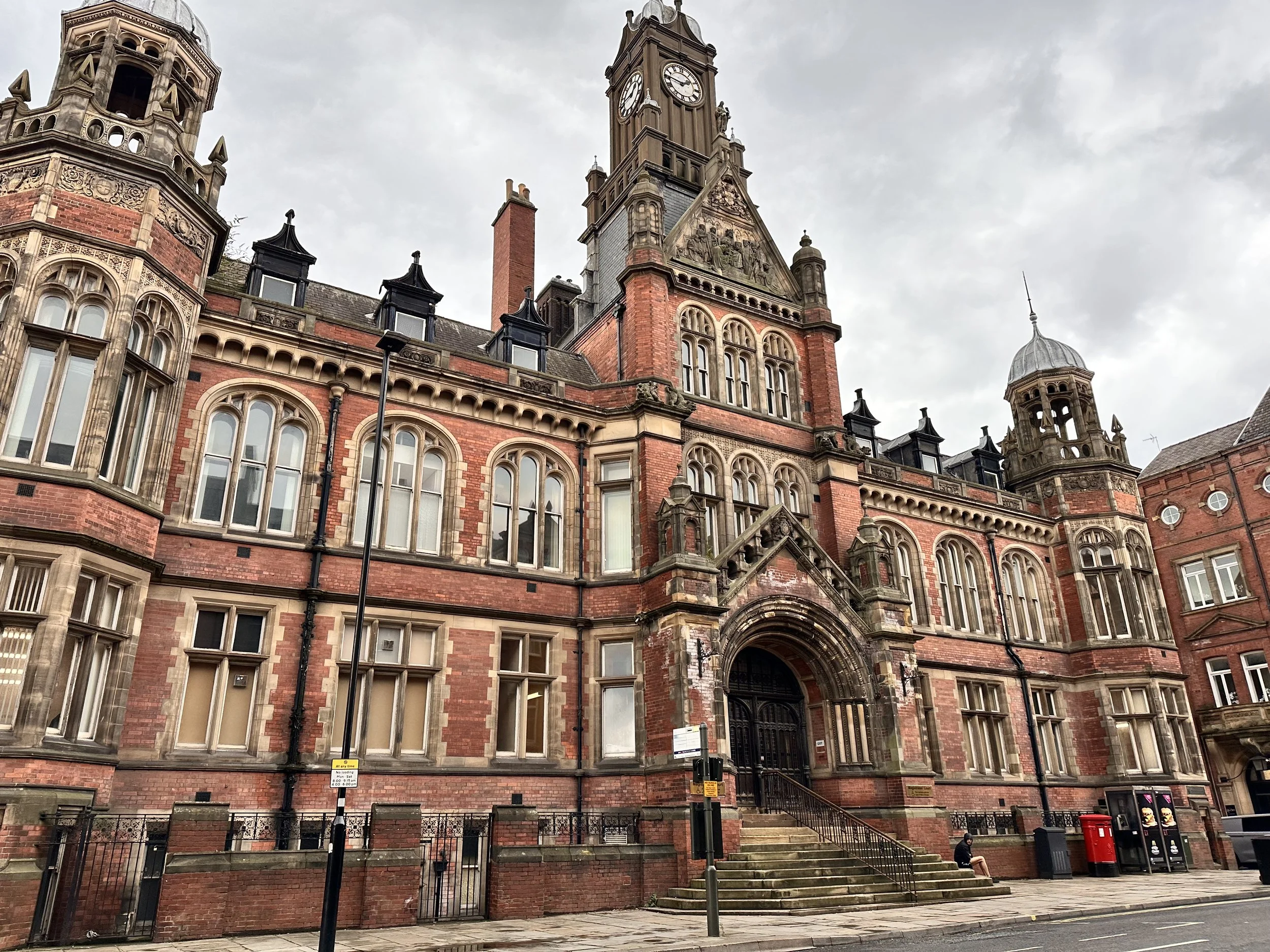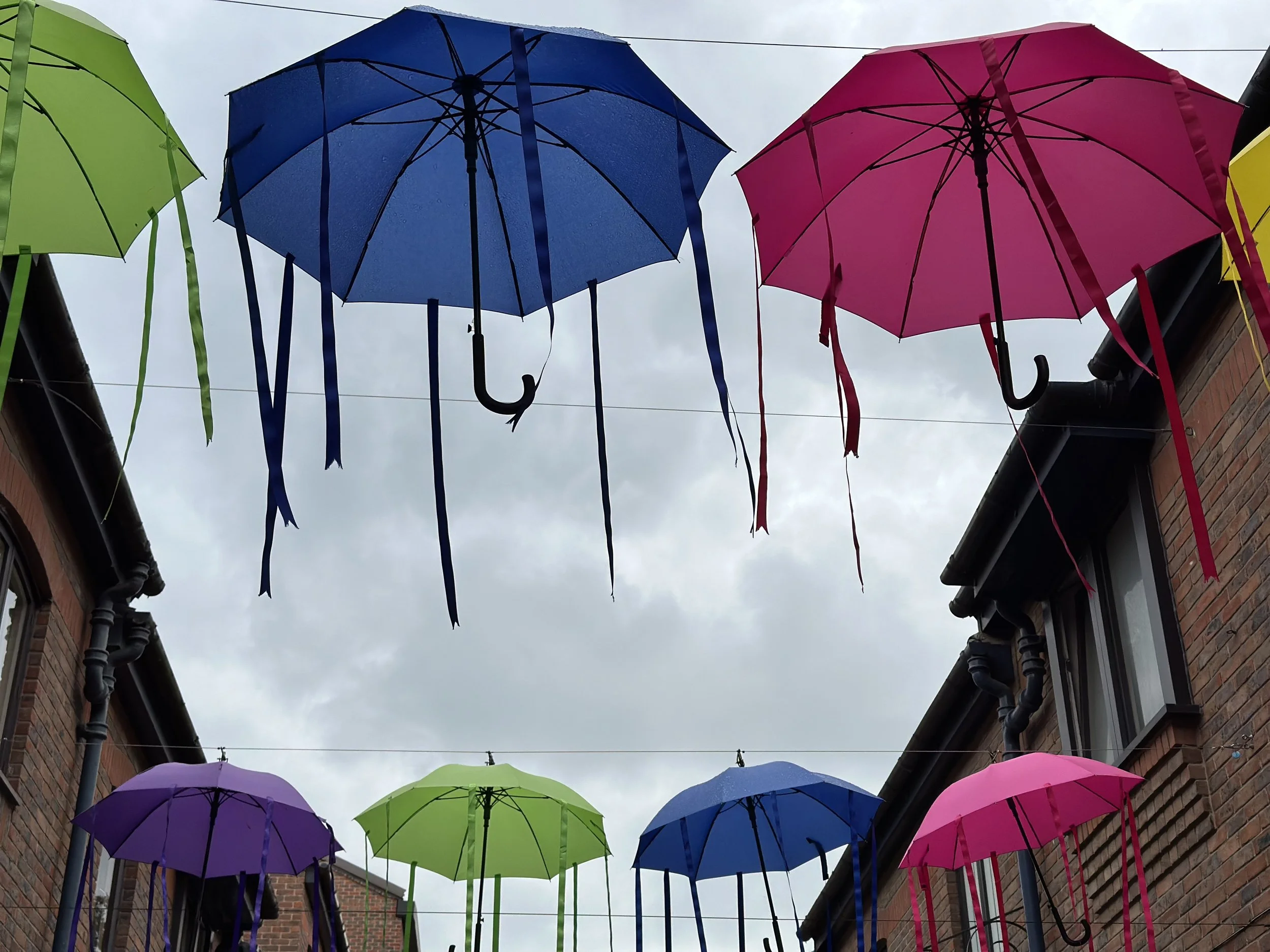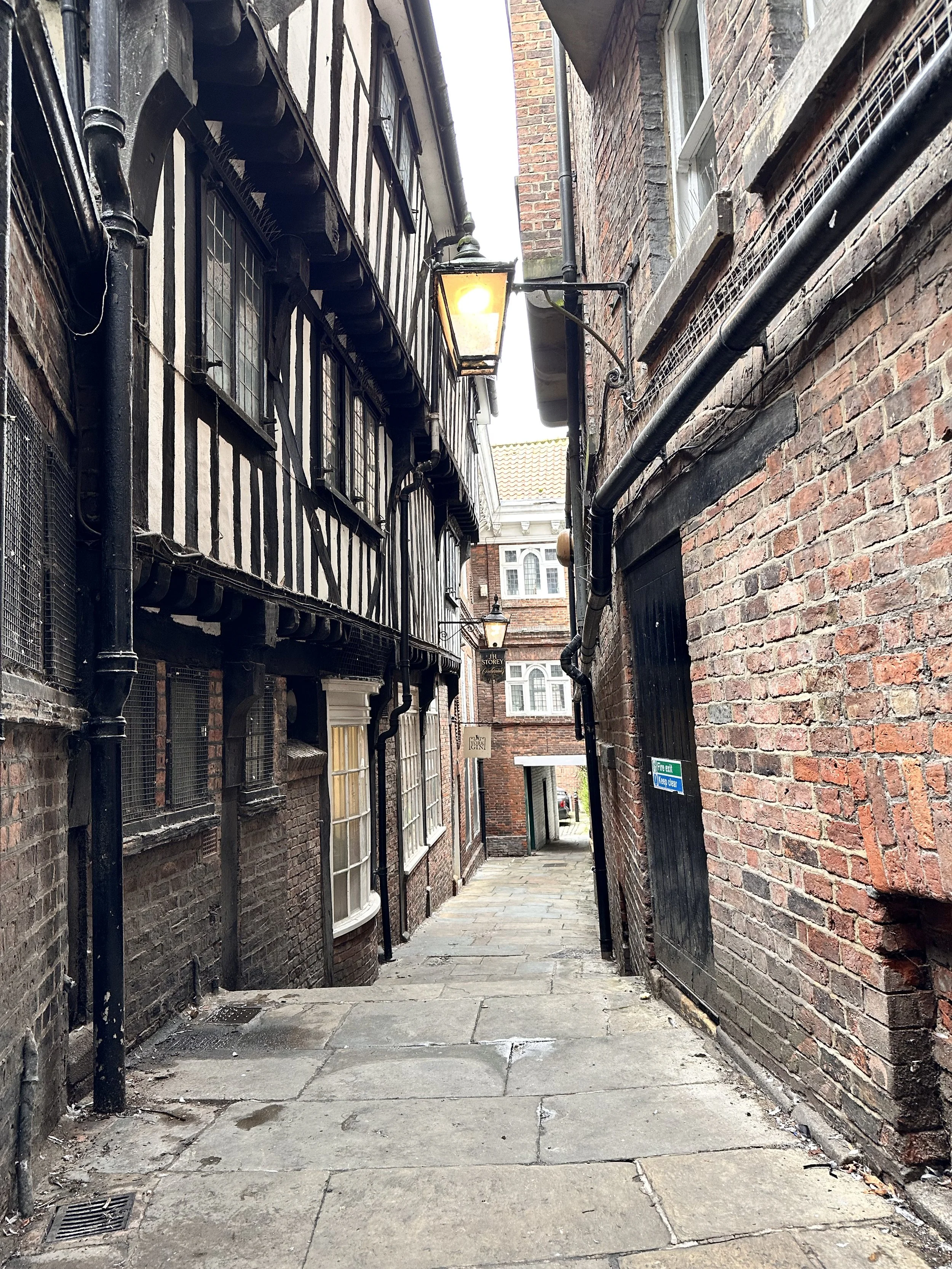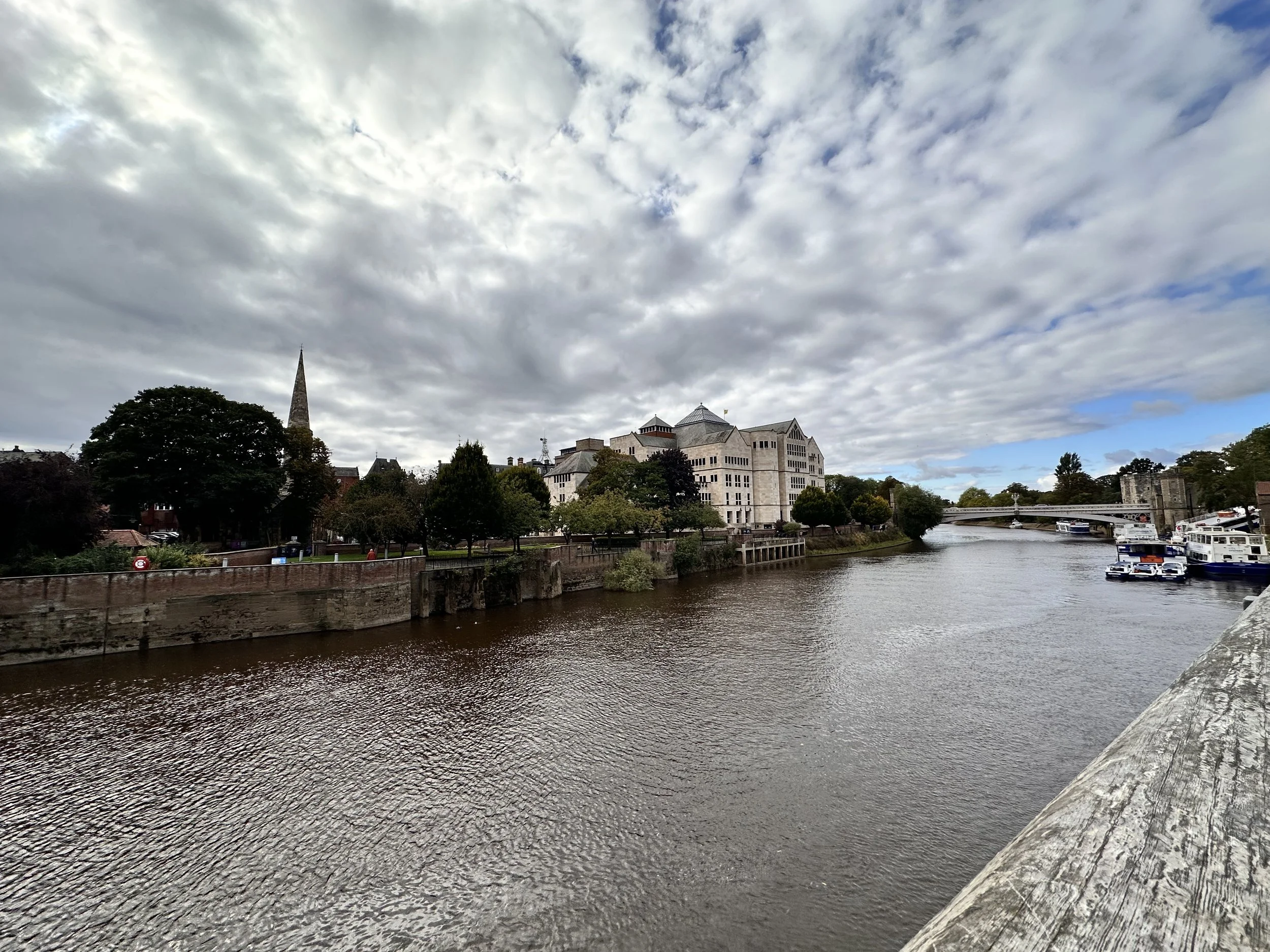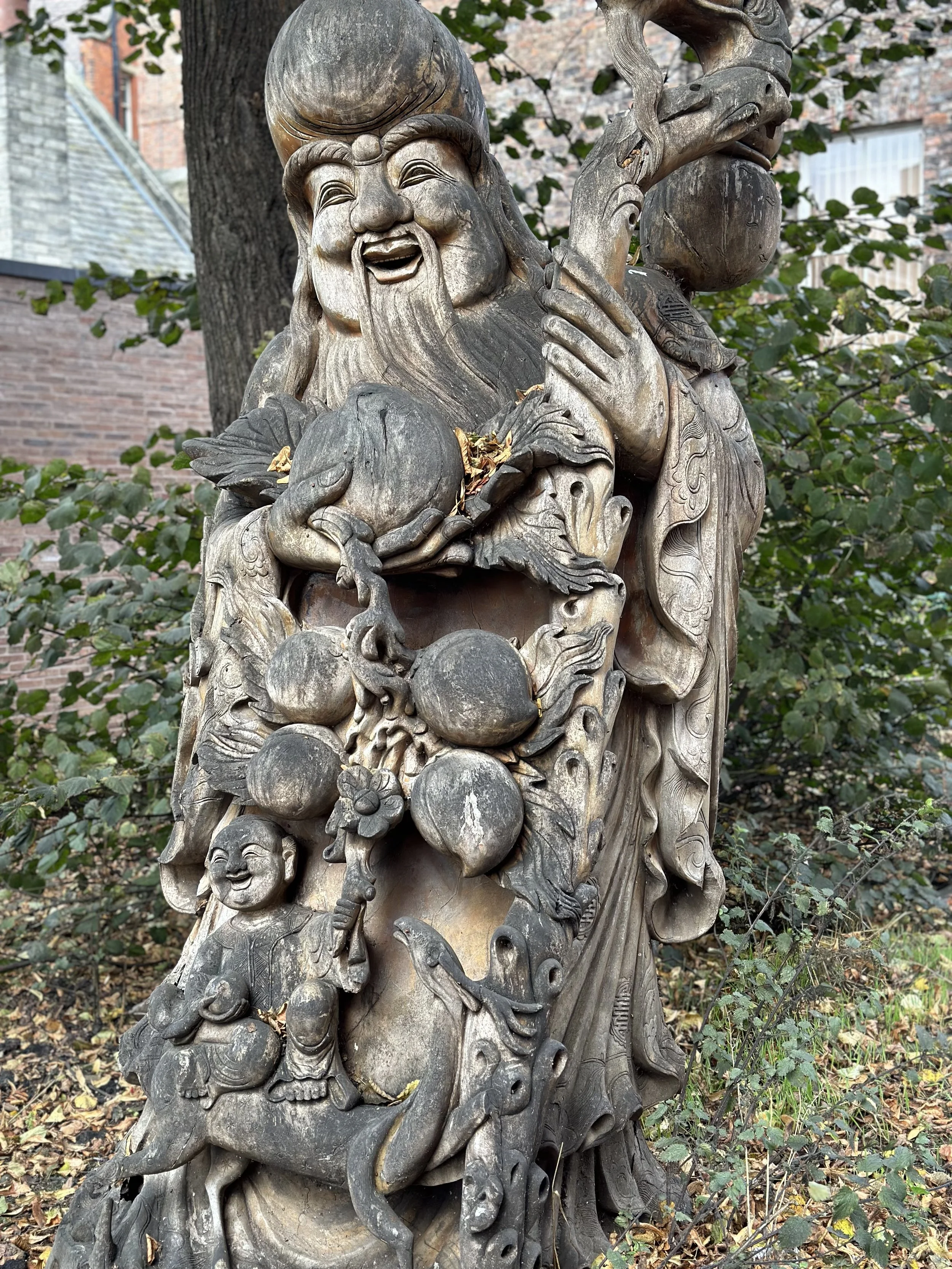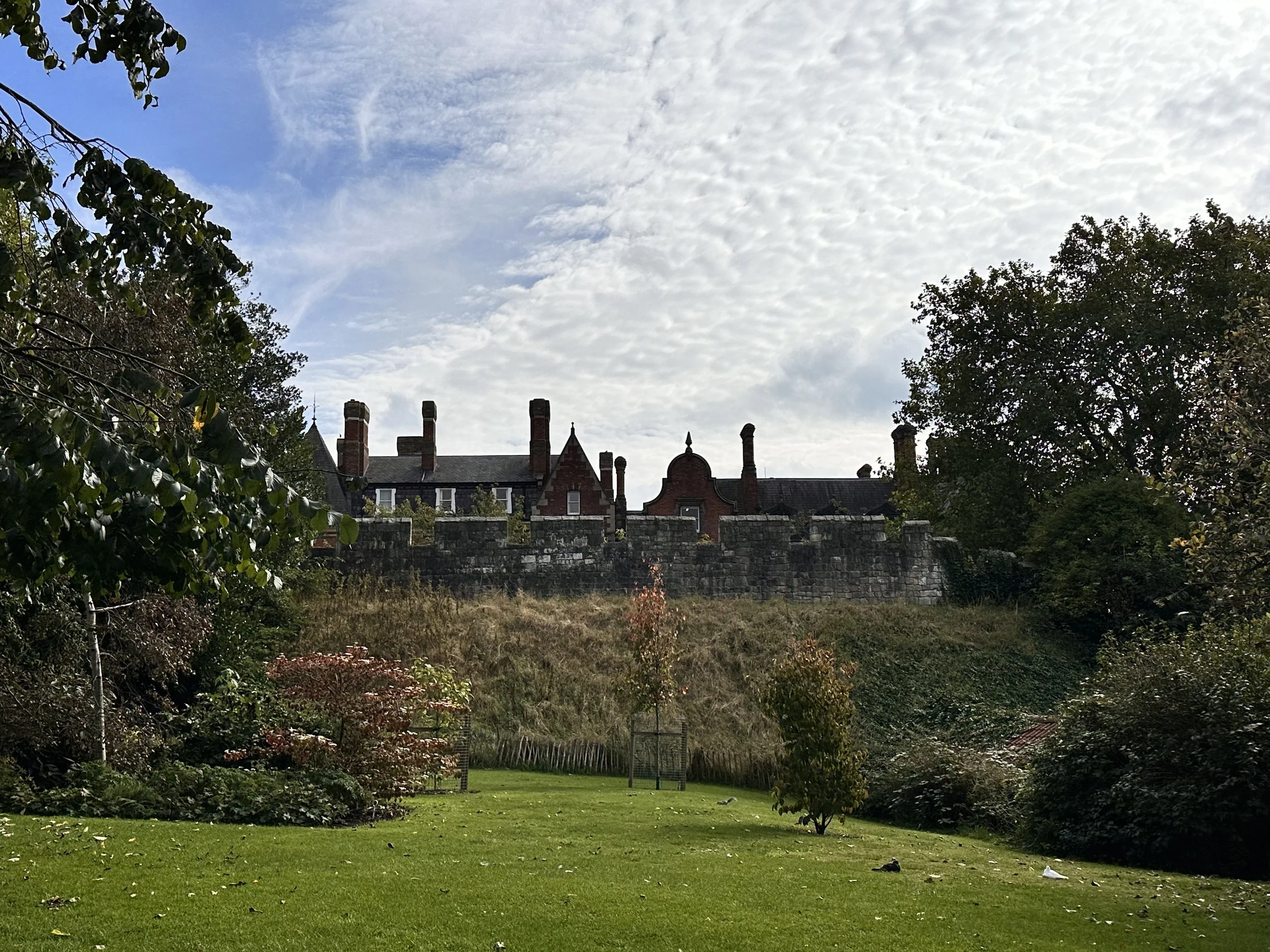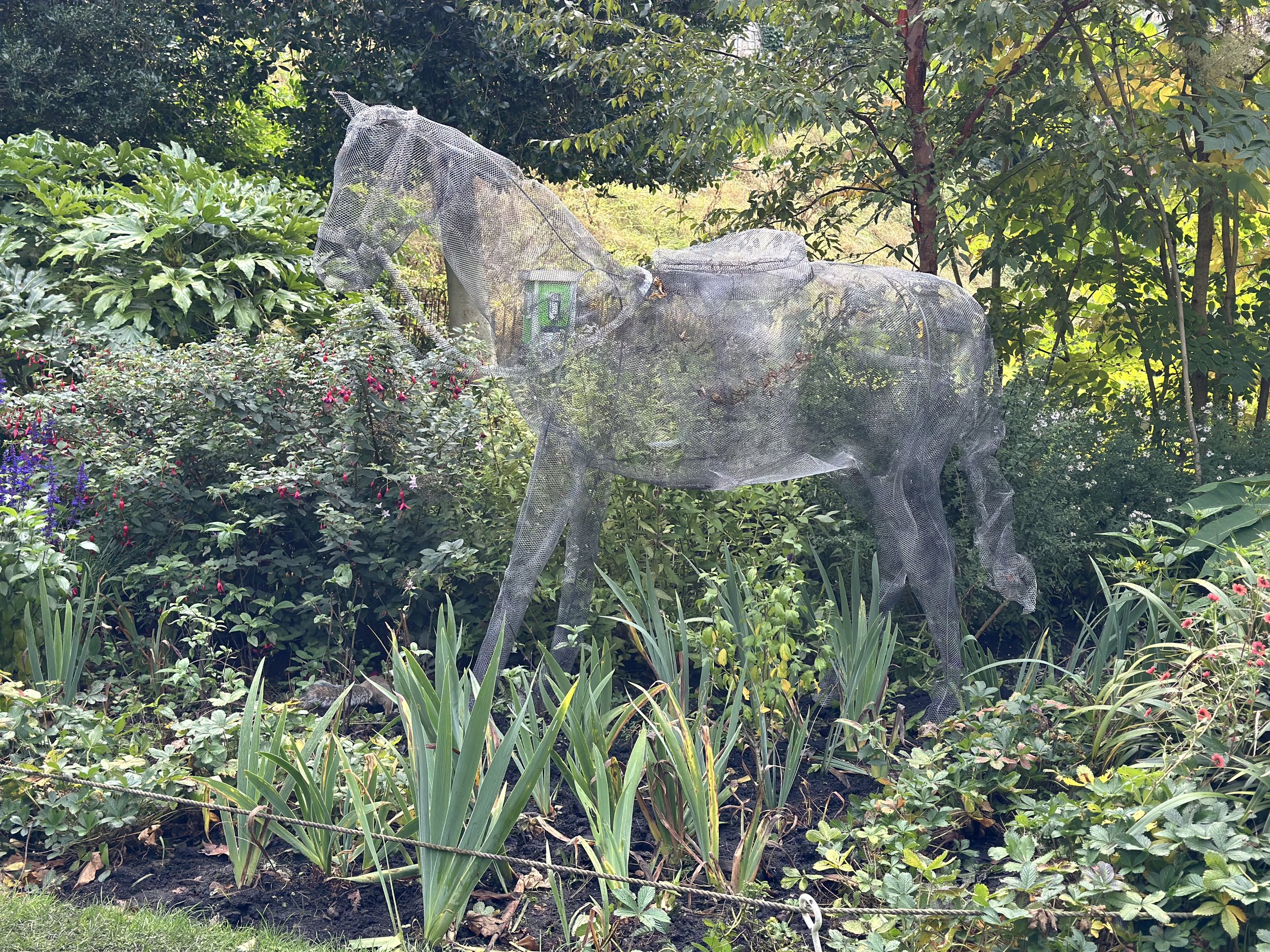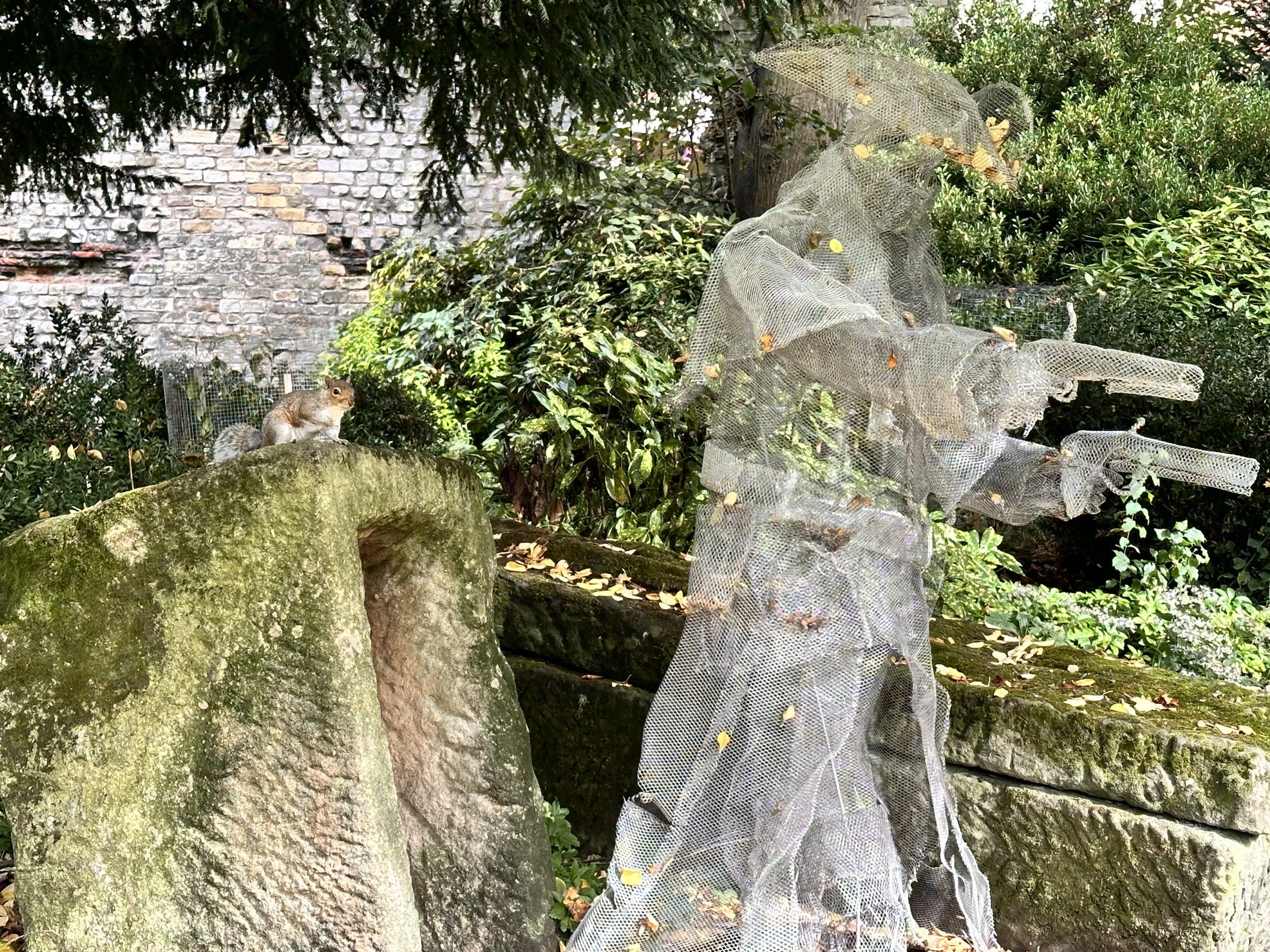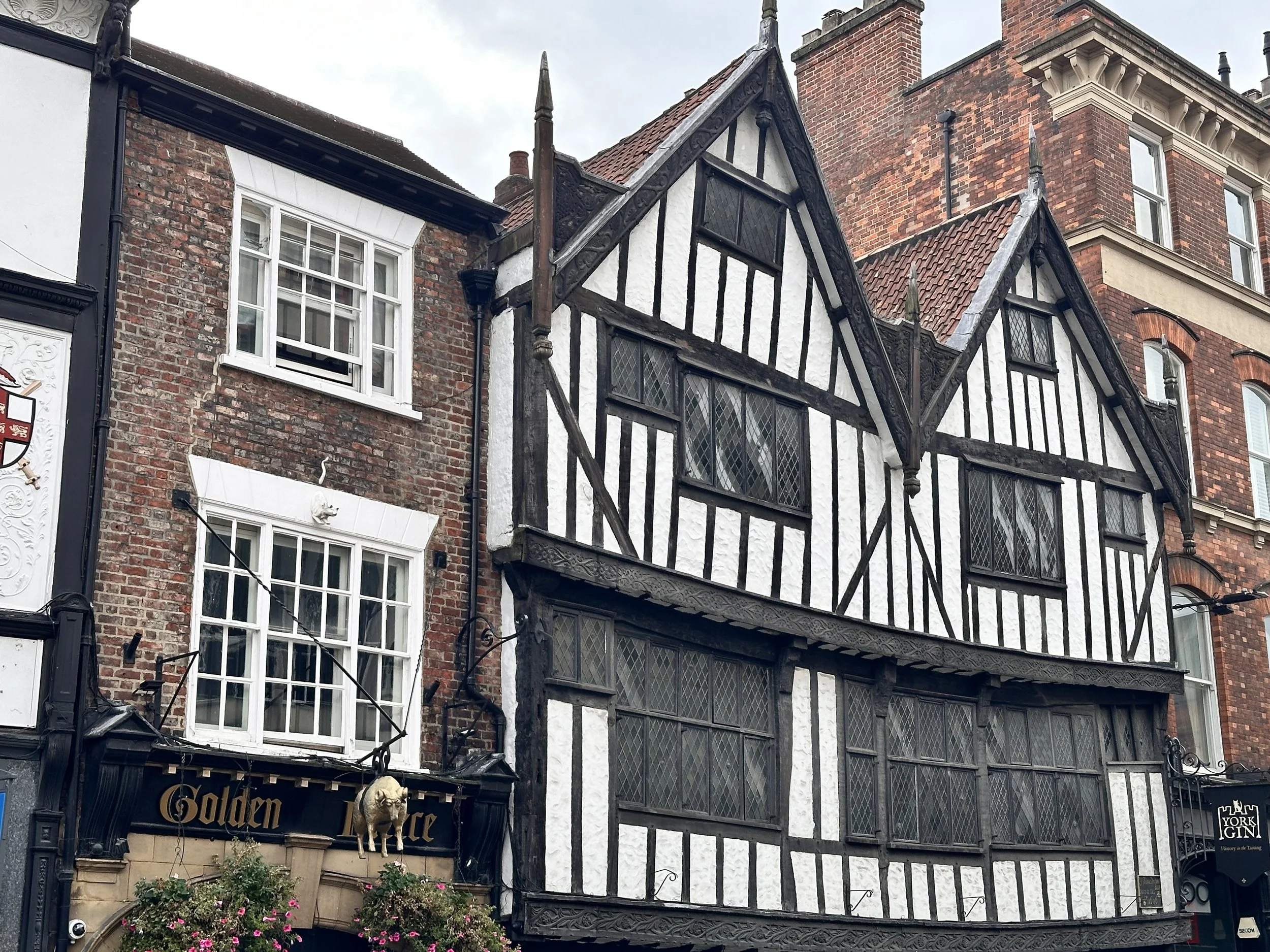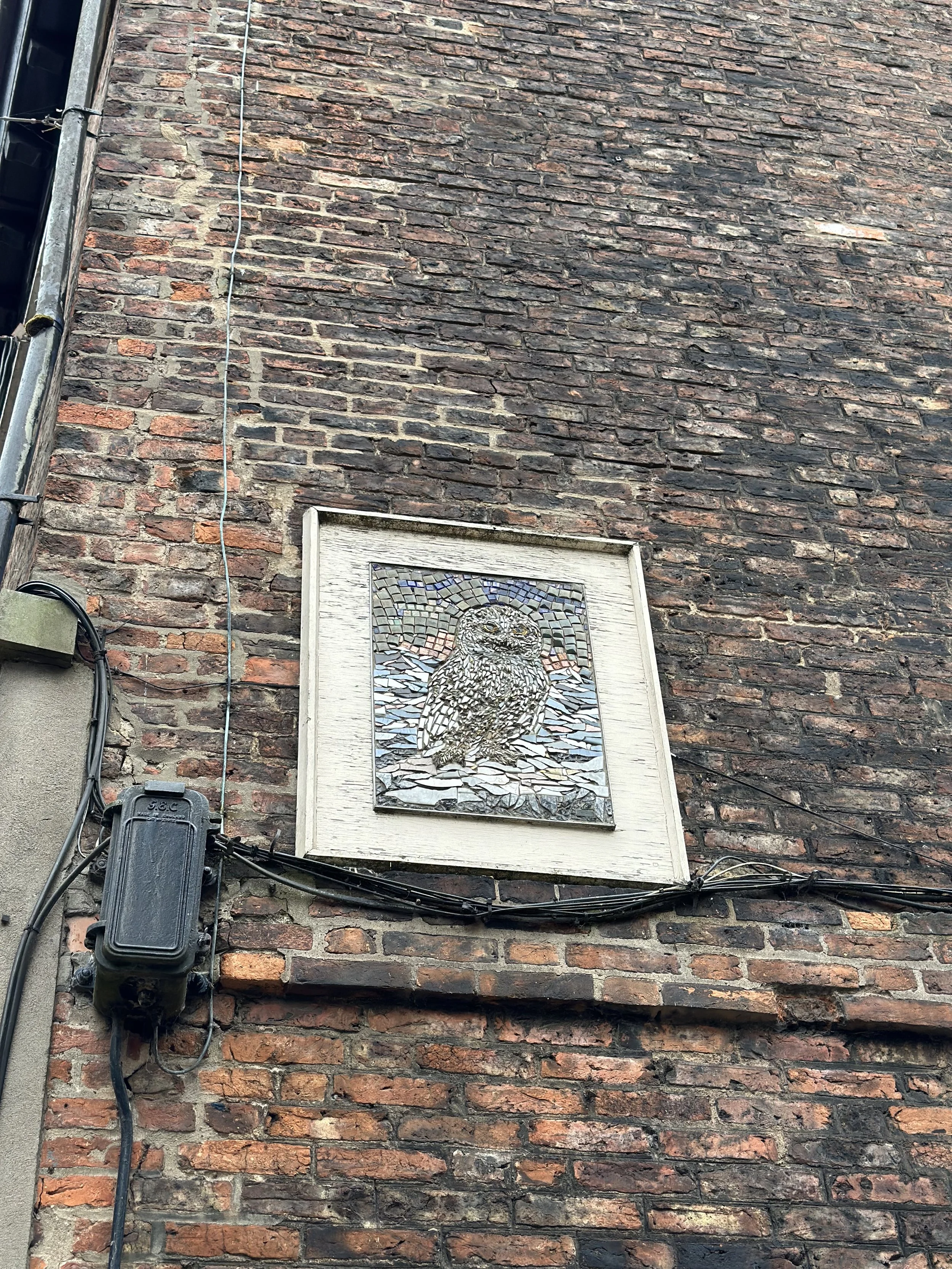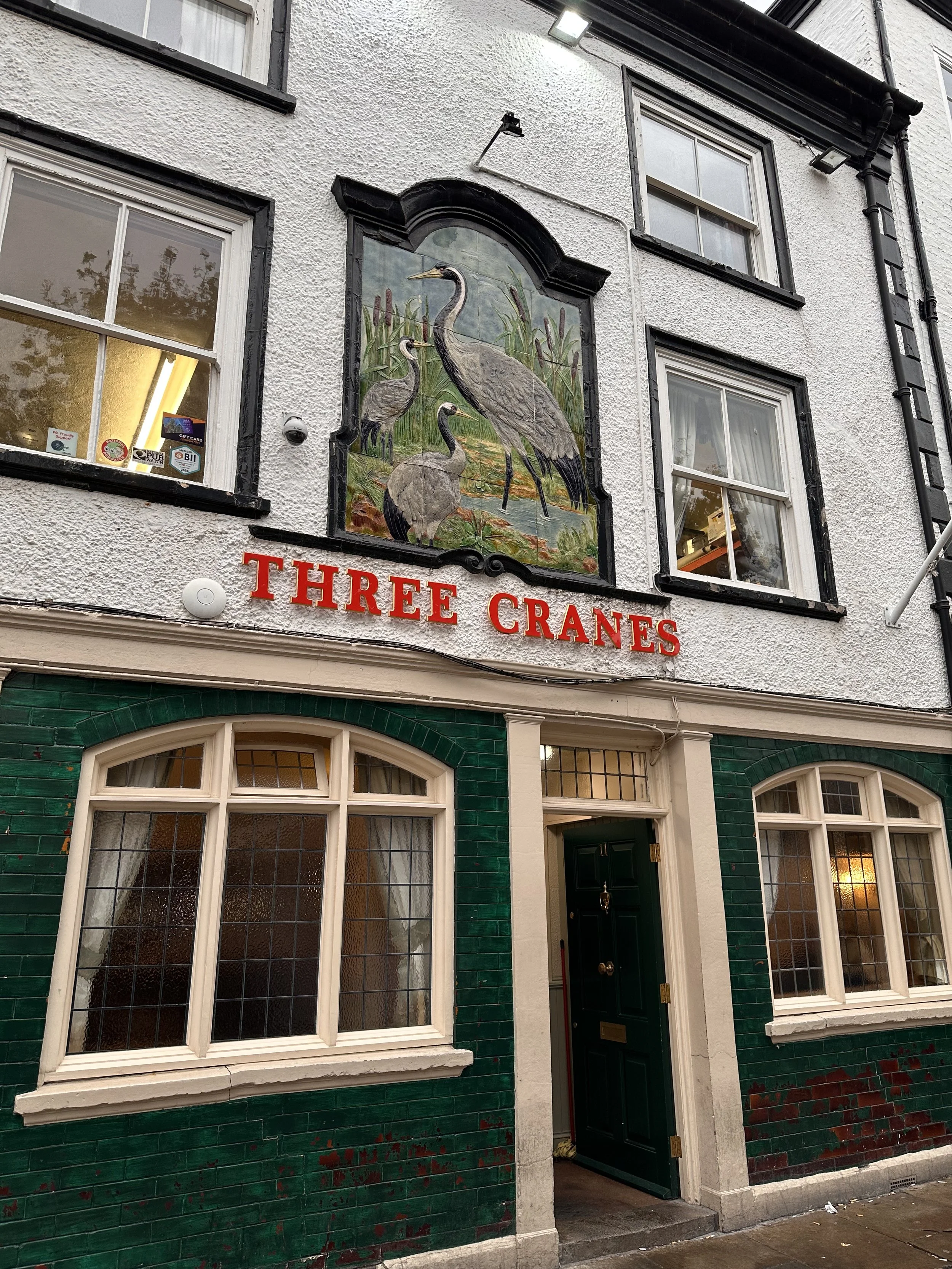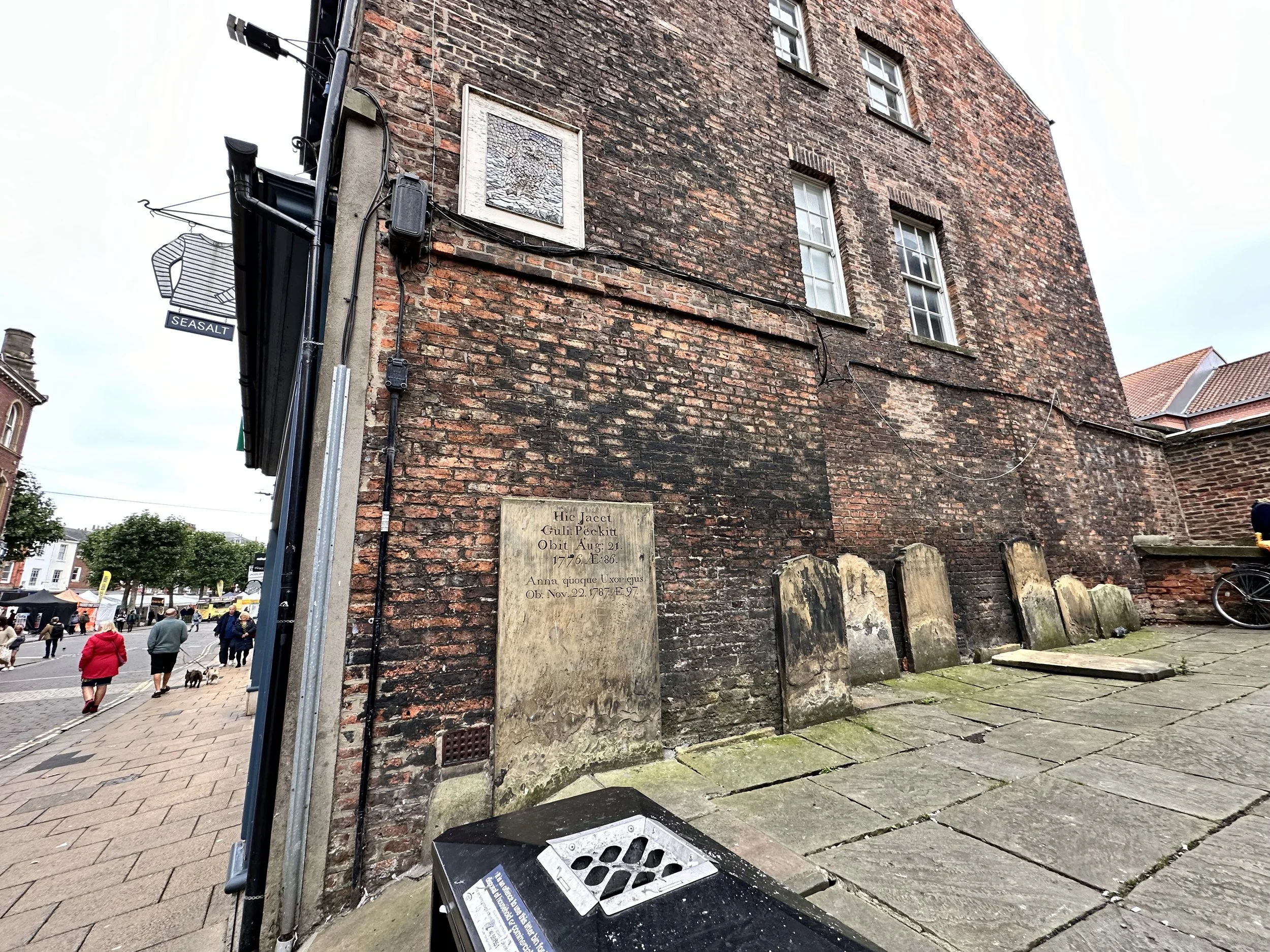Exploring York, england
Time needed in this town: 3-4 nights
It says that York is one of the most haunted towns in the world (some places have a plaque with the list of their ghosts out front) and while that may be true, we found it to be one of the most charming with things to discover at every turn. If you’re a Harry Potter fan, you know The Shambles was most likely the inspiration for Diagon Alley, which makes it all the more magical to visit. But, to the rest of the world, the centuries-old timber houses with uneven floors, the cobblestone streets, and the history all make it worth the visit for a few days.
The below information is a complete guide of the best places to stay, the top rated places to dine and drink, and all there is to see and do. We’ve also included transportation tips, as well as a summary of this insanely haunted town!
Jump To:
Where to Stay
This No. 1 By GuestHouse was previously an old Victorian Mansion that By GuestHouse turned into a fabulous hotel. In fact, they do that with all of their properties around the world.
We stayed in one of the Bootham Suites, #12, which was avant-garde impressive from the minute we opened the door. Immediately, your eye is drawn to the largest rattan lighting fixtures we’ve ever seen, as well as the tallest canopy bed we’ve ever seen. In addition, how they used the layout of the former drawing room to tie in a bathroom, complete with standalone bathtub, while ensuring the bedroom and living areas, remained just that, was so impeccably done.
As for the hotel itself, the details should not be missed - from the giant check-in area cupboard, designed to look like a large-scale model of the hotel, to the spa in the former WWII fallout shelter, to the Pearly Cow restaurant and how beautifully designed that is… there’s a wonderful surprise around every turn.
We highly recommend a stay there!
NOTE: It does has a lift (elevator) for those that need assistance to their floor.
Other Recommendations
Dean Court Hotel (This hotel was built on the site of the original Roman fortress and is haunted by a Roman soldier. He wanders the corridors and has been seen in various mirrors. One guest was pulled out of bed in the middle of the night.)
Where to Dine & Drink
Ambiente Tapas
Contemporary bar with wooden decor for traditional and modern tapas with Spanish wine and sherry.
Arras
Classy, modern restaurant offering tasting menus with creative British cuisine, cheese & wine.
Bab Tooma
Per their site, “Our menu features a wide range of Middle Eastern food, known as Levantine Cuisine, one of the most ancient and authentic culinary traditions in the Arab world.”
Betty’s Tea Room
In 1907, a young Swiss baker and confectioner, Fritz Bützer, left his home to travel to England with a dream of establishing his own business. He spent his first night in the waiting room of Bradford station – penniless, jobless, and unable to speak a word of English. On his arrival in London, he realized he’d lost the address of his destination. All he could recall was that the place he was heading for sounded like 'bratwurst' (German for sausage). A helpful local put him on the train to Bradford. On arriving in the Yorkshire city, he found work at a Swiss-owned confectioners, Bonnet & Sons.
He eventually settled in the spa town of Harrogate by which time he’d changed his name to “Frederick Belmont” and styled himself as a ‘Chocolate Specialist’. It was in Harrogate that Frederick’s luck started to change. Looking for lodgings, he fell in love and later married his landlady’s daughter, Claire Appleton. In July 1919, with the financial support of Claire’s family, the first Bettys opened for business, named after his mom.
Today, it’s a beautiful confectioner shop. cafe, and tea house.
TIP: Make a reservation for tea, as opposed to thinking you can walk into the cafe. The cafe’s line was out the door and about two hours long.
Belmont Room
When you make a reservation for tea, you go in a separate door and up the stairs to the Belmont room. Once there, you feel as though you’ve stepped into the 1940s and it’s fabulous.
The history - In 1936, Frederick Belmont decided to open a new Bettys in York, and he had big ideas for what he envisaged would be his flagship branch. Following a voyage to America on the Queen Mary, Belmont was inspired by the Art Deco grandeur of the transatlantic liner and employed the firm of London craftsmen, responsible for the ship’s grand interiors, to create his dream café. Bettys York, the fourth Bettys café at the time, opened on June 1, 1937 and the Belmont Room became a direct replica of one of the ship’s dining rooms.
OUR EXPERIENCE: As you can see from the video above, the tea service was absolutely wonderful and much of it had to do with our server, Anne, who we cannot say enough wonderful things about. The food, itself, was wonderful and at the end, since we were celebrating our vow renewal, she presented us with Betty’s truffles and oversized chocolate guilds!
Brew & Brownie
Locally sourced fare & house-baked sweets are served with craft coffee & tea drinks in hip digs.
NOTE: While they do have gluten-free bread, they did warn me of a high chance of cross-contamination, so we had coffee and left.
Corner Grill House
À la carte & fixed price menus focused on grill platters in a casual space with cozy interiors.
Delrio’s restaurant
Italian dishes with Sardinian influences, served in a cellar restaurant with vaulted brick alcoves.
double dutch pancakes
Dough Eyed
Unassuming option specialising in Italian-style savoury & sweet pizzas, plus cocktails & craft beer.
El Gaucho
Laid-back Argentine-style steakhouse with rustic wooden tables and alcoves hung with paintings.
Little Italy
Gourmet cuisine in a cosy, bare-brick setting with regular cookery demos and a downstairs deli.
Lucia
Italian restaurant with a cosy, fashionable interior & a lounge for creative & classic cocktails. NOTE: Their gluten-free menu is outstanding!
Melton’s Restaurant
Simple, intimate restaurant for upmarket Modern British dishes including a Yorkshire tasting menu.
Partisan
Cosy, woodsy-chic cafe offering all-day breakfast & lunch staples, plus coffee, tea & baked goods. NOTE: They have gluten-free bread available.
Roots
A Michelin-starred, high-end restaurant offering a seasonal farm-to-table tasting menu in an 1800s building.
Rustique Restaurant
A rustic French menu served in a bright room with wooden tables, mirrors and a stained-glass window. NOTE: They do not cater to Celiac well.
Skosh
Cozy restaurant specializing in creative small plates, plus seasonal cocktails & a robust wine list.
The Blue Barbakan
Bright, rustic Polish dining room featuring wooden tables & a traditional menu.
The Cut & Craft
Craft beers, steaks & burgers served at a chic restaurant that has a sophisticated vibe.
Things to See & Do
Day Tours
Herriot and Yorkshire Dales Day Trip from York
Take a break from bustling York on a full-day tour of Herriot and the Yorkshire Dales, and travel across the mountainous region with ease via air-conditioned vehicle. Discover the region’s top attractions, including the filming location for "Darrowby" in the TV series "All Creatures Great and Small", Bolton Abbey, and Penistone Hill, and benefit from insights provided by your guide, as well as the more personalized experience of a small-group tour.
North York Moors and Whitby Day Tour from York with Steam Railway
Discover the best of Whitby and the North Yorkshire Moors on this captivating full-day tour. Start in the charming market town of Pickering, then explore the North Yorkshire Moors National Park. Visit the moorland village of Goathland, known as ‘Hogsmeade’ in 'Harry Potter.' Enjoy Whitby’s seaside charm with fish and chips, stroll the harbor, and visit Whitby Abbey. Conclude in Glaisdale, home to the romantic Beggers Bridge.
The Yorkshire Dales of All Creatures Great & Small
Delve into the Dales and discover the scenic heart of Yorkshire on this full-day tour from York. Discover the life of James Herriot with a visit to the World of James Herriot and then explore the scenery made famous by “All Creatures Great and Small”. Set out on an epic circuit of the Yorkshire Dales, stopping to admire the heather-covered moors and peek into traditional Dales villages like Grassington, Hubberholme, and Yockenthwaite. Along the way, pass photo-worthy landscapes like Nidderdale, Kilnsey Crag, and Aysgarth Falls; and discover the Dales’ most famous cheese at the Wensleydale Creamery.
Hauntings
5 College Street
A ghostly child has been seen staring out of the window in the upper floor of this ancient building. According to legend, her parents contracted plague and the family was bricked up within their house to prevent contamination. The girl however was free of disease. Her parents died and the child starved to death.
Foss Gate Bridge
A lady in a shroud, possibly the same woman who stalks St Crux, has been seen wandering down Fossgate to the bridge, where she disappears.
Golden Fleece York
Opened since 1503 (as a pub and inn), the Golden Fleece York is said to be the most haunted pub in the world. If you want to take it one step further in meeting some of these otherworldly spirits, stay in one of their four ensuite guest rooms.
This alleyway off Coney Street leads into a courtyard and, beyond, a four-storey Georgian building. Between 1720 and 1806 it provided lodgings to Britain’s most senior judges before they set out to York Castle to pass sentence on serious criminal cases. The building has since been used as a solicitors’ premises and is now a hotel.
The ghostly figure of a large black-clad man has been seen here, his wanderings accompanied by a metallic rattling. Years later, the bones of a large man were discovered in a disused well near here. The remains of his riding boots were also found, including a broken spur.
Lund’s Court (formerly Mad Alice Court)
Mad Alice haunts this snickelway. Beaten remorselessly by her husband, she finally attacked and killed him. The murder caused her to go insane, and she was hanged at York Castle in 1825. Her face can sometimes be spotted at one of the windows looking down over the lane.
Mickelgate Bar
This gatehouse was the traditional ceremonial entrance for royalty, who would typically approach the city from the south. The exterior of the bar bears a royal coat of arms, the city’s gold lions on a red cross, and the arms of York’s Lord Mayor. The arch is probably Norman. The lower section is 12th century with the rest being mostly 14th century. The heads of traitors and rebels were placed on Micklegate bar and sometimes remained in place for years.
All manner of ghostly activity has been reported inside the bar, most of it attributed to Sarah Brocklebank, daughter of an 18th century gatekeeper. She mislaid her father’s keys and caused him to lose his job. The family became destitute and in revenge, she now haunts the gatehouse. A helpful ghost in the form of a medieval friar has also been encountered.
Royal Oak Pub
The building is reputedly haunted by several ghosts. There is an old prostitute in the front bar; ghosts of children playing by the fire; a tall, gaunt man in the back room and two female ghosts, one on the first floor called Alice and one in the flat above the pub called Mary.
The Black Swan
The pub dates back to the 15th century, when it was a private house. It was believed a passageway ran from the site to St Cuthbert’s church opposite. The pub is haunted by a number of ghosts, including a tutting man in a bowler hat, a young woman in a white dress, and a pair of legs that descend a staircase.
THE COCK AND BOTTLE, SKELDERGATE
Although the pub is relatively modern, it is haunted. A landlady was disturbed by a ghostly apparition while taking a shower. It has been suggested the ghost was George Villiers, an alchemist and libidinous hedonist from the reign of Charles II. The ghost, said to be malevolent and quite ugly with wavy black hair and a large nose, hates crucifixes.
The Old White Swan
The Old White Swan is a collection of around nine buildings, some dating back to the 16th century. It is haunted by the ghosts of Papists, who gathered in the pub for secret meetings. Figures have also been reported standing around an open fire, laughing amongst themselves.
The Punchbowl
This 17th century pub is haunted by two ghosts. The first, dating from when the building was used as a brothel, is of a woman who was strangled to death by one of her clients. The second is of a landlord who died in a pub fire. Years later the cellar floor was lowered. A glowing orb seen to move around the bar area is though to be the landlord’s head.
The Snickelway Inn
This pub is a 15th century galleried inn, used as a brothel and a gunpowder storehouse in its lifetime. Along with the Golden Fleece, it claims to be York’s most haunted pub. Ghosts include an old man who sits on barrels in the cellar, the young daughter of a past landlord, and a woman – Mrs Tulliver – and her cat, Seamus. The pub is also afflicted with ghostly smells, in cluding the scent of lavender.
The Windmill, Blossom Street
This pub is supposedly haunted by a young girl, run over by a cart, and a poltergeist; mist has been seen rising inside the building, lights switched on and off, footsteps heard and bottles and glasses shattered.
York Arms
A grey lady haunts this city center pub, as well as a medieval nun (people say it’s the same nun seen walking towards Bootham Bar). Like the Theatre Royal ghost, she was reportedly bricked up alive after giving birth. She may be responsible for some poltergeist activity, and has been known to materialize in the gentlemen’s wash room.
WANT A GHOST TOUR?
Historical Exploration
Baile Hill
Baile Hill is a man-made earth mound in the Bishophill area of York. It is the only remaining feature of the fortification known as the “Old Baile” .
The origins of Baile Hill date back to 1068. Having seized York in that year, William the Conqueror built a castle on the south side of the city close to the River Ouse. Then, as a response to a rebellion the following year, a second castle was built on the opposite side of the river. There is no clear evidence which of these castles was built first, but it is generally thought to be the one which stood on the site of the later York Castle on the east side of the river, followed by the Old Baile on the west side.
Bootham Bar
Bootham is a continuation of Petergate outside the city walls. There has been a gateway here for nearly 2000 years and Bootham Bar stands on the site of the western entrance to the Roman fortress. The archway of the existing structure is Norman and the rest is 14th century. In 1501, a door knocker was installed as Scots were required to knock first and seek permission from the Lord Major to enter the city – the gates were normally locked from 9pm to 4am and the keys were kept by the Mayor.
Clifford’s Tower
The imposing Clifford’s Tower is the last remaining structure of York Castle. It sits on a small hill overlooking the city, and while there’s not a lot to see inside the tower itself, the view from the top is worth the climb.
Cold War Bunker
Originally built in 1961, the York Cold War Bunker was one of 30 built around the country to monitor nuclear explosions and fallout in the event of a nuclear war. The building was used throughout its operational existence as the regional headquarters and control center for the York Division of the Royal Observer Corps (ROC) - a group of volunteers that met for weekly training scenarios, ensuring that they could pinpoint the location and scale of any nuclear detonation in the county.
Grape Lane
The site of the street lay within the city walls of Roman Eboracum, and Roman goods have been found under the soil. Remains of Medieval buildings have also been found.
The street was first recorded in 1276 as "venella Sancti Benedicti". By 1329, it was known as "Grapcunt Lane", believed to be in reference to prostitution in the area. St Benedict's Church, on the street, was built in 1154, but had been demolished by 1300. Its site was later given to the Vicars Choral of York Minster, and the site became known as "Benet's Rents".
The Grape Lane chapel was constructed in 1781 for the Countess of Huntingdon's Connexion. It was sold to the Methodist New Connexion in 1799, let to the Wesleyan Methodists in 1804, and then sold to a Calvinistic Baptist group in 1806, and on to the Primitive Methodists in 1820. Later serving as a furniture store, it survived until 1963, when it was demolished.
Hamlet of St. Marygate
During Roman times, Bootham was the main Roman road from York to Catterick. The area where Marygate lies was used for burials. Marygate was outside the northern limit of the Roman settlement. In the early-11th century, the area was known as "Galmanho". Viking earl Siward built St Olave's Church on the street, and his house probably also lay on the street, the area later becoming known as "Earlsburgh".
Built in the Medieval period, the street known as St Marygate, was named for St Mary's Abbey, within the liberty of which it was located. It lay immediately north of the abbey, from which it was separated by a ditch and narrow strip of land, and from the 1260s, also by a wall, which was turned into a major defensive structure in the following century. The wall runs the complete length of the street. On the street's corner with Bootham lay St Mary's Tower, while at the River Ouse end was a landing, used principally by the abbey.
Jorvik Viking Centre
In the 1970s, excavations uncovered a Viking settlement beneath the streets. The site of that settlement now houses Jorvik (the Viking name for York), an interactive exhibition that brings to life the 9th-century village. A ride takes you through a smells-and-all reconstruction of the village, complete with disarmingly life-like animatronic characters and an audio guide that describes Viking life.
Merchant Adventurers’ Hall
The Merchant Adventurers’ Hall is a medieval guild hall in the city and is still in use today.
The majority of the Hall was built in 1357 by a group of influential men and women who came together to form a religious fraternity called the Guild of Our Lord Jesus and the Blessed Virgin Mary. In 1371, a hospital was established in the undercroft for the poor people of York and, in 1430, the fraternity was granted a royal charter by King Henry VI and renamed 'The Mistry of Mercers'. It was granted the status of the Company of Merchant Adventurers of the City of York by Queen Elizabeth I in 1581. The principal parts of the building are the Great Hall, the chapel, and the undercroft.
The Great Hall is a timber-framed structure and was built over a five-year period. It is the largest timber-framed building in the UK still standing and used for its original purpose. The roof of the hall is of two spans supported by a row of large central timber posts. It includes complex crown posts and is held together by wooden pegs. The undercroft, like the Great Hall, is divided in two by its supporting row of timber posts. The undercroft also provides access to an attached chapel built for the use of the ill and poor in the hospital, as well as the members of the Merchant Adventurers' Guild. It is still used for worship.
The Hall belongs to and is still regularly used by The Company of Merchant Adventurers of the City of York, who, although no longer dedicated to mercantile activities, are prominent in York and still exist as a charitable membership group.
National Railway Museum
The BNRM is the world’s largest and arguably, best preserved, collection of train cars and locomotives. The museum includes hundreds of locomotives of every sort, spanning more than 300 years of railway history in life-sized glory. It allows visitors to see, touch, and climb all over a piece of actual history.
NOTE: The trainyards, surrounding the museum, provide working demonstrations of locomotives as they were intended to be – chugging, steaming, or muscling their way down a pair of iron tracks.
Roman Bath
Located in the center of York, in the cellar of a rather unassuming pub, lies one of the few Roman remains still visible in the city; the Roman bath house.
Originally built by the 9th legion sometime between 71 AD and 122 AD, the complex would have covered an area of around 656 sq. ft., although only the caldarium (hot room), a small section of the frigidarium (cold room), and a single plunge pool have since been excavated.
Late in the 4th century AD, the cold room’s plunge pool was filled up with limestone blocks, indicating that the facility had fallen out of use by that time. By the 5th century AD and the Roman withdrawal from Britannia, the remaining sections of the bath house would almost certainly have been in ruins.
Excavations of the bath house first took place in the 1930’s, when the ruins were accidentally stumbled upon during renovations to the pub above. In 1972, excavations on the other side of Swinegate revealed additional stone buildings of Roman date, some standing nearly 9 ft. high. It is thought that these structures marked the other end of the baths.
NOTE: You can walk into the pub and ask to see the museum on the floor below.
Tyburn Tree
For nearly half a century, York Castle dispatched its convicted felons on a contraption called the “Three-Legged Mare”, on the southern approach into the town. This wooden device with portable appendages, was used as a gibbet from the 14th through 19th-centuries.
Walmgate Bar
This is the only gatehouse to retain its outer defensive barbican. The bar is largely 12th century, but has been much restored. Its wooden doors are 15th century. At its rear, is a small timber-framed building, which was leased as a house. The artist and historian, John Browne, was born here in 1793. Others have lived here on and off until 1957.
York Castle Museum
From recreated Jacobean dining rooms to toy exhibits from the 20th century, there’s an impressive array of collections. One of the most notable: A reconstruction of a Victoria street where you can walk into different shops, or simply sit and take in the atmosphere as the scene changes from day to night.
OUR EXPERIENCE: This museum was so much fun! It’s one of those museums that quickly walks you through the evolution of York, focusing more on the Medieval and Victorian eras that yes, walk you through York during Victorian times (you can even buy old-time candy from one of the shops on the street). It then takes you through both wars and the 1960s, and rounds it out with the ability to operate old-time game machines. It is a must-do!
York City Walls
York's city center is surrounded by 13th century walls, which are free to access on foot throughout the year. No visit to York would be complete without a walk around them. At 2 miles long, the beautifully preserved walls are the longest medieval town walls in England.
Religious History
All Saints, North Street
Founded in 1089, All Saints grew over subsequent centuries to include up to five altars in the church, but these were removed during the Reformation. The spire is 14th century. In the early 15th century, a hermitage was attached to the rear of the church. It was home to one Emma Raughton, who received visions of the Virgin. She was able to hear Mass through small openings called squints, which are still visible today.
Reliquary of St. Margaret Clitherow (Pearl of York)
Margaret Clitherow was alive during the European Renaissance, which meant she experienced religious persecution (Queen Elizabeth I was on the throne and Protestantism was the dominant religion). A recent convert to Catholicism, Margaret was fined and jailed for not attending Anglican services on several occasions. It would be her harboring and concealing of priests in her home that would be her undoing.
In March 1586, a monk was discovered hidden in her home in the Shambles. She was then hauled off to Guildhall to stand trial and await punishment. She refused to confess any crimes because she believed she had done nothing wrong. They ordered her execution, even though she was pregnant. The sentence: Being pressed to death (with nearly 800 pounds of weight), within the confines of the toll booth at Ouse Bridge. Margaret was beatified in 1929 by Pope Pius XI and canonized in 1970 by Pope Paul VI. Today, the remnants of one of her hands is on display at the convent.
St. Leonard’s Hospital
St. Leonard’s was the largest medieval hospital in England and cared for the ill and infirm of York. Originally founded as St. Peter’s hospital in 936, it once had over 70 staff, supporting 225 beds. The hospital also fed the poor and the condemned, providing meals for the prisoners in York Castle. Remains of the hospital’s undercroft can be explored today.
FOLKLORE: According to folklore, a monk at St Leonard’s was prone to revelry. Discovered drunk amongst the townsfolk, his punishment was decreed by the prior: to be walled up alive within the hospital’s cellars. Once imprisoned, the monk pushed his way through a rotten wall to the cellar of St Mary’s Abbey next door, where he passed himself off as a newly-arrived novice monk. After a year, he was made cellarer and put in charge of the abbey’s food and wine. Sure enough, he was caught drinking the abbey’s supplies and once again, as punishment, sealed up alive within the abbey’s cellar walls. The cellarer at St Leonard’s heard singing, unblocked the wall and found the monk still alive a year on. Thinking this a miracle, the monks rejoiced and made him prior of the hospital.
St. Mary’s Abbey
The ruins we now see are all that remains of one of the wealthiest and most powerful Benedictine monasteries in England. Its story ties together two of the most important events in English history: it was begun by William the Conqueror to reinforce his hold on the north after 1066 and ended by Henry the Eighth as a consequence of his Reformation of the church.
The monks would spend their days working in abbey administration, copying books, trading with merchants, providing food and supplies for the monastery, managing the abbey’s estates, and helping the poor.
Visitors can see the remains of the walls of the nave and crossing of the abbey church, where the monks prayed and sang, and the cloister, where the monks washed their clothes, contemplated, and were allowed to speak.
The stone walls that surrounded the abbey were built in the 1260s and they remain the most complete set of abbey walls in the country. They were built to defend the abbey and were used several times when the city and the abbey came to blows over land ownership and taxes.
NOTE: The gateway on Marygate, next to St Olave’s Church, was the main entrance into the abbey. It was here that the poor could come and claim alms. The building, known as St Mary’s Lodge, is now the headquarters of York Museums Trust.
York Minster
While many churches stood on the site of York Minster, the one that begun construction in 1215 is (more or less) the one we see today. The north and south transepts were the first new structures; completed in the 1250s, both were built in the Early English Gothic style but had markedly different wall elevations. A substantial central tower was also completed with a wooden spire on top. Building continued into the 15th century.
The English Reformation, during the 16th century, led to the looting of much of the cathedral's treasures and the loss of much of the church lands. Under Elizabeth I, there was a concerted effort to remove all traces of Roman Catholicism from the cathedral, which meant much destruction of tombs, windows, and altars. After this died down, the church was largely restored during the 1700s and 1800s, save for a few fires during that time.
In 1984, a fire broke out, due to lightning strike, which took 114 firefighters to put out. The roof was purposely collapsed in that fire to save the rest of the cathedral from complete destruction. The glass of the south transept rose window was shattered by the heat but the lead held it together, allowing it to be taken down for restoration. A repair and restoration project was completed in 1988 at a cost of £2.25 million.
In 2007, renovation began on the east front, including the Great East Window, at an estimated cost of £23 million. The 311 glass panels from the Great East Window were removed in 2008 for conservation. The project was completed in 2018.
Hidden in the north transept of York Minster is a grand clock depicting the motion of the Sun and Stars around a map of the city of York, at the center, with the Minster highlighted in gold leaf. It was designed and created by Dr. R. d’E. Atkinson of the Royal Greenwich Observatory, in 1955, to commemorate the 18,000 airmen (from the area) who fought for the Royal Air Force during WW II.
Dated to the 12th-century, this carved monolith depicts vices and divine punishment alike. It was likely part of the Norman Minster that pre-dated the current building. On it, carved imagery includes a woman representing lust, men with bags of coins that represent avarice, and a cohort of demons that torture them all in Hell. There are also images of toads depicted, they represent unclean symbols meant to cleanse the sins and transgression of the departed souls.
Part of a Roman column
Much of the Undercroft and the Crypt has been turned into a modest museum showcasing artefacts found on the site and explaining how the Minster is built. Fragmentary remains of Roman plasterwork can be seen, as well as foundations of the nave walls.
Take a tour of the Hull Minster in Hull and get great views of the city during this tour. The Hull Minster is the city’s tallest building that is accessible to the public and stands at over 150 feet (46 meters) tall. Make your way to the tower and climb up the medieval staircase to the bell chamber for incredible views of Old Town Hull, the docks, marine, and beyond.
To book the tour, click here.
Unique Experiences
Cat Statues of York
Cats have played a part in York’s history and luck has been linked with them since records began. The original cat statues (from Medieval times) were placed on buildings to frighten away rats and mice, which can carry plague and illness. They were also thought to ward off wandering evil spirits and generally, to bestow good luck and good health on citizens who needed feline friends to ensure a good night’s sleep. Nearly all have been replaced at various points in history, due to the original ones having rotted away.
Chocolate Story
FUN FACT: 6 million Kit Kats are made in York each year, as it was created in York! They are not just a shop, but also a whole learning experience. Take the tour and/or visit the museum of the KitKat while you’re there.
Käthe Wohlfahrt
Käthe Wohlfahrt is a Christmas store, located in Mulberry Hall - a building first built in 1372 and added onto in 1434.
Minster Gate Bookshop
The Minster Gate Bookshop was established in 1970 by Christopher Holt. In 1975, having just completed a history degree at Liverpool University, Nigel Wallace was persuaded to purchase 15,000 books while browsing in a Weymouth antiques shop. With nowhere to store them nearby, they were stacked onto a large lorry and driven up to an empty house near York. After several months, Nigel joined Christopher in a partnership, then called, “Discovery Books”. A year later, Christopher departed to travel the world and Nigel became the sole owner, renaming the store, “Minster Gate Bookshop”.
Over time, the shop expanded from the single front room to seven rooms on four floors.
OUR EXPERIENCE: Absolutely go visit it. There’s surprises on every floor with the rarest books being on the first floor. Naturally, I got a fictional book about witches - what else would you get in York?
Printer’s Devil (STonegate devil)
At No. 33, Stonegate, a red devil was showcased to advertise the local printing press. The symbol of a demon was often associated with this occupation for several reasons: 1. The operators of the press would often have blackened fingers, due to working with ink, and thus were associated with dark arts; and there were errors in grammar, spelling, and punctuation oftentimes (due to human error). Thus, they used the term “printer’s devil” to describe these “hazards”.
The print-shop has long been closed, but the mischievous-looking imp remains. His presence has delighted generations of visitors and locals.
The Golden Slipper
The building dates back to the 14th century. A medieval leather slipper was found built into a wall to ward of evil spirits. The shoe is on display in the pub.
Also in the front lounge, a ‘Coffin Drop’ enabled bodies to leave via a side passage, as it was unlucky for a body to pass through the front entrance.
The Hole in Wand
Per their site, “The Hole in the Wand in York is filled with bubbling cauldrons, magical portals, and a giant picture frame where you become part of the painting.
Trainee wizards just out of wizard and witchcraft classes can try and perform the 'Light Spell' to illuminate the way in our dark hole and awaken the spirits that lie within our course.
At the end of your mini golf adventure, you’ll discover if you have what it takes to graduate from wizard school. Those who complete the course will earn a FREE magic potion gift (worth £3.49) to take home – that’s if our famous gargoyle, Grobblenook, hasn’t stolen your clubs.”
OUR EXPERIENCE: It was 100% worth the money and time to play.
The York Ghost Merchants
For centuries, York has been haunted by a few thousand ghosts, which were justly commemorated by little figurines, starting a few hundred years ago, using an artisan practice that is still used today. In fact, these little ghosts have become such a sensation that collectors all over the world pay good money to pick up rare ones and trade (some go for nearly $900 on eBay).
The Building and the Store
The building, currently occupied by the York Ghost Merchants, dates to 1780, with the ground floor acting as the sales space and the upper floor being used as a workshop for artists to create these little ghouls.
Here, around 1,000 ghosts can be found at one time, surrounded by ghostly images hidden in the furniture and plasterwork. There are other fun features around the shop, such as a miniature train that is sometimes used to deliver ghosts to their new living companions.
The Dispensary
On Mondays, Wednesdays, Fridays and Saturdays, there is a second location, hidden in St. Anthony’s Garden, which is where we went to pick up our own ghosts. They do warn they will not always be open but if they are, it feels far more enchanting to queue in a hidden line, rather than the 3-hour one in The Shambles.
TIP: Get to either location EARLY. The line will queue well before the 10am shop opening and will shut down 45 minutes before closing.
Whip-Ma-Whop-Ma-Gate
Whip-Ma-Whop-Ma-Gate is a street in York, known for its short length and unusual name. A continuation of Colliergate, it runs south to meet Pavement, Fossgate, and the Stonebow, a distance of perhaps 80 feet, and is adjoined by St. Saviourgate on its eastern side. St Crux Parish Hall, originally one of York's medieval churches, backs onto it.
The street's name was first recorded in 1505 as Whitnourwhatnourgate, and later appears as Whitney Whatneygate. It seems to mean "neither-one-thing-nor-the-other street", although a plaque on the end of the parish hall suggests the meaning "what a street!" In 17th and 18th century documents, the alternative name Salvey Rents or Salvegate is also found.
Walking Tours
Dating back to the 14th century, The Shambles was the place butchers set up shop. It was once called the “Great Flesh Shambles” because of the shelves of meat the butchers would display.
Although none of the original shop-fronts have survived from medieval times, some properties still have exterior wooden shelves, reminders of when cuts of meat were served from the open windows. The street was made narrow by design to keep the meat out of direct sunlight.
Today, the beautiful old buildings have been restored and now house cheerful cafés, quirky boutiques and even a coin & stamp dealer and the smells are rather more pleasant with aromas from the chocolate, fudge and sweet shops, clothes and accessories and gift shops.
The Snickelways of York
“Snickelway” is a term coined in 1983 by local author Mark W. Jones, who used it to describe the many passages, which are only accessible on foot, throughout the city. In his book A Walk Around the Snickelways of York, Jones outlined a trail you can follow around the city, taking in all of these medieval passages.
As the Snickelways are largely medieval, they often feature weird and wonderful names such as “Mad Alice Lane” in reference to a woman who was hanged after poisoning her husband, “Hole-in-the-Wall,” and “Nether Hornpot Lane.”
Wandering
How to Get Around
Air
York is in easy traveling distance of 4 international airports - Leeds/Bradford, Manchester, Humberside, and Robin Hood Doncaster/Sheffield.
York is easy to get to from Leeds Bradford International Airport. All you have to do is take the 757 bus from Leeds-Bradford airport and go to the Leeds train station where you can find frequent trains to York.
car
Situated midway between Edinburgh and London, just 20 minutes from the M1/M62 motorway network, York is within comfortable driving times of most regions in the UK. To make your trip to York even more convenient, six Park & Ride sites currently operate in York. They allow you to travel to York by car, park for free in secure car parks, and complete your journey into the city centre by bus. To find the most convenient Park and Ride site click here.
Rail
Getting to York by train is both easy and great value for money. LNER and Grand Central will bring you to York in under two hours, while Edinburgh is only two and a half hours away. There are direct services from Birmingham and the South West and additionally, TransPennine Express runs direct train services from Liverpool, Manchester and Newcastle. Booking your tickets direct with the train company is always the best choice, and often results in great savings on advance train fares.
Taxis/Rideshares
Both taxis and Ubers operate in York.
A History Summary
8000 - 7000 B.C. - Archaeological evidence for the presence of people in the region of York dates back to this time.
71 AD - York was founded when Cerialis and the Ninth Legion constructed a military fortress on flat ground above the River Ouse, near its junction with the River Foss.
109 - 122 AD - The garrison of the Ninth Legion was replaced by the Sixth Legion, which was in existence until 400 AD.
237 AD - York had been made a colonia, one of only four in Britain and the others were founded for retired soldiers. It was self-governing.
5th century - Angles settled in the area.
400 AD - The town was undergoing periodic winter floods from the rivers Ouse and Foss - its wharf-side facilities buried under several feet of silt, and the primary Roman bridge connecting the town with the fortress may have become derelict. Reclamation didn’t begin until 300 years later.
410 - 500 AD - While the Roman withdrawal largely abandoned the town, the suburbs remained inhabitated by Roman people.
Early 7th century - York was an important royal centre for the Northumbrian kings.
627 - King Edwin of Northumbria was baptized and the first Minster is believed to have been built.
8th century - York was an active commercial center with established trading links to other areas of England, northern France, the Low Countries, and the Rhineland.
866 - A large army of Danish Vikings, called the "Great Heathen Army", captured York, unopposed, due to conflict in the Kingdom of Northumbria.
954 - The last Viking king, Eric Bloodaxe, was expelled and his kingdom was incorporated in the newly consolidated Anglo-Saxon state.
1055 - Several churches were built, including St. Olave’s.
1066 - 1069 - The Norman Conquest raged on.
1190 - A mob of townsfolk forced the Jews in York to flee into the castle keep, which was under the control of the sheriff. The castle was set on fire and the Jews were massacred.
1290 - While the Jews did recover from this, they were later expelled from England.
14th and 15th centuries - This time was characterized by particular prosperity. The construction of the city's new Guildhall around the middle of the century can be seen as an attempt to project civic confidence in the face of growing uncertainty.
1472 - The Minster was completed.
Mid-1500s - The King’s Manor was built, as was St. Michael le Belfrey.
1539 - All the monastic institutions in the city were closed, including St. Leonards Hospital and St. Mary's Abbey.
1547 - 15 parish churches were closed, reducing their number from 40 to 25, a reflection of the decline in the city's population.
1642 - King Charles I established his Court in York for six months.
1686 - Bar Convent was founded, in secret due to anti-catholic Laws, making it the oldest surviving convent in England.
1711 - 1726 - The Judge’s Lodgings were built.
1739 - Dick Turpin was convicted at the York Grand Jury House of horse-stealing, and was hanged at the Knavesmire.
1740 - 1745 - York County Hospital opened, then moved to a larger space five years later. It closed in 1976.
1796 - Quaker William Tuke founded The Retreat, a hospital for the mentally ill, situated in the east of the city outside the city walls, which used moral treatment.
19th century - The slum clearances removed some of the more decrepit ancient examples of medieval architecture in the city. It also became a major center for the railways.
1830 - The Yorkshire Museum opened.
1872 - The Colliergate drill hall was completed.
1885 - The Tower Street drill hall was completed.
1942 - York was bombed as part of the retaliatory Baedeker Blitz by the German Luftwaffe - 92 people were killed and hundreds injured. Those buildings that didn’t survive, were not restored until the 1960s.
1961 - The Cold War Bunker was opened and was in operation until 1991 (it is now a museum).
1963 - The University of York was launched on sites at Heslington and the King's Manor, and took its first students.
2000 - The River Ouse rose and York experienced very severe flooding with over 300 houses flooded.
